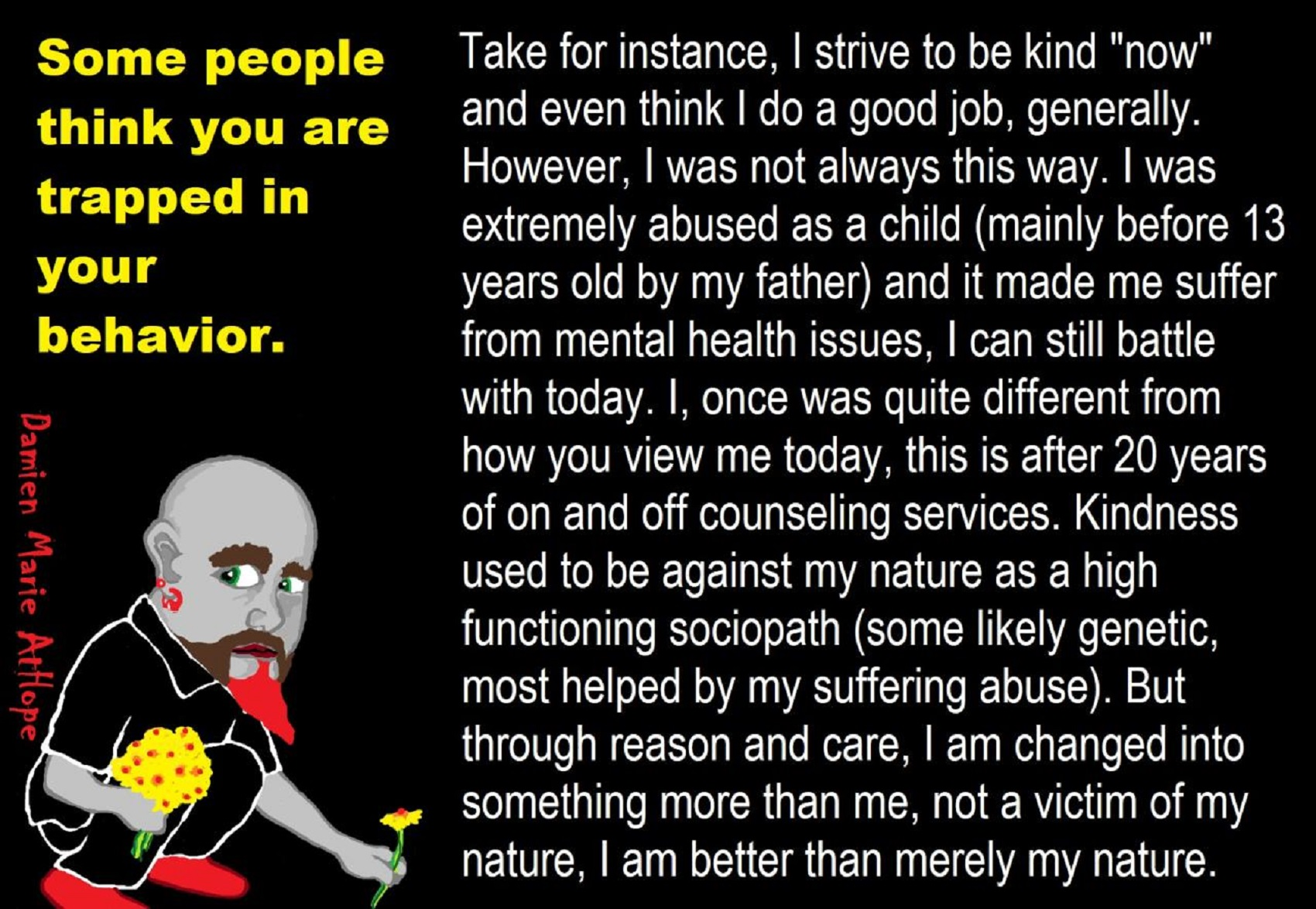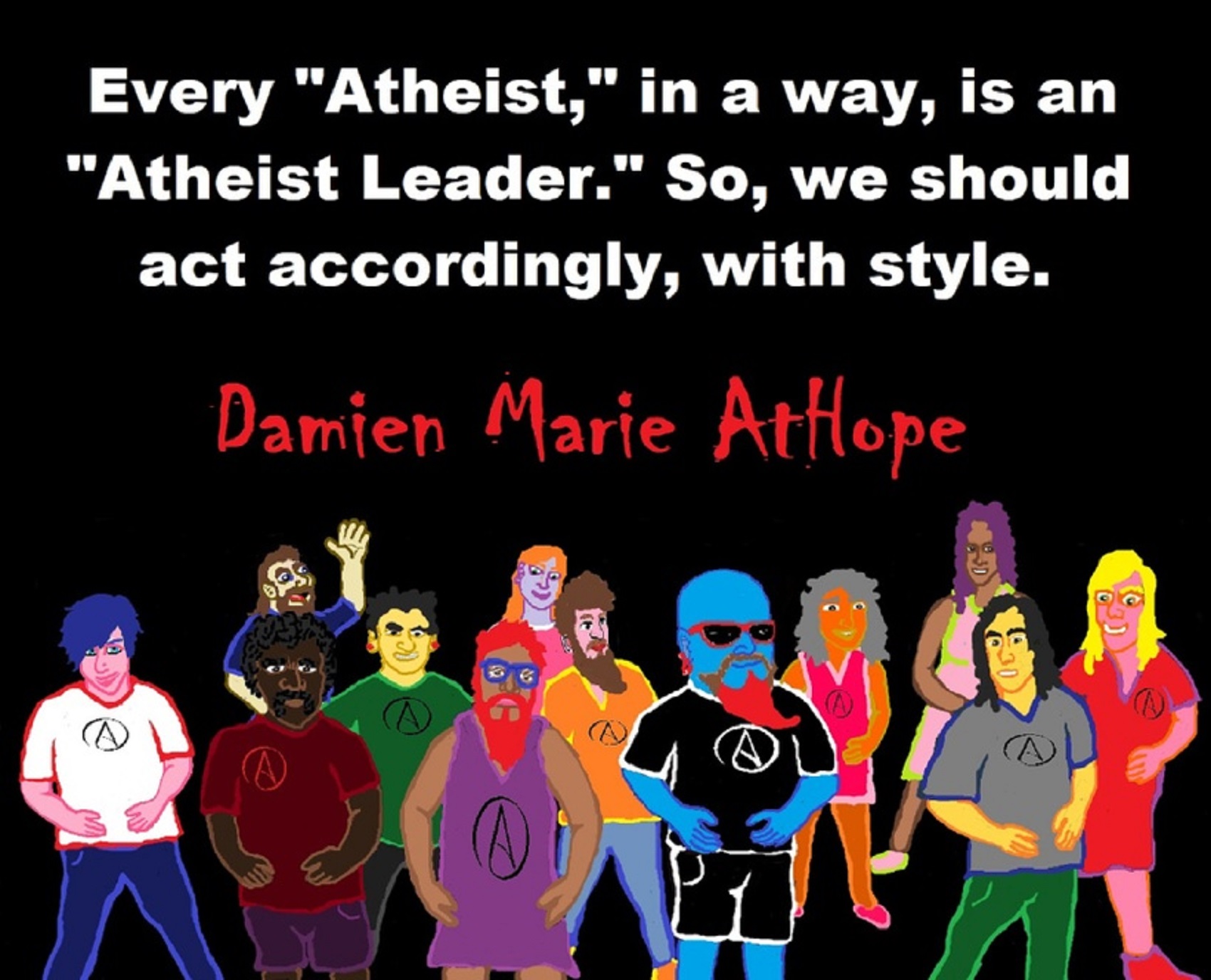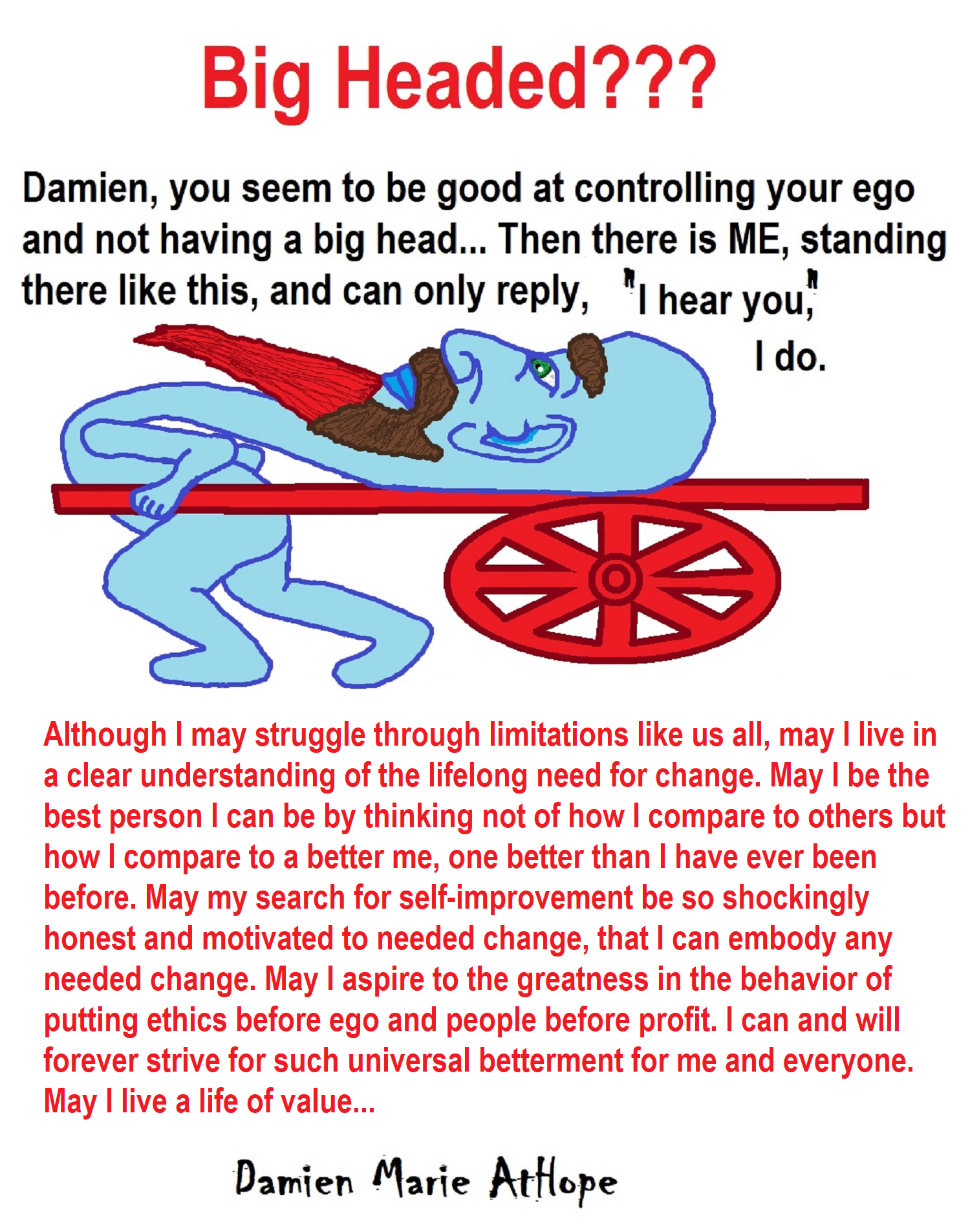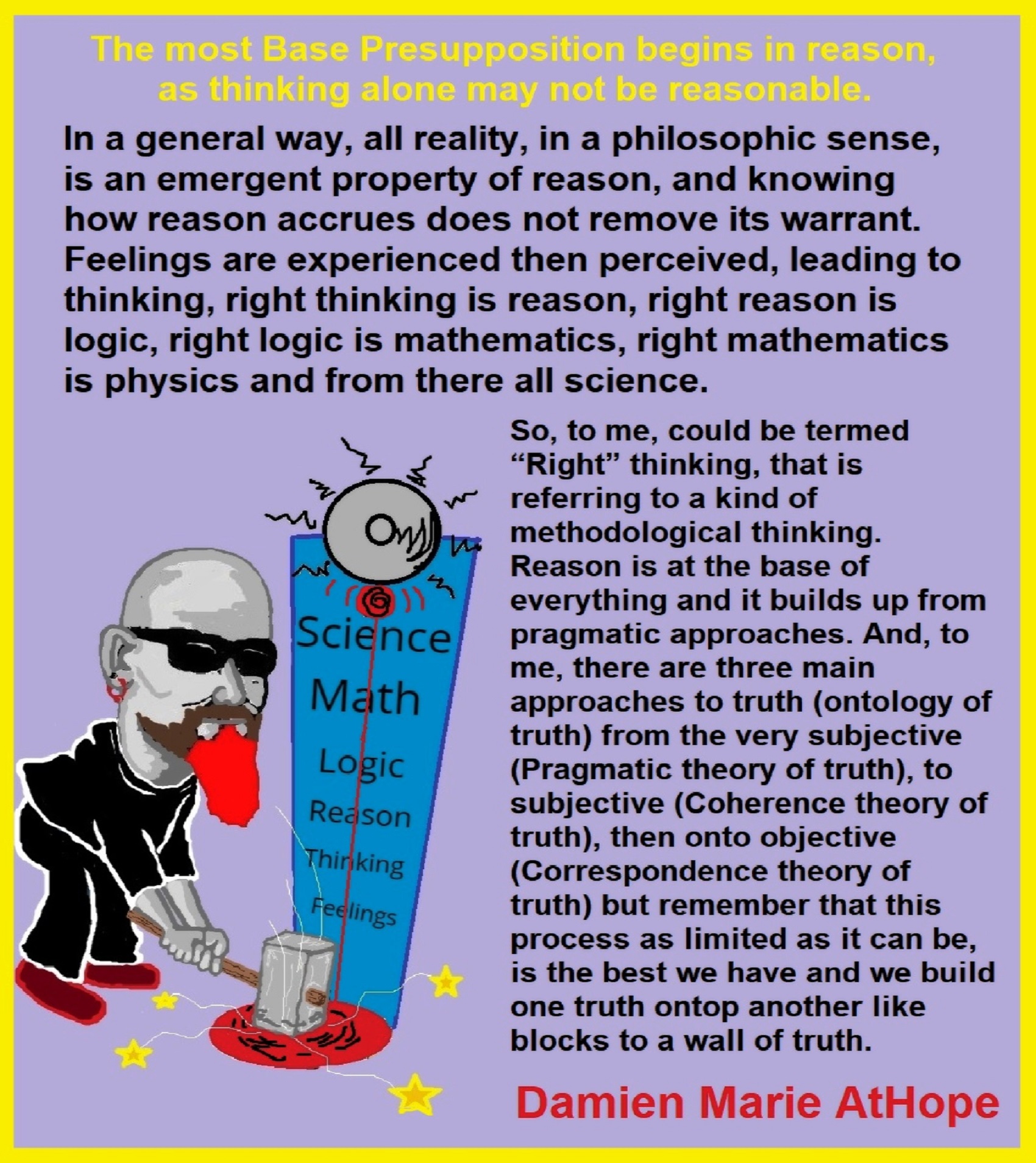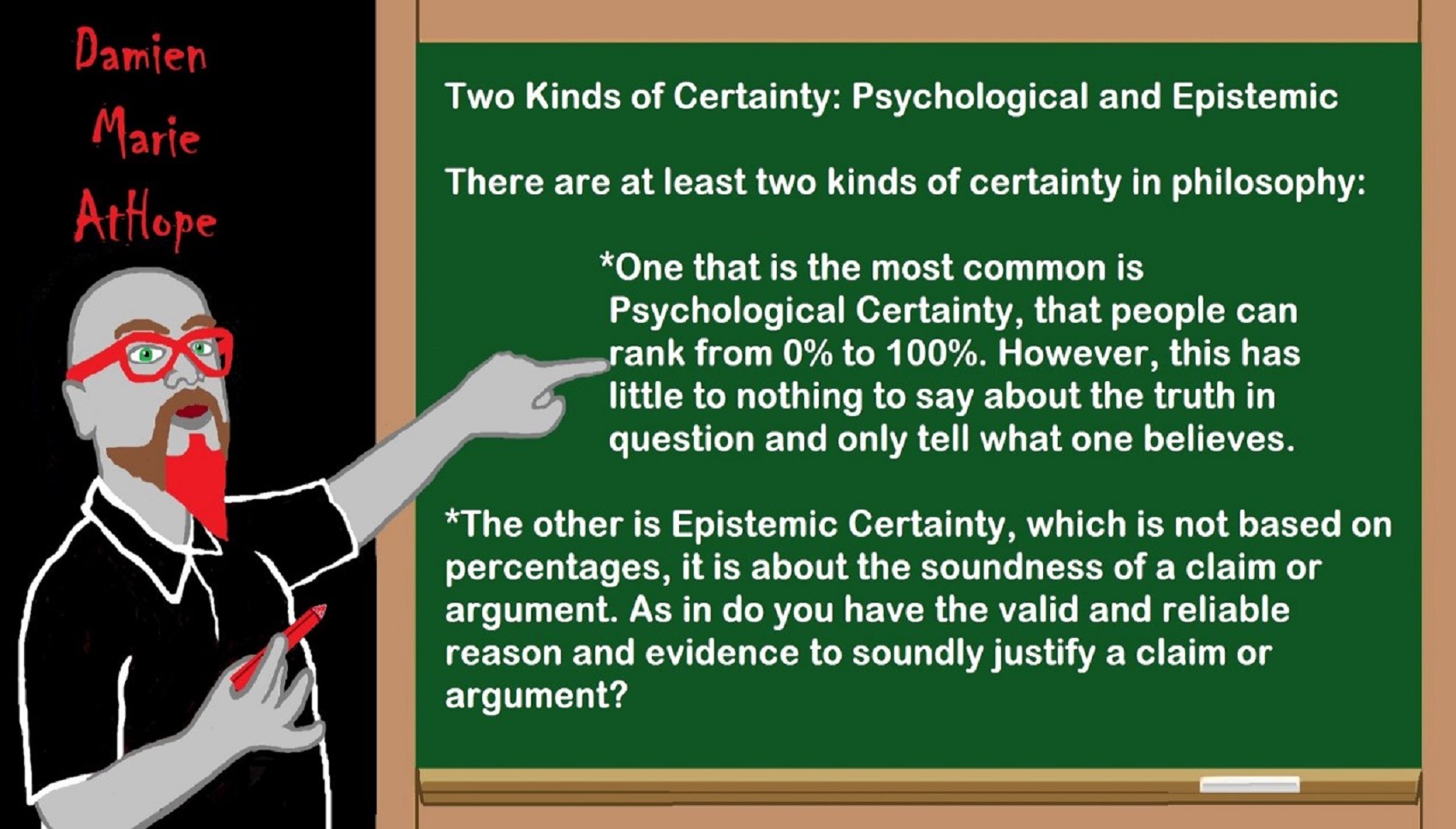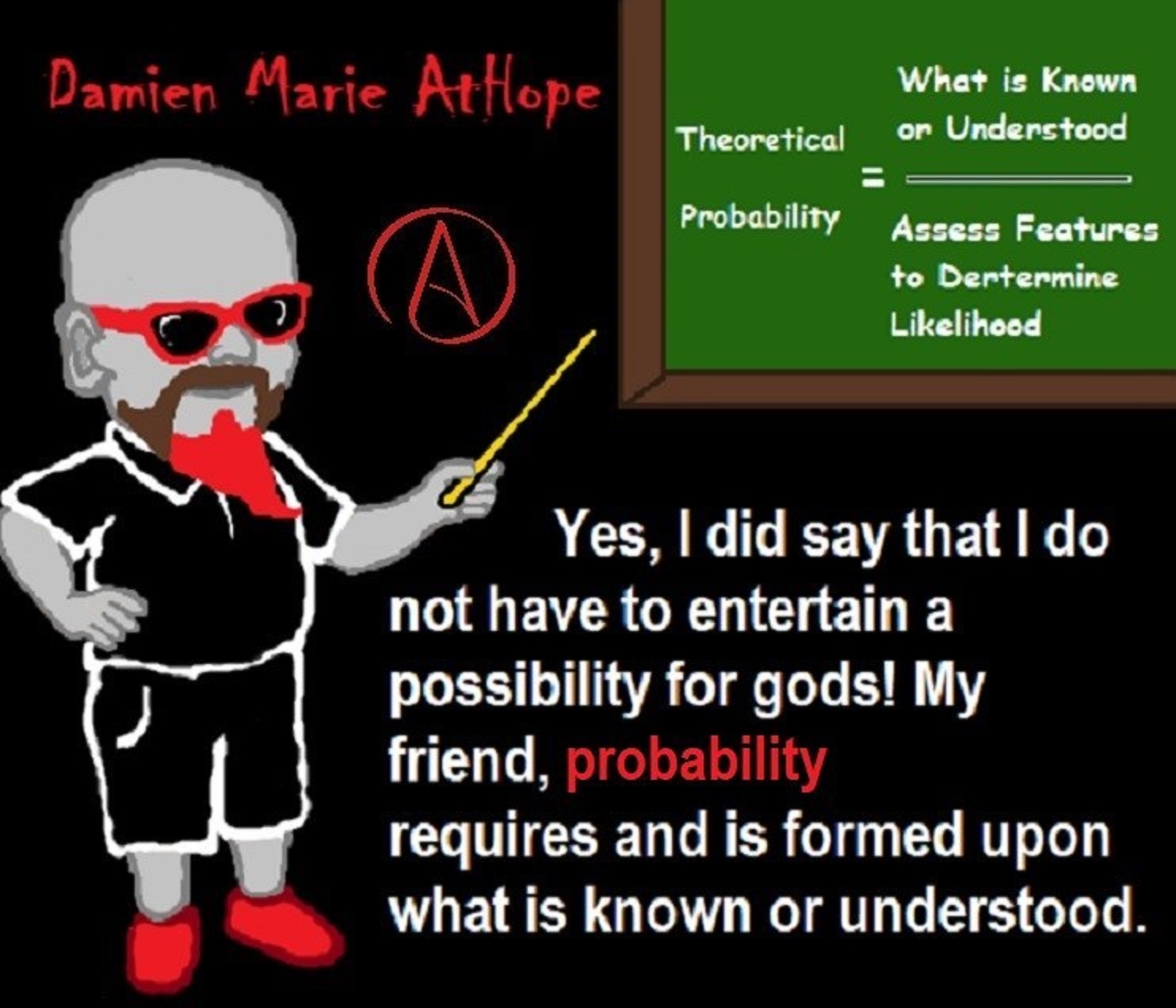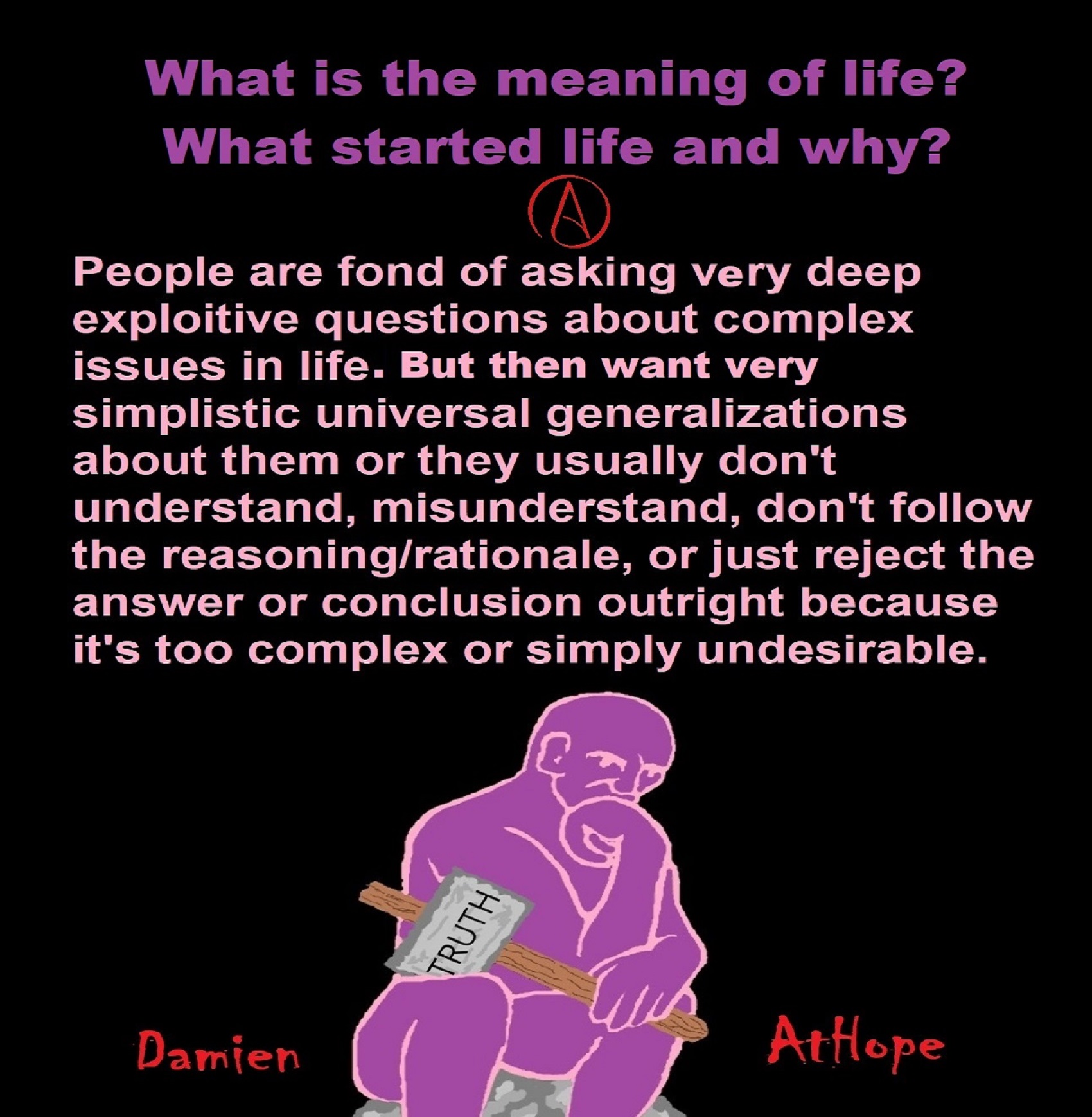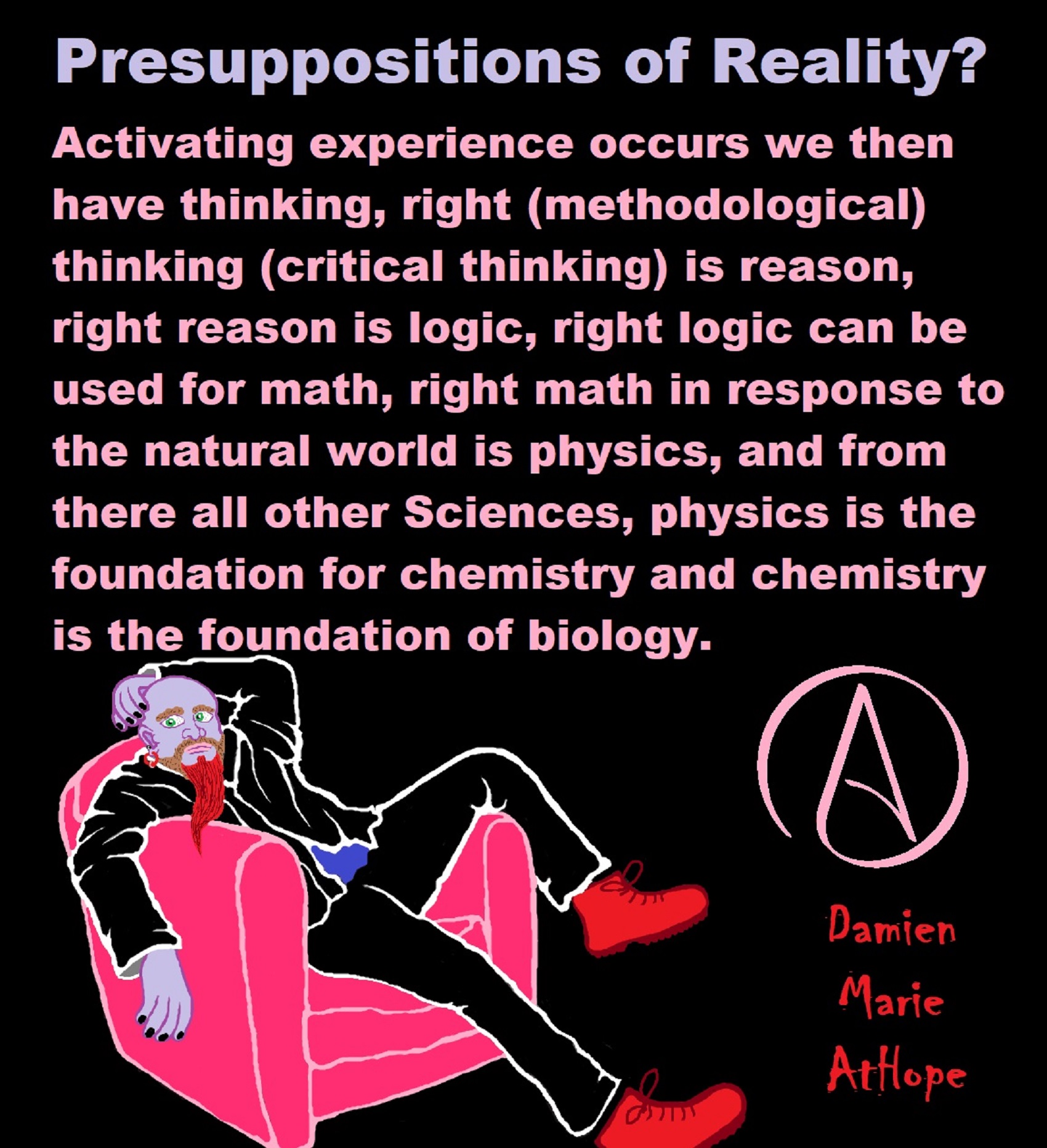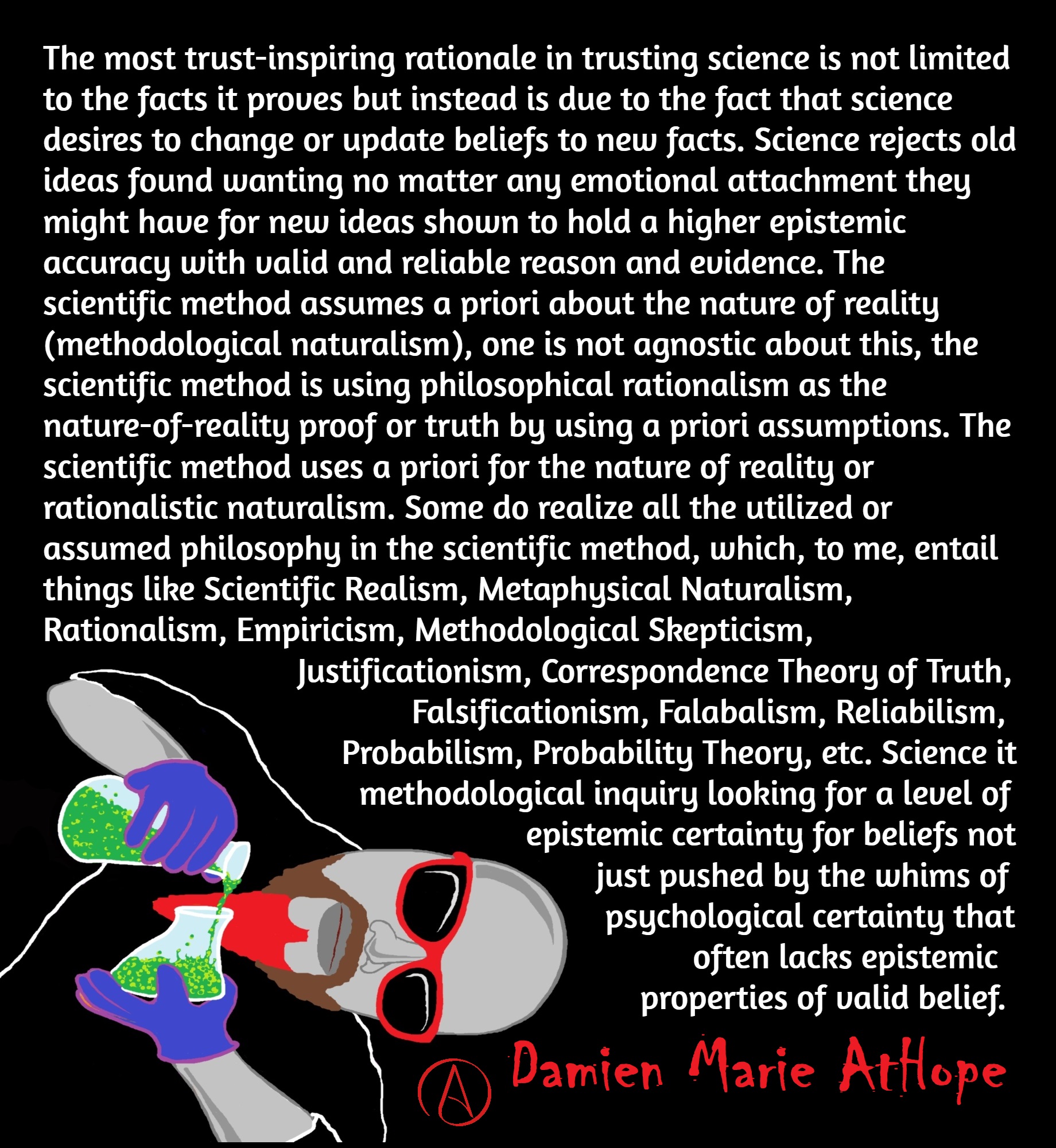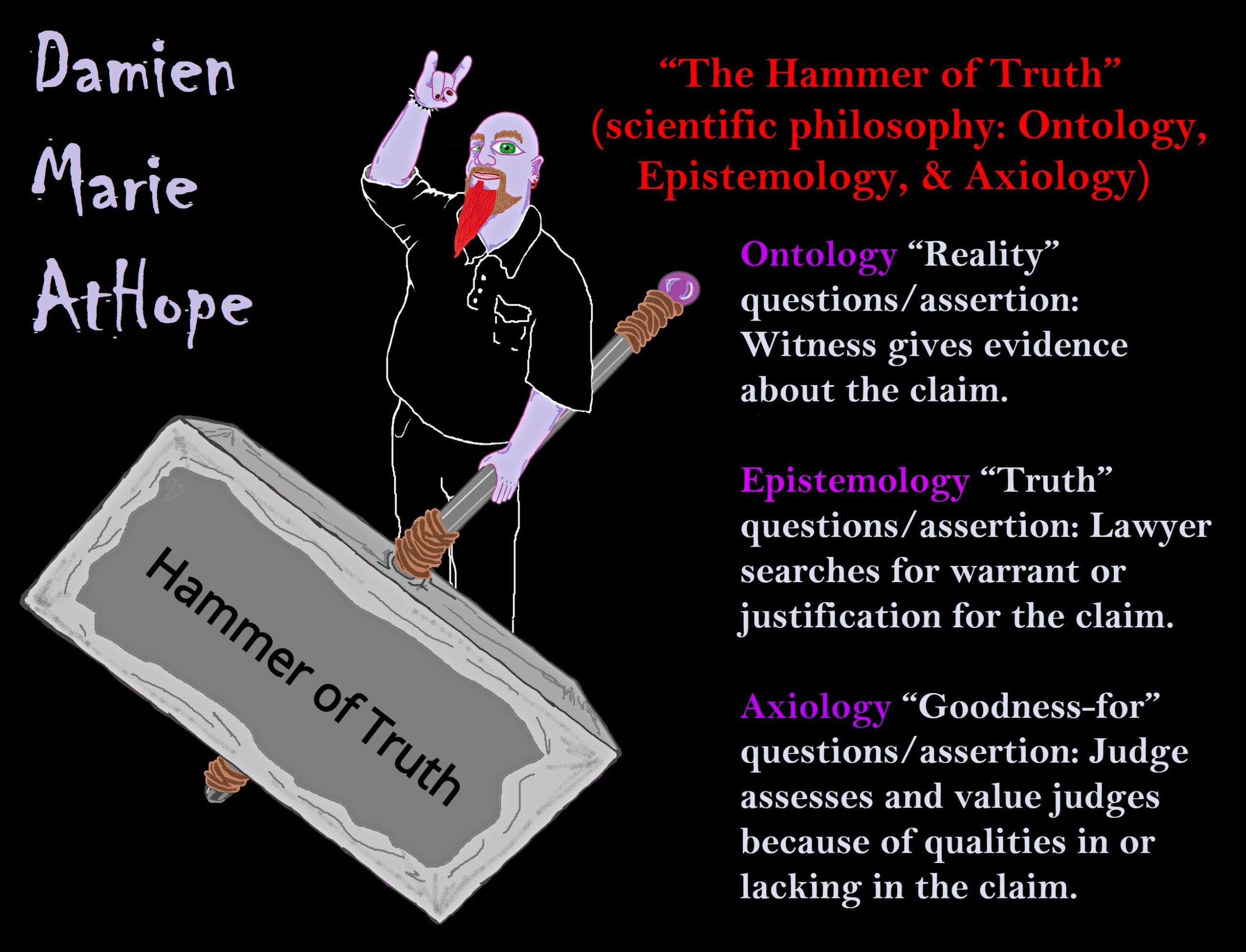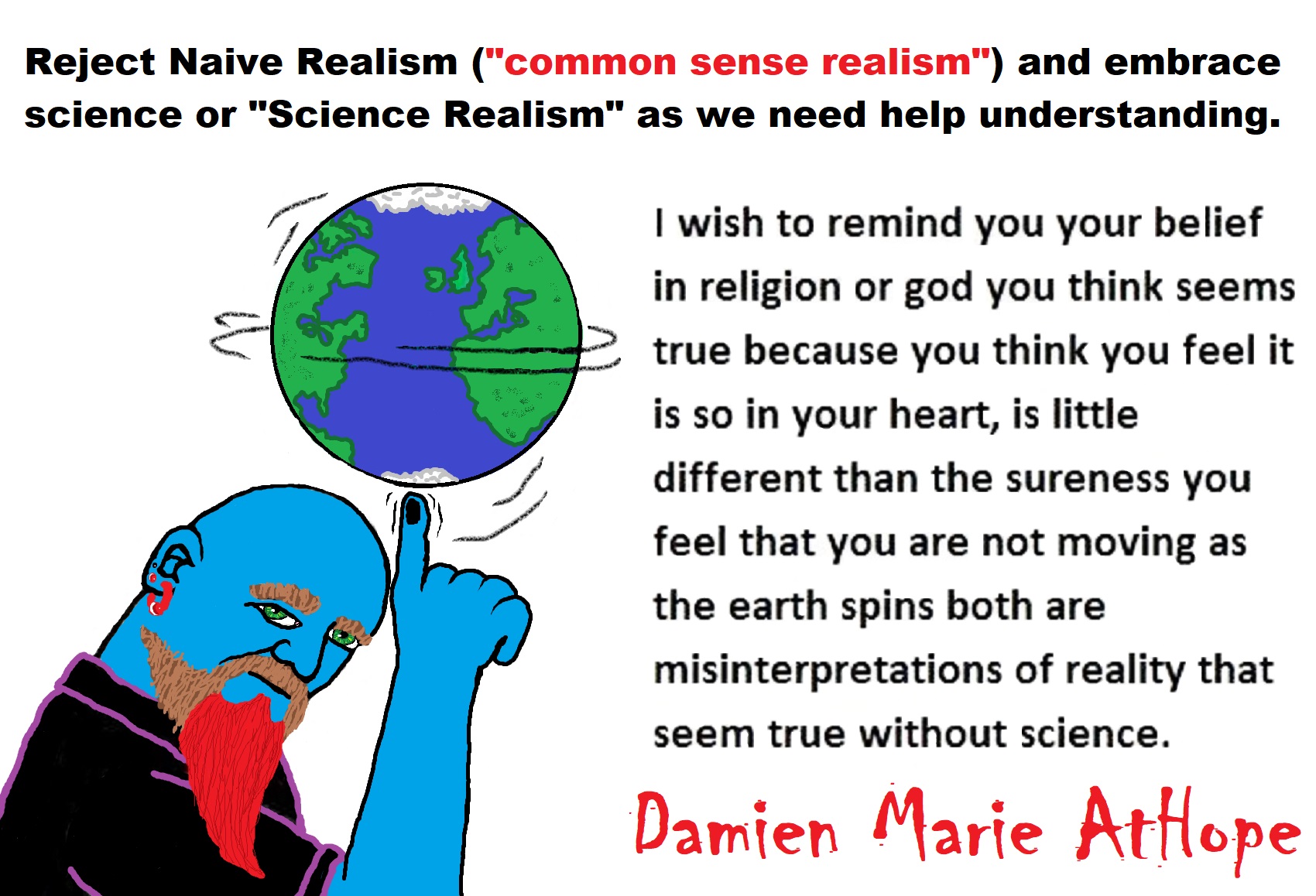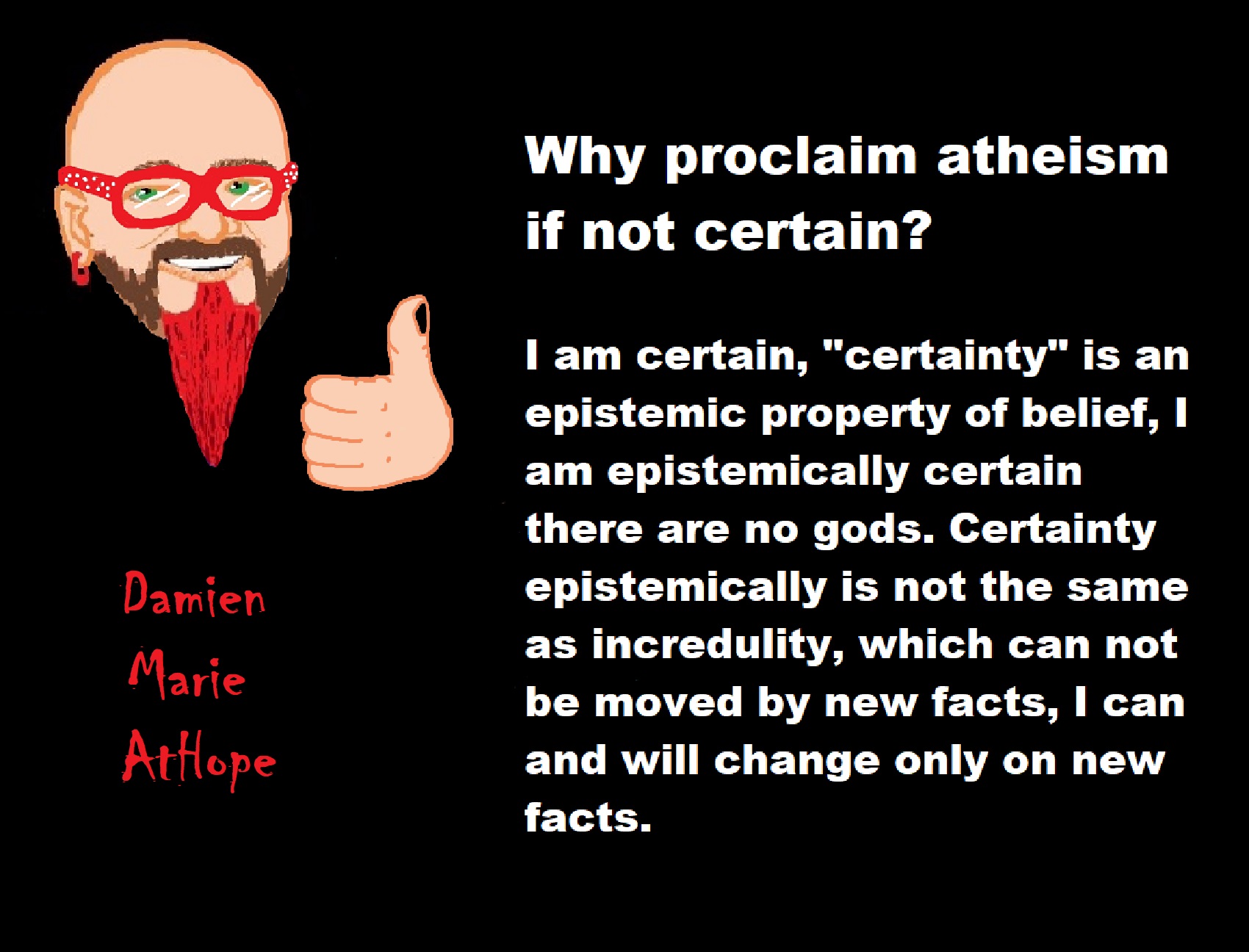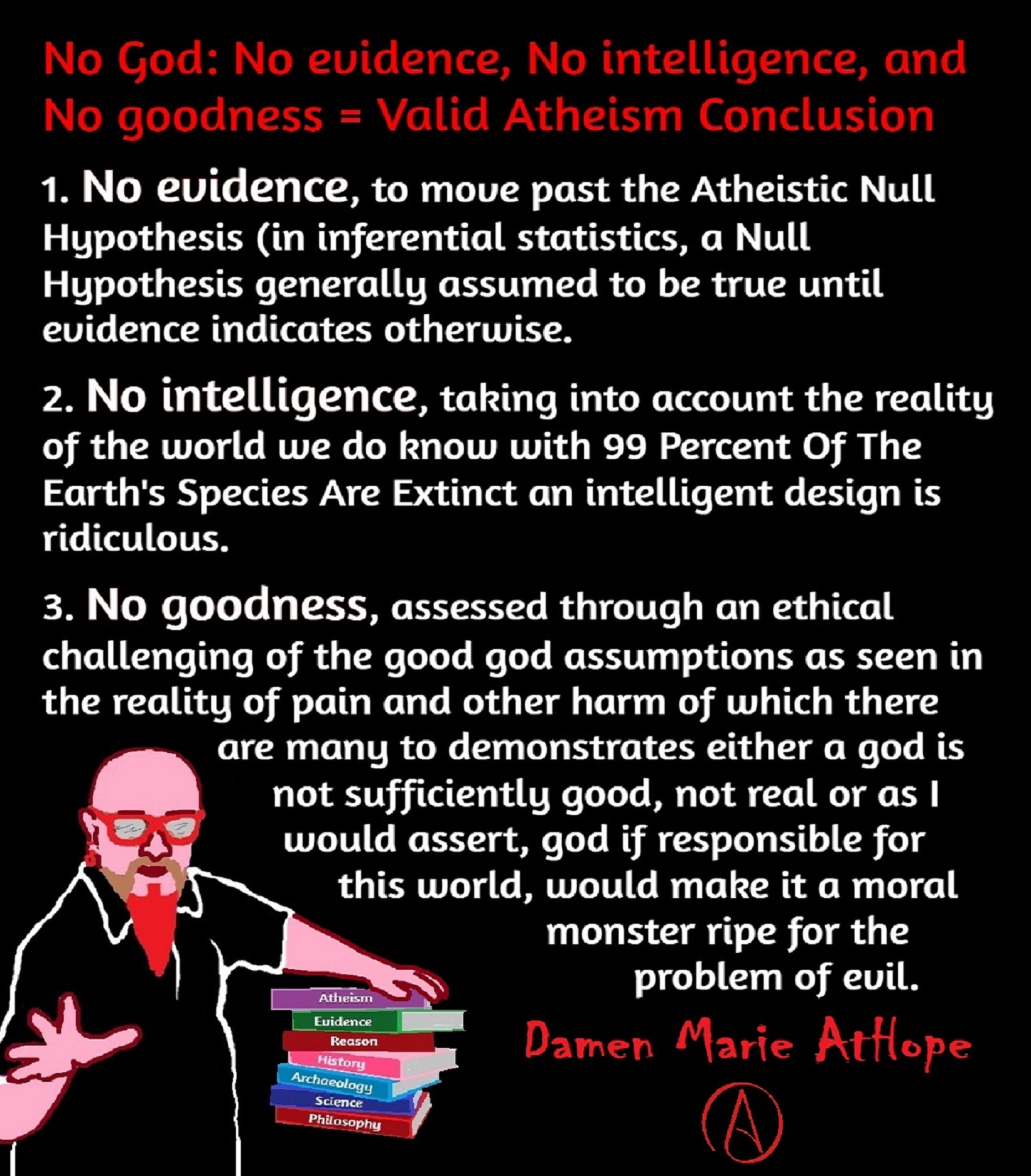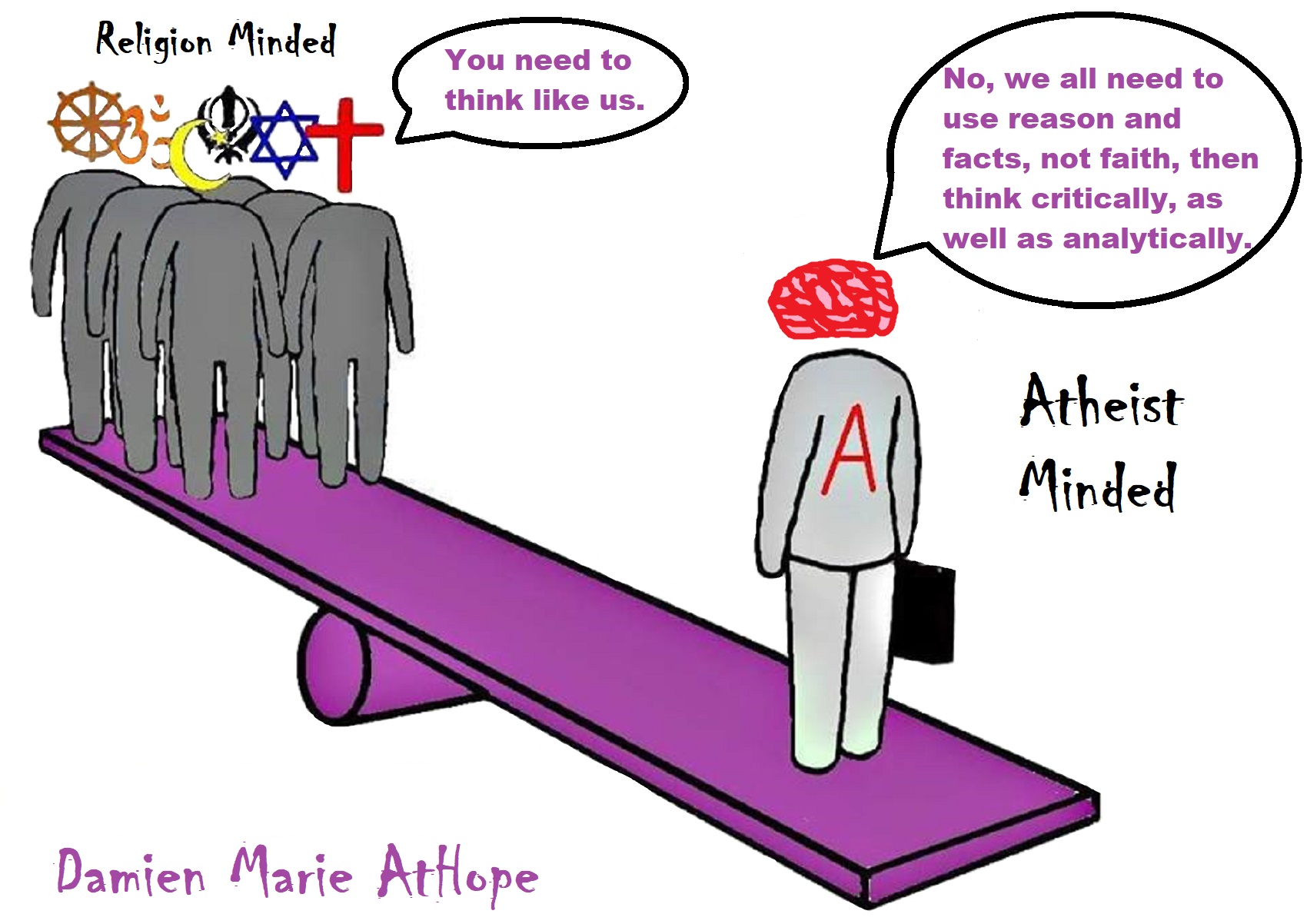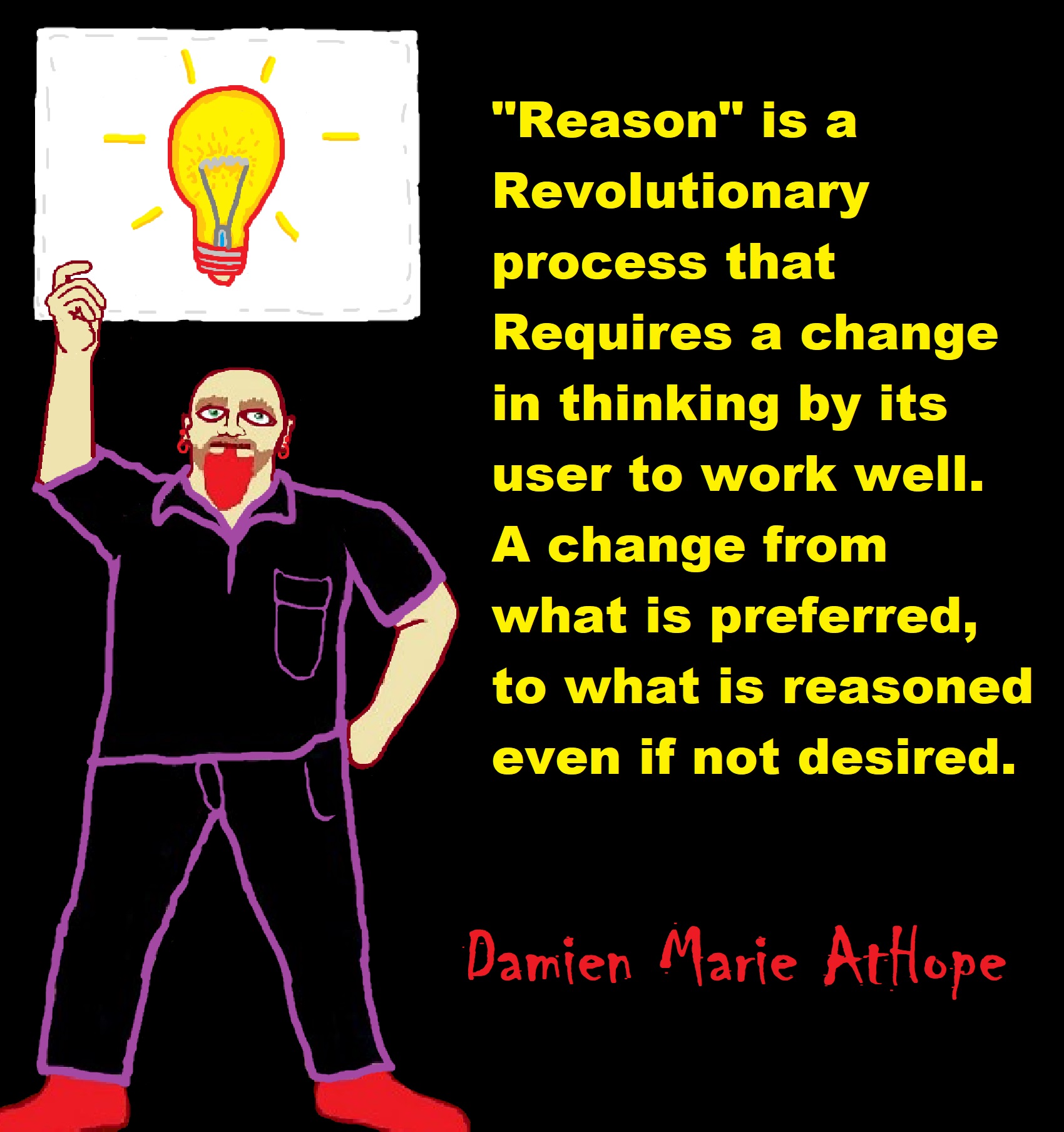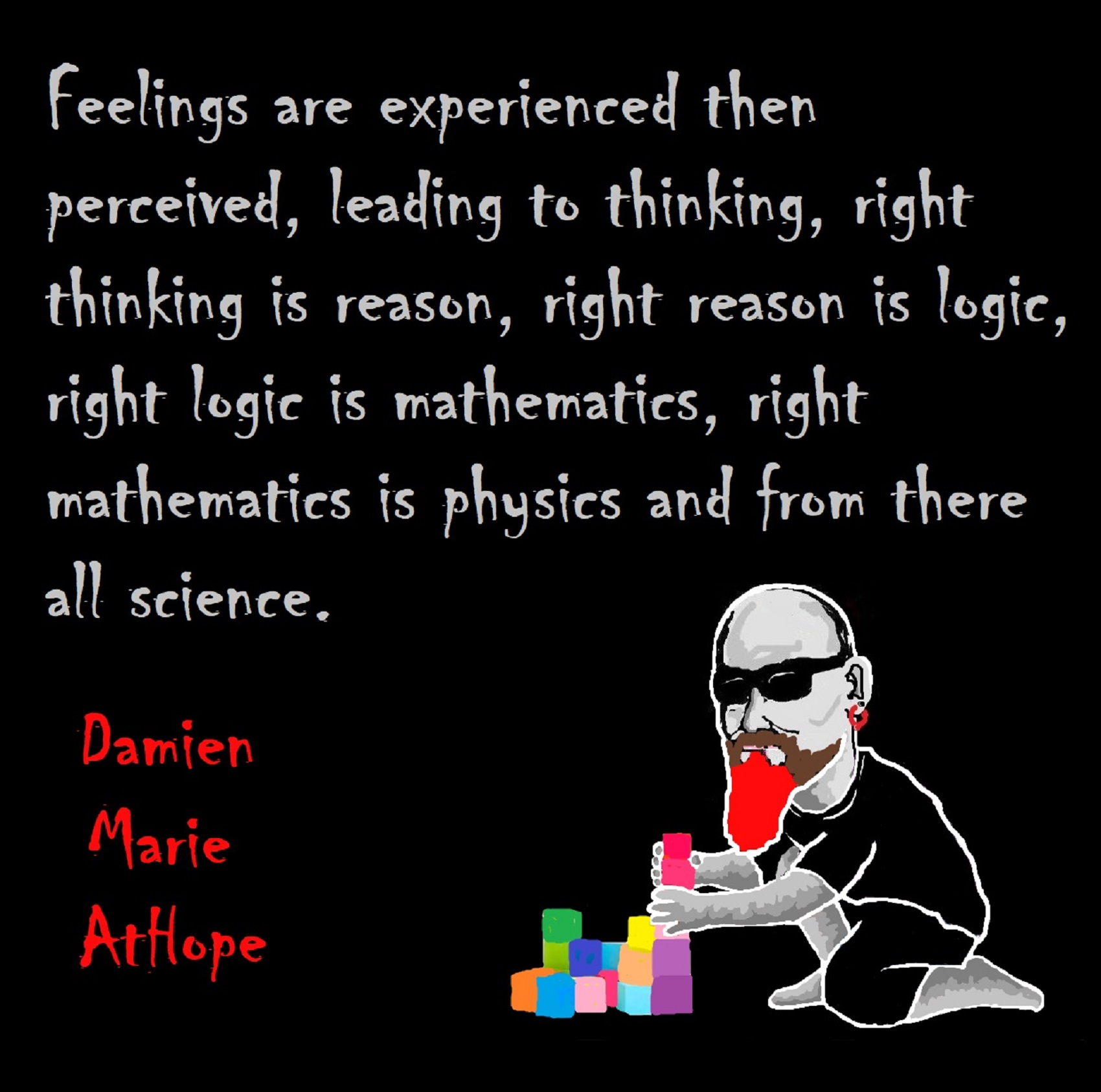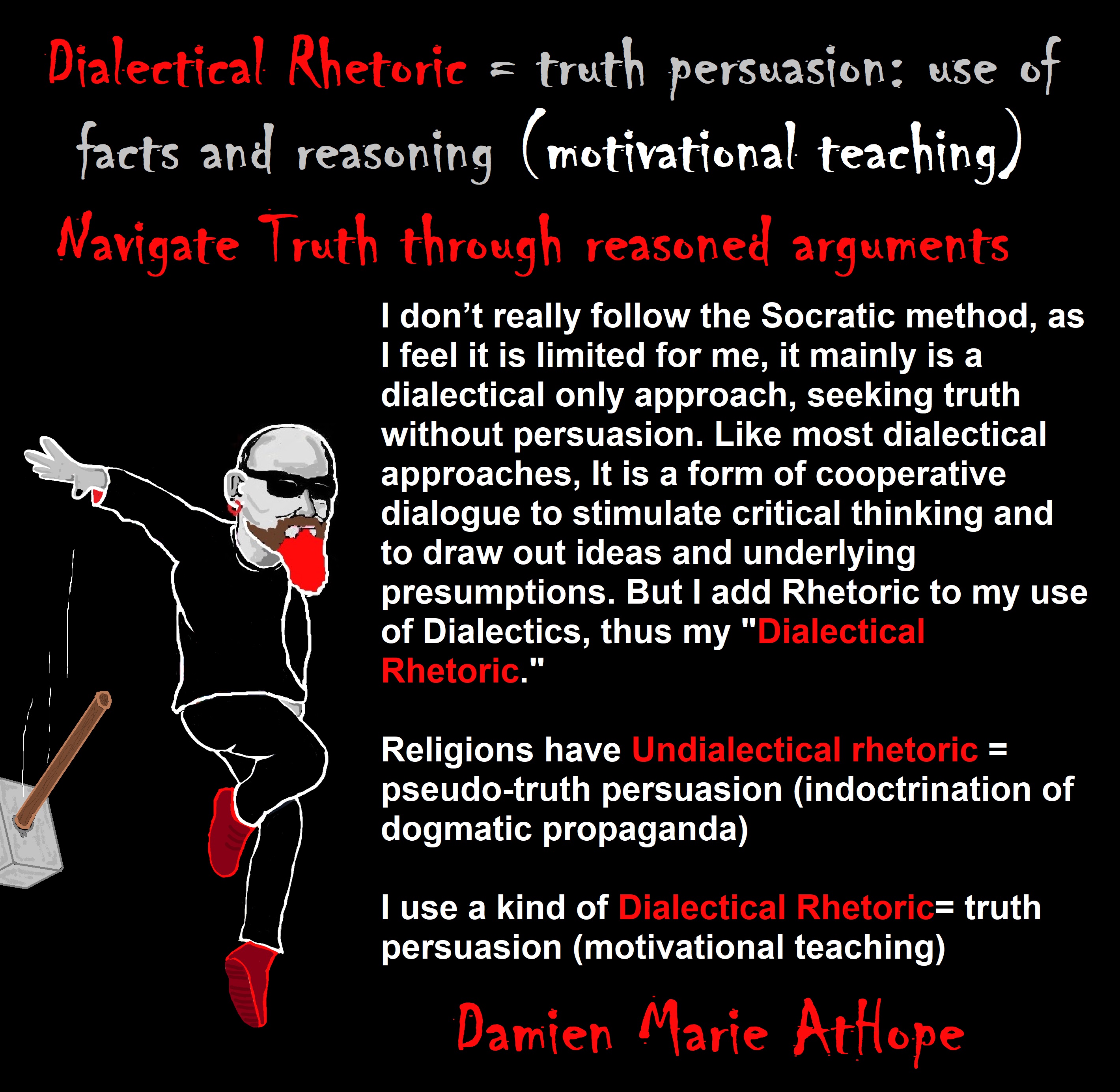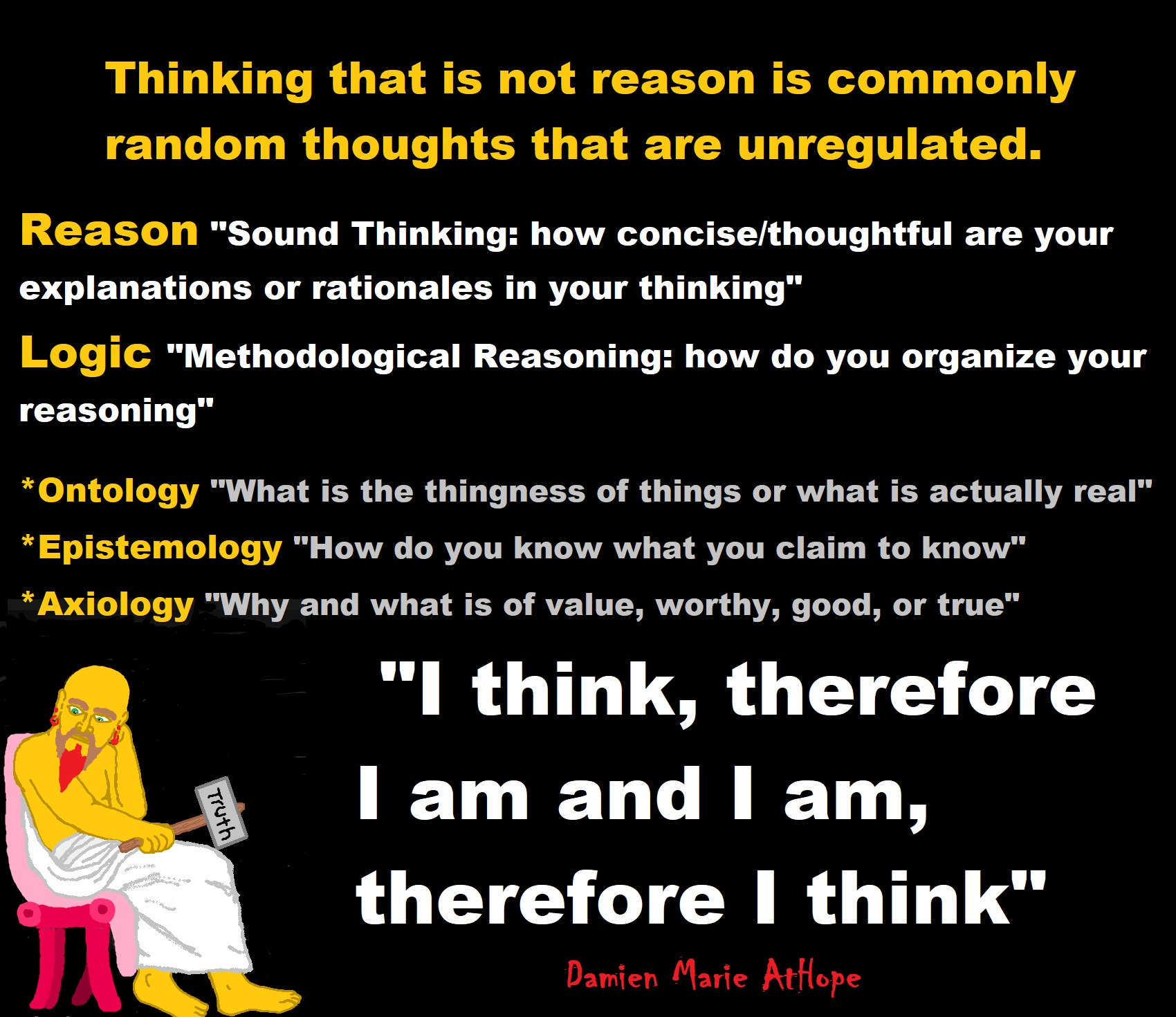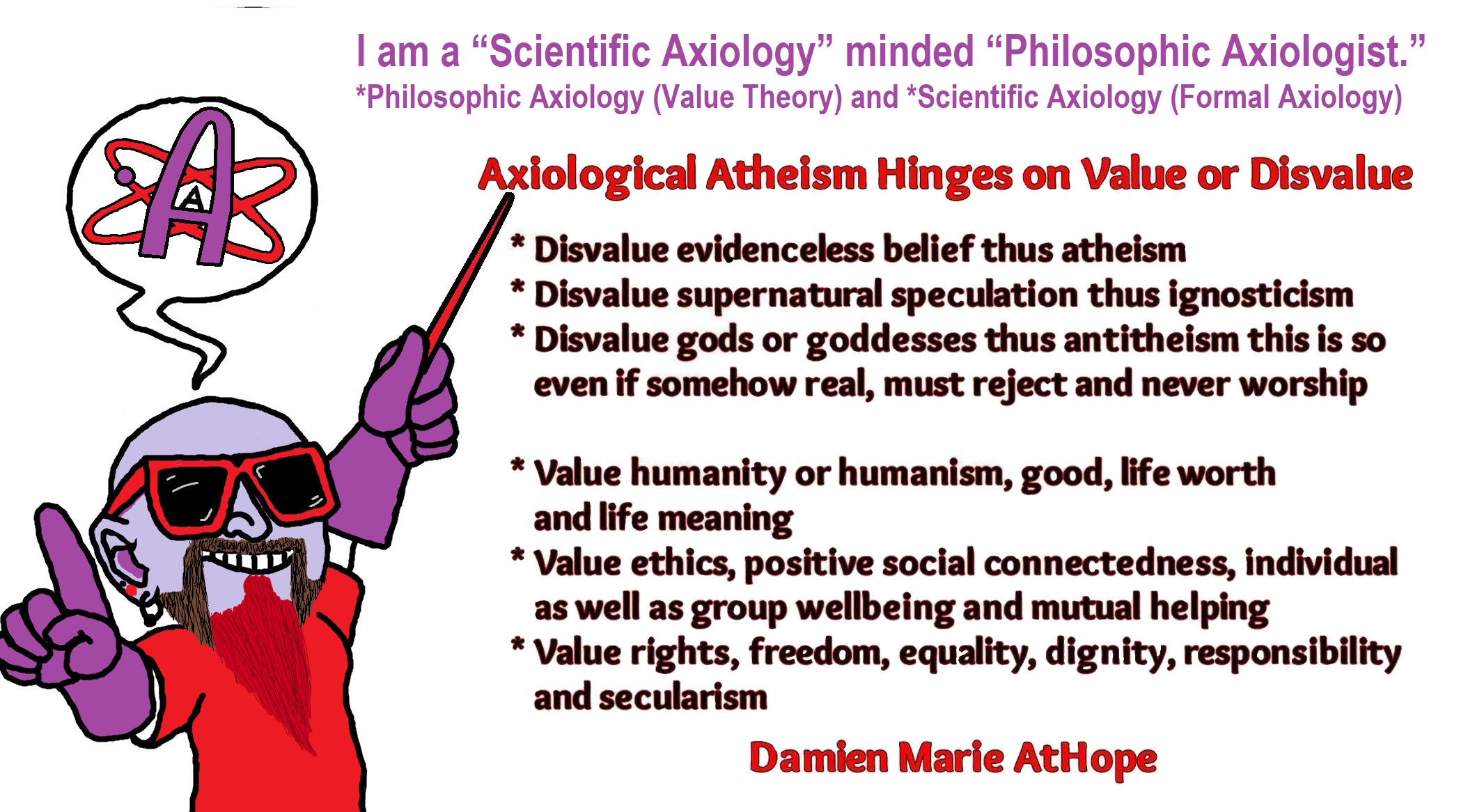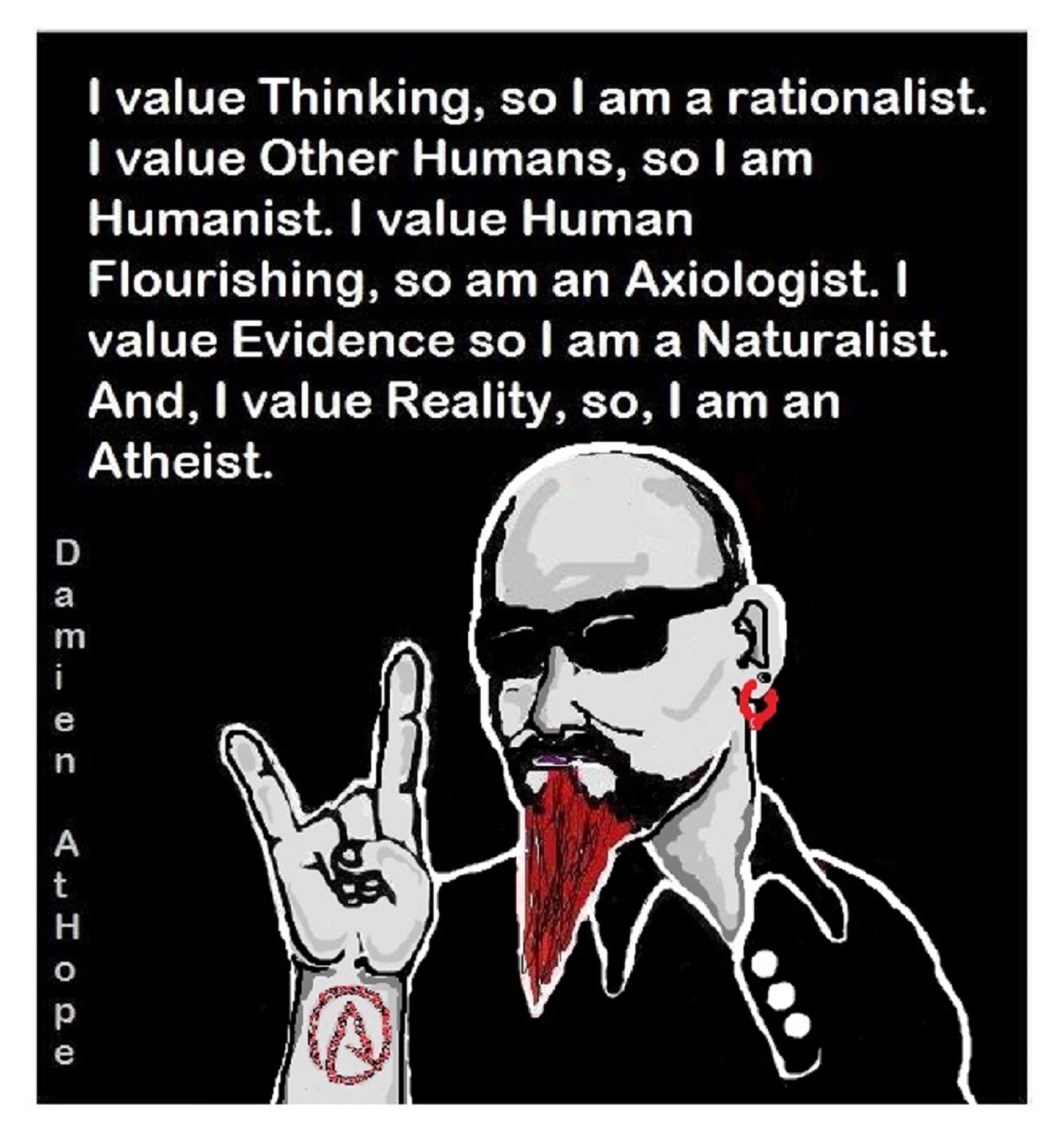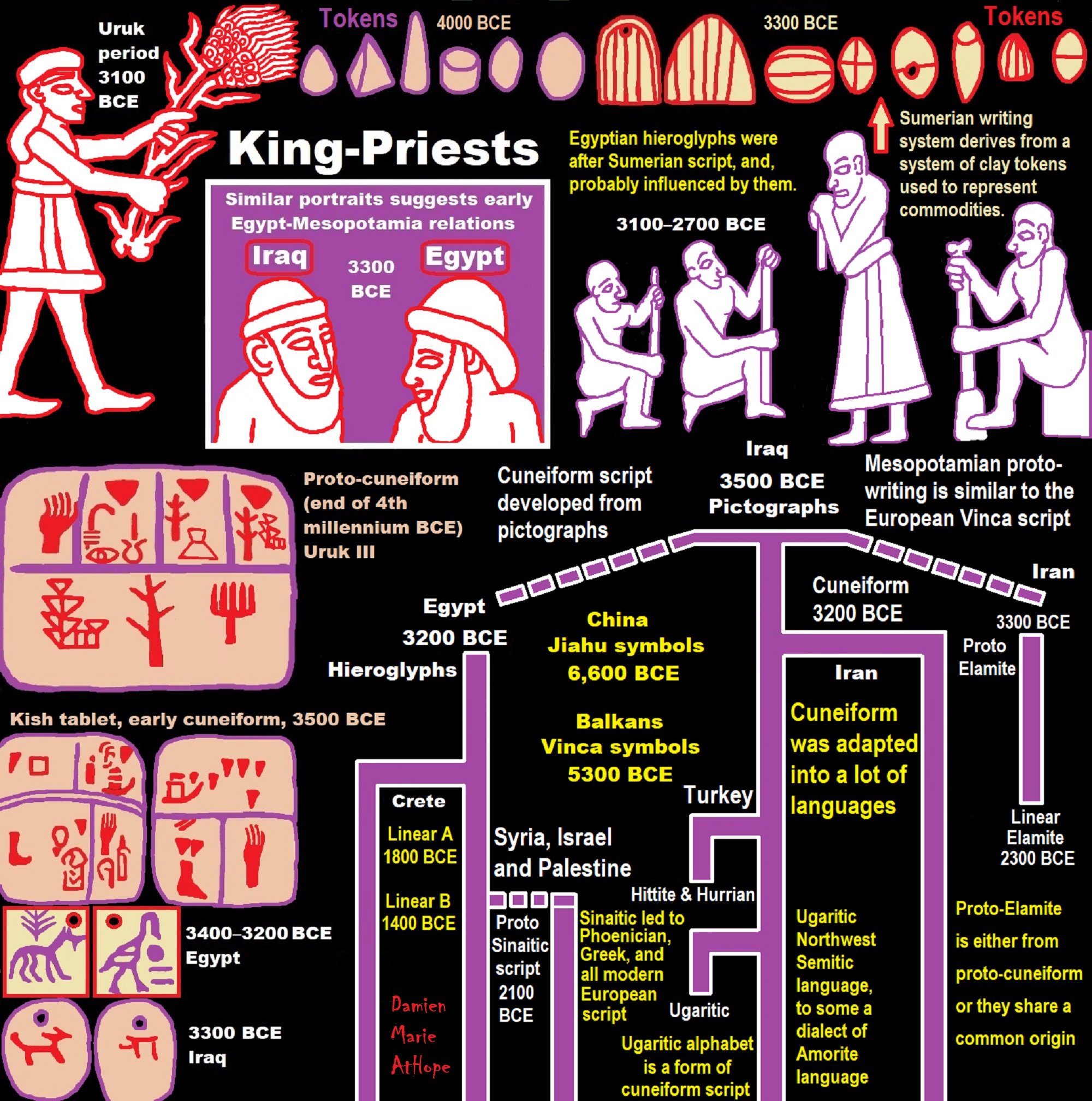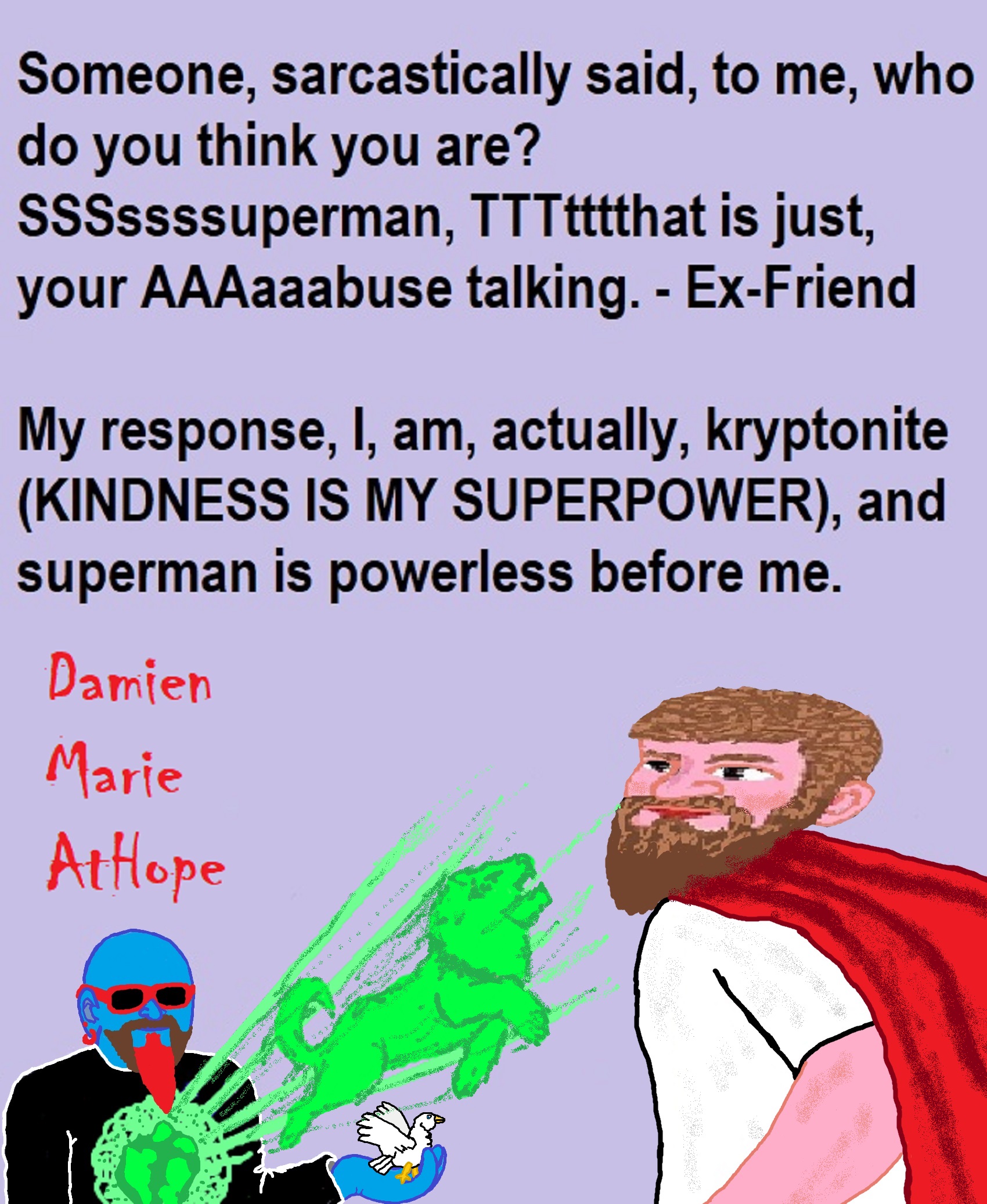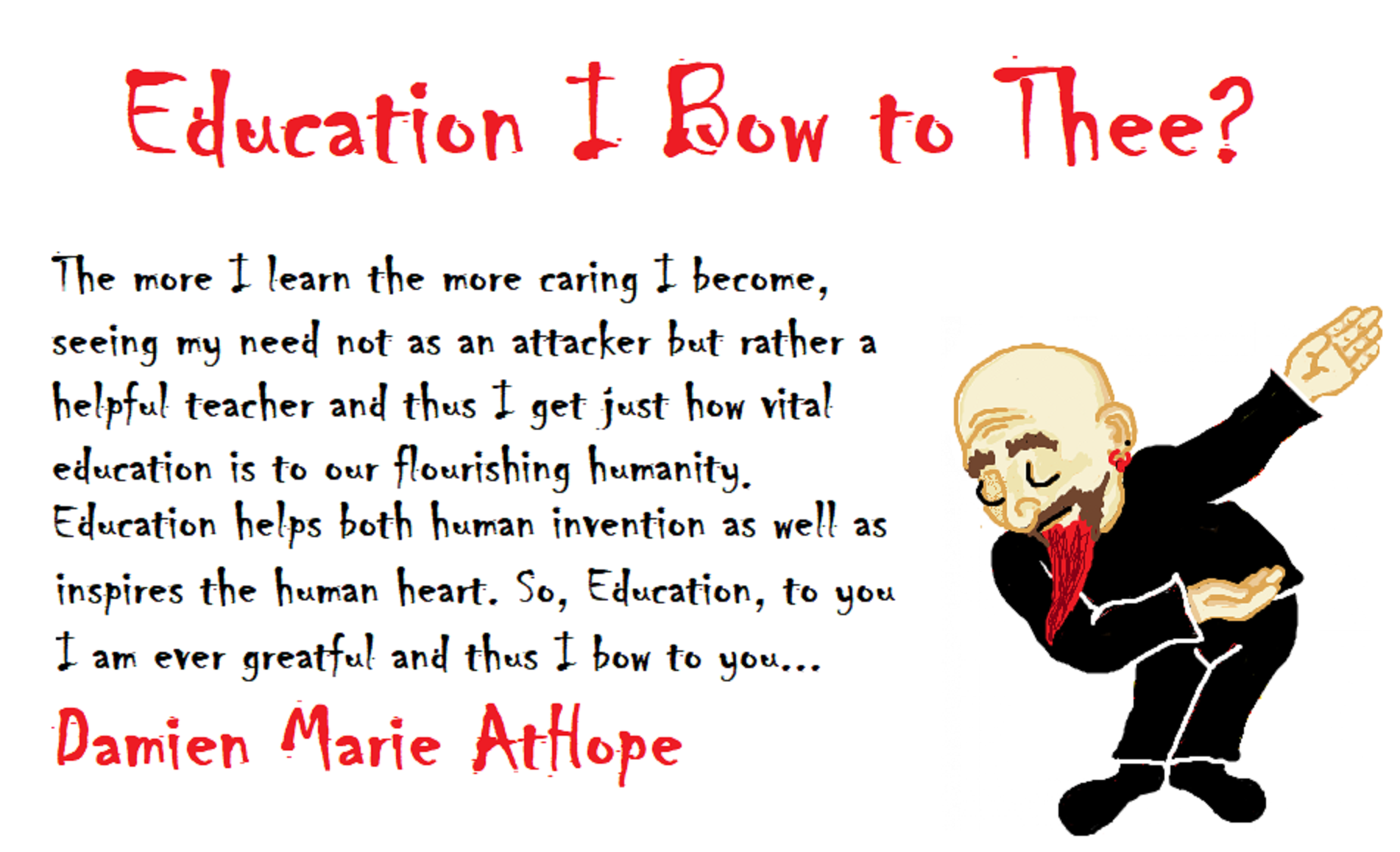
Short story of my life: “You are in Trouble with society, yet Again”
I am an activist, an Axiologist theorist philosopher, and a truth-seeker, self-trained and wise, now come to teach the world how to see with a value consciousness.
I scored at a second-grade level in most of my classes in seventh grade, but my thinking scored at second-year college. Now I am a very Smart and an Autodidactic Polymath.
YOU are an ACTIVIST?
“Damien, I read where you described leaving your biz life to become an activist (offering all my work, free to the world, as a gift, starting 2006). What cause are you actively working on at the moment? And why did you choose to?” – Message
My response, I was in college to be a Christian Counselor. I never actually doubted God of the Bible until turning Atheist in my second religion class in college because I was told it is good to understand others’ beliefs as a Counselor. But I now had a real problem. I am not a Christian anymore, so I had to change my plans. I started my Master’s in psychology, then by 7 classes, I had changed my political beliefs as well, and this.
I was a religious republican rightist then, changed to an atheist anarchist socialist leftist. I realized I was smart so smart in school it seemed too easy. I barely studied (I think better than the stuff I was told to read. So complicated when I see it simpler and more usable as well as a result thus improved accuracy in my styles way more than ALL others. I was so amazing in school others were resentful they had to take classes with me. I was as always quite gifted at psychology, just like reason, critical thinking in general, philosophy, etc., and I had 4.0, great grades. I just became a better person who cared more and was wanting to help make the world more helpful and less hurting. I also champion all kinds of positive things.
So understanding the problem and getting my unique ability I think I will change the world.
I have figured out all the world religions in a general prehistory way and I know more about the evolution of religion than anyone. Including archeologists. And if any doubt this read my stuff and please show in full detail how I am specifically in error in your opinion and we can address it openly. I welcome any and all challenges. I started researching 2006, and I like 12-hour to 16-hour research workdays, I am hardcore in everything I do. I am not even shy a little.
I was 35 years old (49 now), when I realized my purpose was to give all of me to the world, for free, all my knowing and thinking has been free starting 2006. I realized, we rise by helping each other.
Put up or Shut up! I care, do you?
I also volunteered with inner-city youth, in Santa Ana, Southern California, that is the area I got drugs as a youth, as well, so, I cared about that area. I helped and instructed in education and art.
My mom apologized and tried before dying to make it up to me but my father only said, I guess I was not a good father. Nothing else changed and I stopped talking to him at 20 years old.
My sister said I was ruining the family because I told my mom my dad was having sex with women and men outside their closed marriage as there are very religious. Most stopped talking to me once I turned atheist. I see it all the time they seem to have no problem having any religious person as a friend and think they are so good. But when I show up also wanting friends and also don’t care what religion anyone has like them I am hated and shunned, ignored, tolerated, or simply as an unfriendable being and they say I am the one they should question about morality not seeing the unethical way they treat me.
I am often judged too harshly.
Let anyone judge you, you are whom you decide to be. I did just that because I am will to power. As long as you know who you really are, that’s what matters.
If one can make a valid offer of “Contradiction” to another truth assumption(s), it means they have some amount or kind of truth to leverage against some offered truth claim(s) in question.
“Uneducated opinions”, to me, often, the issue is, not to tell people to accept your opinion, that their opinion is wrong, but rather demonstrate or explain it to them so they see it as you. I like saying something like, “can you provide a real-world example?” And, “What is (think they are relating to) and can you please fully explain it? Questions are not just for gathering information, rather, they can be placed in a strategic manner that makes them powerful truth exposing by inspiring thinking about one’s thinking. I think, thus I understand. I am nothing, thus am limitless in my access to power.
I love words, they can build castles in the sky to protect, or dungeons below to torment. I float like air. You breathe me in without even knowing. I am everywhere and yet you didn’t know I was there. I am as a phantom, I am that which you fear, reasons to change.
I give all of me, for free, to the world as humanity is so worth it.
Choosing to do that over wealth was the worst business decision of my life to stop everything in 2006 and become an activist. I have been researching for the entire time as well and now am the most knowledgeable person in the world on the evolution of religion from 1 million years ago to 4,000 years ago. But my book will be out in a year or so. It was also the most selfless thing, I have ever done. I have been teaching the whole world, for free, starting 2006. I am changing the world currently.
I was at a college event and this Professor had just given a 30-minute rant on why atheists were wrong, holy books are very important even if they have horrible things in them they also have good, and he said I have to acknowledge that. I put my hand up, I believe you get me enough by now, I am genuinely the wisest person in most rooms. So, I said, well now we can hear the reasoned opinion from a freewheeling atheist. I don’t respect any book with rules describing slavery, sexism, and child-killing. Yes, sometimes, “value” can be found in scum. But think about it like this, there may always be used food products in vomit and they may even have good nutrition value. However, they are now so contaminated I have no desire to scoop them up and eat them again simply because they may have a part of value left, it is no longer desirable.
“Truth” is a “Value judgment” Claim?
What we generally call “truth” is a “value judgment” claim of what we believe is the reality of the case. So, a claim of truth then like all claims needs some type of supporting justification. The claim of truth’s integrity requires testing of what the theme of the offered truth involves if validly justified it should not be distrusted. However, if the claim of truth’s integrity is not justified then the term “Truth” has not been itself attacked rather it’s the using the word “Truth” that cannot substantiate the term that it should be distrusted because it is seemingly in error or a lie-pseudo truth. Therefore, the user/claimer of the improper use of the word “Truth” but believes in and promotes pseudo-truth because it does not have a sound basis in logic or fact demonstrate the validity and reliability of their truth assertion.
I slip across time, a wing of hope fans my way. I send the steps slipping as I run trying to escape the beast of time nipping at my heels. Freedoms-tear drops into me and I am reborn into just another you. Time is up, now we are at the beginning, where one finds truth.
“In traditional logic, a contradiction consists of a logical incompatibility or incongruity between two or more propositions. It occurs when the propositions, taken together, yield two conclusions which form the logical, usually opposite inversions of each other. Illustrating a general tendency in applied logic, Aristotle‘s law of noncontradiction states that “It is impossible that the same thing can at the same time both belong and not belong to the same object and in the same respect.” And in modern formal logic, the term is mainly used instead for a single proposition, often denoted by the falsum symbol: a proposition is a contradiction if false can be derived from it, using the rules of the logic. It is a proposition that is unconditionally false (i.e., a self-contradictory proposition). This can be generalized to a collection of propositions, which is then said to “contain” a contradiction. Adherents of the epistemological theory of coherentism typically claim that as a necessary condition of the justification of a belief, that belief must form a part of a logically non-contradictory system of beliefs. Some dialetheists, including Graham Priest, have argued that coherence may not require consistency.” ref
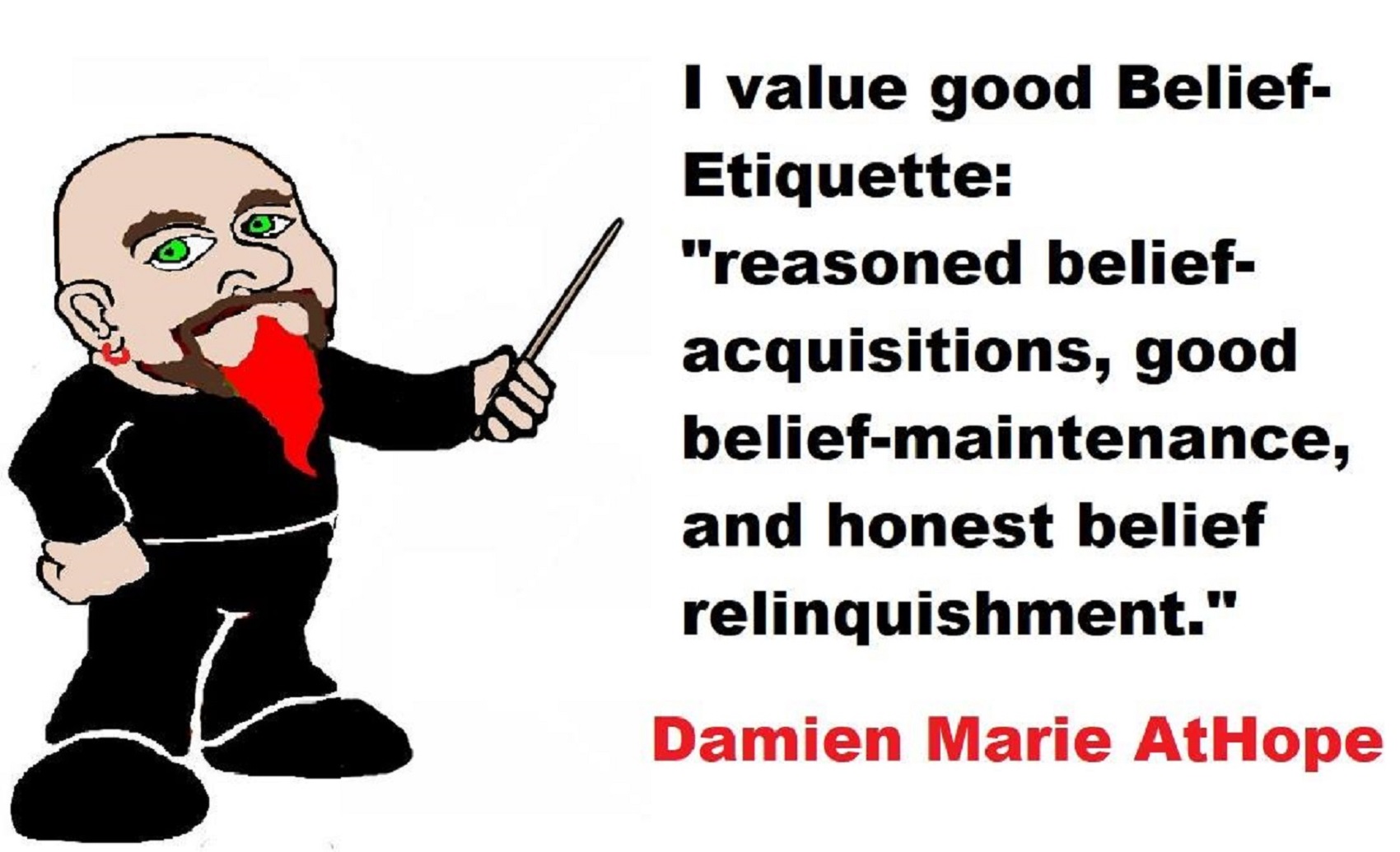
I am a “Scientific Axiology” minded
“Philosophic Axiologist Theorist”
I don’t expect people to be me or think like me, I only demand people in my life are good humans.
I have an intersex body, a genderqueer mind, and I present as a male.
I use he, him, or man, not as I see myself as one but more just because I am attracted only to cis-women. So if I say I am heterosexual people are hearing my feelings it’s just not the most accurate label for a mixed gendered person like me. If I even mention my being genderqueer everyone thinks you must be gay or bi. I am not. I am just ME…
Do I think outside the Box? Don’t make me laugh!!!
I love when people say, “you are a philosopher” I bet you think outside the box. Me, so far away, I only receive this late message from carrier pigeon, on the mountain top, of which I think from, allowing me to look down on your small insignificant land blow, where something called boxes, simulates the great unthinking called society.
Do I know Truth, are you joking, DO YOU!
A claim of truth is a title offered relating to a presumed belief holding a proposed substantiation of a value-rich entity in the factors or aspects to which one assumes the “label” truth and this “label” assures a positive conclusion stemming from a value judgment that is called “truth” was applied to relate to.
I am nothing but me, myself, and I
Yes, I am nothing but me, myself, and I never read for fun, and no Facebook or some other social media are not fun for me other than connecting with friends. I almost exclusively use it “all about” my activism, my entire like is activism. I am for educating the world for free so I offer all my knowledge for free as my gift of love to a world in such desperate need. How, as a good human, can anyone, stand silent as our fellows suffer and die????????????? I have never read any book on logic nor any philosophers either. Not even the one that invented formal axiology that I respect. I don’t read for fun so I read as little as possible. I would never start with the bias, of understanding any idea through the biased lens of a personal thinker. I study ideas and everything you read from me is arranged only in my mind no other thinker has written nor alive. I do get good ideas or advice from my also amazingly brilliant wife who is my philosopher leader and hero. If you like my thinking cool, if not, also cool, I don’t need you to like it, or even believe it, but please in all you do, please be kind.
I often skim information content, to understand and master the big picture often hidden in what are the architectures of meaning and language used to assess for myself what is needed…
I am nothing but me, myself, and I
Yes, I am nothing but me, myself, and I never read for fun, and no Facebook or some other social media are not fun for me other than connecting with friends. I almost exclusively use it “all about” my activism, my entire like is activism. I am for educating the world for free so I offer all my knowledge for free as my gift of love to a world in such desperate need. How, as a good human, can anyone, stand silent as our fellows suffer and die????????????? I have never read any book on logic nor any philosophers either. Not even the one that invented formal axiology that I respect. I don’t read for fun so I read as little as possible. I would never start with the bias, of understanding any idea through the biased lens of a personal thinker. I study ideas and everything you read from me is arranged only in my mind no other thinker has written nor alive. I do get good ideas or advice from my also amazingly brilliant wife who is my philosopher leader and hero. If you like my thinking cool, if not, also cool, I don’t need you to like it, or even believe it, but please in all you do, please be kind.
I often skim information content, to understand and master the big picture often hidden in what are the architectures of meaning and language used to assess for myself what is needed…
No one but teachers even saw me as being of value.
I deeply love teachers.
Even if no one ever supports me, I support ME,
and I always have, I have my own back!

Are YOU with Me?
I see myself as a teacher teaching the world. I do see myself and others “helping others” as equal=partners, in championing humanity. I am trying to help the world hate less and be kind more. Are you with me?
I Float Free
I am like “air”, there and even important to life, yet unseen and not really a part of anything. But yet, still connected to everything. I neither do things out of obligation nor do I expect anything from others out of obligation. So nothing someone does or says, in how I navigate a phantom mind flowing free in and around all. So little is not manageable, to me, is my general thinking, to handle comfort, uncomfort, or discomfort. I also want to be there as much as I can for others whom I care about in my humanity family. I strive always to do no harm and do good.
I try to help others, simply, as a main feeling, because it makes me feel good doing so. I know, I am odd. lol
I am a friend to the world. I welcome all good humans from homeless to people in power, to be my friend.

We need a world of kindness and understanding, not this world of harm and hate. I Laugh at Your World below and their Disgusting worship of Strength as power…
I am disabled, too much, to do my past Truck Driving job, so no work. I am what others could call poor or not wealthy as well as weak, being disabled.
But I bet you would be damn hard-pressed to find people that think Damien is weak. I took your shame I took your abuse, I took you looking down on me, I took your carelessness, and yet I am will to power, a beast in full command. I have been developing into the superhero I am now, I am a dragon who has been hiding in a cave learning all about everything, not I descend on the earth in flames and thunder as I break all that is old to create what is needed and new.
“Damien, I am glad you help stop the spread of lies. What do you say to people if they say religion isn’t hurting anybody? Because I get people who say that and don’t know how to respond.” – Commentor on YouTube
My response, “isn’t hurting anybody?” So, No fanatics, in any religion, are a threat?
Here read this:
“My Caring Firebrand Atheist Activism Training, as Easy as 1 2 3” https://lnkd.in/g5y4WEm
When Someone Fails in a team:
Self-directed people say, to themselves, “What did they do wrong?”
Other-directed people say, to themselves, “How can I help?”
Comfort, Uncomfort, and Discomfort?
If we, only make people feel comfortable, that can be a good behavior, when being friendly. But when you want true friends, one will always have to manage the comfort level through the term of that relationship, in an active status. Some uncomfort or discomfort, will always be with needed change. I am ok, feeling discomfort when needed.
The rise of Monotheism and the fall of Women?
In my extensive research into the prehistory of religion as a category of all faith expressions: I see, the prehistory of religion as a category shows that it was related to women and not men at the beginning, where a focus/theme of religions from at least 35,000 and possibly 40,000 or so.
It was women likely as the religious leaders as well with clan rule left up to men generally or shared somewhat equally and differed by a group that branched off. All that started to look different by 12,000 with, to me, the invention of guardian gods, which likely started out as clan spirits or totem kind of thing before turning to an animal god. They were I presume used mainly by men first I am assuming related to hunting cult behaviors in totemism type thinking.
But then women are added between 11,000 to 10,000 years ago as goddesses. So by 10,000 years ago, to me, there were female goddesses and animal deities both male and female. Then the people from the north starting in China Hapologroup “N” sometime after 8,000 years ago descends from the steep lands and bring both pottery technology and a new version of the religions before now being mixed again forming all the main mythologies of the world a result of this movement of people as well as a new more strong and violent religious mindset that eventually lead to the Sumerians and the Egyptians, just to name a few.
And by 5,000 gender norms as we think of them today in heteronormative thinking seem similar to the new male dominance and heterosexism began. Then by some time after 4,000 years ago, monotheism starts trying to enter the religious arena. Women struggled at this time to fight back but by around 2,000 years ago there was a near full possession of women began and about when all the goddess religions were killed off. And monotheism or MAN-o-theism (it’s a men-only club) as I like to all it stated to take control as we see it now.
Free your Will, not just your mind?
Our limits are not our mind it’s our will. I am will to power. Because our mind is the house and there are all kinds of thinking it does. We manage it and thus our motivation to actions by our will.
Just how far outside the box do you think Damien?
Well, I have to enter your box just so you can even understand the thinking, people keep calling amazing.
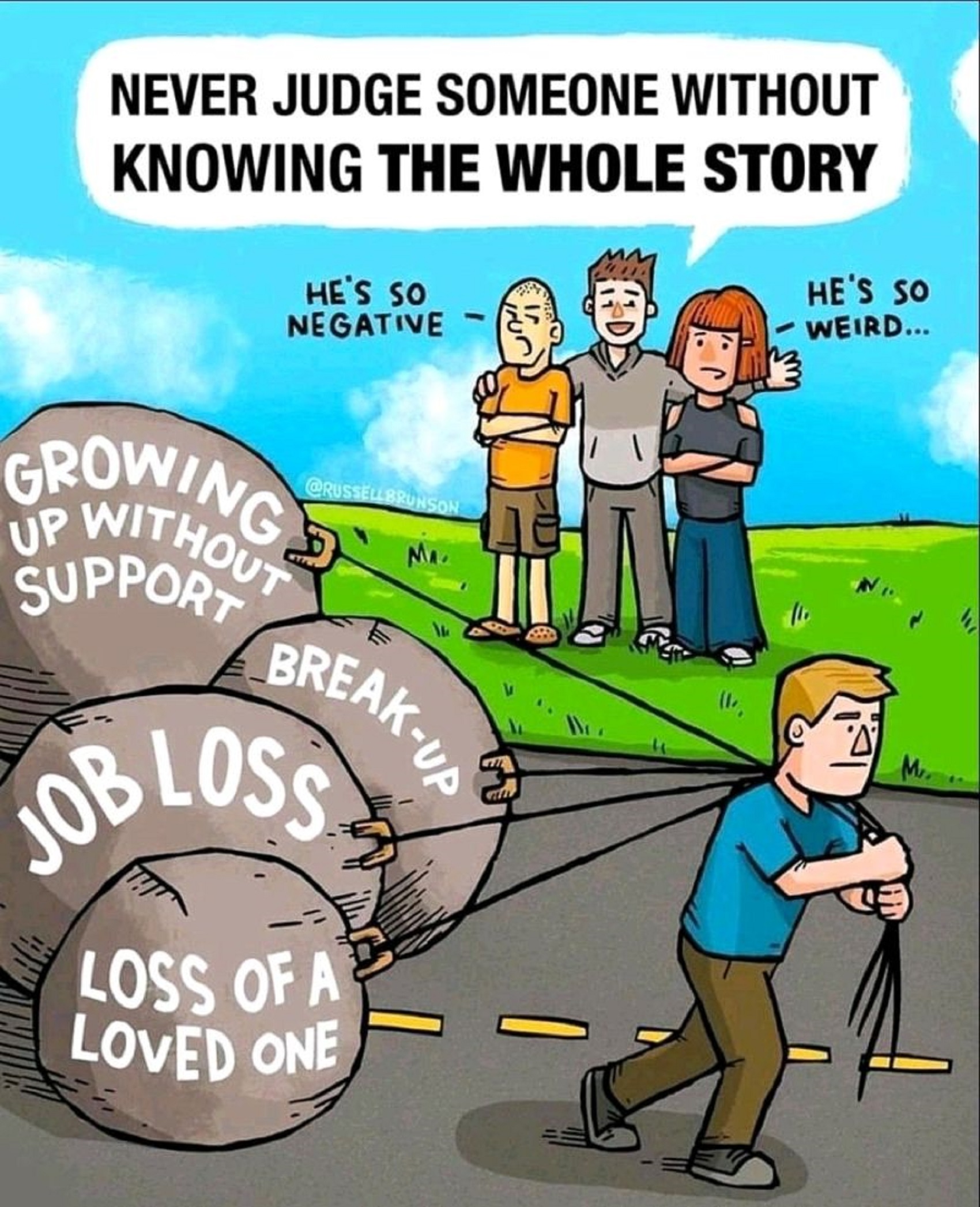

Culdrens drip, and bellows wale, a dead man’s plank
is the only ship that I will sail.
Autodidactic:
“Autodidacticism (also autodidactism) or self-education (also self-learning and self-teaching) is education without the guidance of masters (such as teachers and professors) or institutions (such as schools). Generally, autodidacts are individuals who choose the subject they will study, their studying material, and the studying rhythm and time. Autodidacts may or may not have formal education, and their study may be either a compliment or an alternative to formal education. Many notable contributions have been made by autodidact. The term has its roots in the Ancient Greek words αὐτός (hautós, lit. ”self”) and διδακτικός (didaktikos, lit. ”teaching”). The related term didacticism defines an artistic philosophy of education.” ref
“Various terms are used to describe self-education. One such is heutagogy, coined in 2000 by Stewart Hase and Chris Kenyon of Southern Cross University in Australia; others are self-directed learning and self-determined learning. In the heutagogy paradigm, a learner should be at the center of their own learning. Autodidacticism is sometimes a complement of modern education. As a complement to education, students would be encouraged to do more independent work. The Industrial Revolution created a new situation for self-directed learners.” ref
“Before the twentieth century, only a small minority of people received an advanced academic education. As stated by Joseph Whitworth in his influential report on industry dated from 1853, literacy rates were higher in the United States. However, even in the U.S., most children were not completing high school. High school education was necessary to become a teacher. In modern times, a larger percentage of those completing high school also attended college, usually to pursue a professional degree, such as law or medicine, or a divinity degree.” ref
“Collegiate teaching was based on the classics (Latin, philosophy, ancient history, theology) until the early nineteenth century. There were few if any institutions of higher learning offering studies in engineering or science before 1800. Institutions such as the Royal Society did much to promote scientific learning, including public lectures. In England, there were also itinerant lecturers offering their service, typically for a fee.” ref
“Prior to the nineteenth century, there were many important inventors working as millwrights or mechanics who, typically, had received an elementary education and served an apprenticeship. Mechanics, instrument makers, and surveyors had various mathematics training. James Watt was a surveyor and instrument maker and is described as being “largely self-educated”. Watt, like some other autodidacts of the time, became a Fellow of the Royal Society and a member of the Lunar Society. In the eighteenth century, these societies often gave public lectures and were instrumental in teaching chemistry and other sciences with industrial applications which were neglected by traditional universities. Academies also arose to provide scientific and technical training.” ref
“Years of schooling in the United States began to increase sharply in the early twentieth century. This phenomenon was seemingly related to increasing mechanization displacing child labor. The automated glass bottle-making machine is said to have done more for education than child labor laws because boys were no longer needed to assist. However, the number of boys employed in this particular industry was not that large; it was mechanization in several sectors of industry that displaced child labor toward education. For males in the U.S. born 1886–90, years of school averaged 7.86, while for those born in 1926–30, years of school averaged 11.46.” ref
“One of the most recent trends in education is that the classroom environment should cater towards students’ individual needs, goals, and interests. This model adopts the idea of inquiry-based learning where students are presented with scenarios to identify their own research, questions, and knowledge regarding the area. As a form of discovery learning, students in today’s classrooms are being provided with more opportunity to “experience and interact” with knowledge, which has its roots in autodidacticism.” ref
“Successful self-teaching can require self-discipline and reflective capability. Some research suggests that the ability to regulate one’s own learning may need to be modeled to some students so that they become active learners, while others learn dynamically via a process outside of conscious control. To interact with the environment, a framework has been identified to determine the components of any learning system: a reward function, incremental action-value functions, and action selection methods. Rewards work best in motivating learning when they are specifically chosen on an individual student basis. New knowledge must be incorporated into previously existing information as its value is to be assessed. Ultimately, these scaffolding techniques, as described by Vygotsky (1978) and problem-solving methods are a result of dynamic decision making.” ref
“The secular and modern societies gave foundations for a new system of education and a new kind of autodidacts. While the number of schools and students rose from one century to the other, so did the number of autodidacts. The industrial revolution produced new educational tools used in schools, universities, and outside academic circles to create a post-modern era that gave birth to the World Wide Web and encyclopedic data banks such as Wikipedia. As this concept becomes more widespread and popular, web locations such as Udacity and Khan Academy are developed as learning centers for many people to actively and freely learn together. The Alliance for Self-Directed Education (ASDE) is also formed to publicize and provide guidance or support for self-directed education.” ref
“The first philosophical claim supporting an autodidactic program to the study of nature and God was in the philosophical novel Hayy ibn Yaqdhan (Alive Son of the Vigilant), whose titular hero is considered the archetypal autodidact. The story is a medieval autodidactic utopia, a philosophical treatise in a literary form, which was written by the Andalusian philosopher Ibn Tufail in the 1160s in Marrakesh. It is a story about a feral boy, an autodidact prodigy who masters nature through instruments and reason, discovers laws of nature by practical exploration and experiments, and gains summum bonum through a mystical mediation and communion with God. The hero rises from his initial state of tabula rasa to a mystical or direct experience of God after passing through the necessary natural experiences. The focal point of the story is that human reason, unaided by society and its conventions or by religion, can achieve scientific knowledge, preparing the way to the mystical or highest form of human knowledge.” ref
“Commonly translated as “The Self-Taught Philosopher” or “The Improvement of Human Reason”, Ibn-Tufayl’s story Hayy Ibn-Yaqzan inspired debates about autodidacticism in a range of historical fields from classical Islamic philosophy through Renaissance humanism and the European Enlightenment. In his book Reading Hayy Ibn-Yaqzan: a Cross-Cultural History of Autodidacticism, Avner Ben-Zaken showed how the text traveled from late medieval Andalusia to early modern Europe and demonstrated the intricate ways in which autodidacticism was contested in and adapted to diverse cultural settings.” ref
“Autodidacticism apparently intertwined with struggles over Sufism in twelfth-century Marrakesh; controversies about the role of philosophy in pedagogy in fourteenth-century Barcelona; quarrels concerning astrology in Renaissance Florence in which Pico della Mirandola pleads for autodidacticism against the strong authority of intellectual establishment notions of predestination; and debates pertaining to experimentalism in seventeenth-century Oxford. Pleas for autodidacticism echoed not only within close philosophical discussions; they surfaced in struggles for control between individuals and establishments.” ref
“In the story of African American self-education, Heather Andrea Williams presents a historical account to examine African American’s relationship to literacy during slavery, the Civil War, and the first decades of freedom. Many of the personal accounts tell of individuals who have had to teach themselves due to racial discrimination in education. The working-class protagonist of Jack London’s Martin Eden (1909) embarks on a path of self-learning to win the affections of Ruth, a member of cultured society. By the end of the novel, Eden has surpassed the intellect of the bourgeois class, leading him to a state of indifference and ultimately suicide.” ref
“Jean-Paul Sartre‘s Nausea (1938) depicts, as a secondary character, an autodidact. Comic-book superhero Batman is frequently depicted as an autodidactic polymath who has acquired a vast range of skills over the years either by various trainers or having trained himself, and his expertise in various disciplines is virtually unmatched in the DC comics universe.” ref
“In The Ignorant Schoolmaster (1987), Jacques Rancière describes the emancipatory education of Joseph Jacotot, a post-Revolutionary philosopher of education who discovered that he could teach things he did not know. The book is both a history and a contemporary intervention in the philosophy and politics of education, through the concept of autodidacticism; Rancière chronicles Jacotot’s “adventures”, but he articulates Jacotot’s theory of “emancipation” and “stultification” in the present tense.” ref
“The 1997 drama film Good Will Hunting follows the story of autodidact Will Hunting, played by Matt Damon. Hunting demonstrates his breadth and depth of knowledge throughout the film but especially to his therapist and in a heated discussion in a Harvard bar.” ref
“One of the main characters in The Elegance of the Hedgehog (2006), by Muriel Barbery, is an autodidact. The story is told from the viewpoint of Renee, a middle-aged autodidact concierge in a Paris upscale apartment house, and Paloma, a 12-year-old daughter of one of the tenants who is unhappy with her life. These two people find they have much in common when they both befriend a new tenant, Mr. Ozu, and their lives change forever.” ref
“In the Hindu epic, the Mahabharata, Ekalavya is depicted as a tribal boy who was denied education in the science of arms from royal teachers from the house of Kuru. Ekalavya went to the forest, where he taught himself archery in front of an image of the Kuru teacher, Drona, that he had built for himself. Later, when the royal family found that Ekalavya had practiced with the image of Drona as his teacher, Drona asked for Ekalavya’s thumb as part of his tuition. Ekalavya complied with Drona’s request, thus ending his martial career.” ref
“In Suits, the protagonist (Mike Ross) possesses a highly competent knowledge of the law despite not receiving any formal education in any law school. His knowledge is attributable to both his affinity for reading (autodidacticism), in addition to his eidetic memory. Dr. Spencer Reid in Criminal Minds, played by Matthew Gray Gubler, is an autodidact with an eidetic memory.” ref
“Many successful and influential architects, such as Mies Van Der Rohe, Frank Lloyd Wright, Violet-Le-Duc, and Tadao Ando were self-taught. There are very few countries allowing autodidacticism in architecture today. The practice of architecture or the use of the title “architect”, are now protected in most countries. Self-taught architects have generally studied and qualified in other fields such as engineering or arts and crafts. Jean Prouvé was first a structural engineer. Le Corbusier had an academic qualification in decorative arts. Tadao Ando started his career as a draftsman, and Eileen Gray studied fine arts.” ref
“When a political state starts to implement restrictions on the profession, there are issues related to the rights of established self-taught architects. In most countries, the legislation includes a grandfather clause, authorizing established self-taught architects to continue practicing. In the UK, the legislation, allowed self-trained architects with 2 years of experience to register. In France, it allowed self-trained architects with 5 years of experience to register. In Belgium, the law allowed experienced self-trained architects in practice to register. In Italy, it allowed self-trained architects with 10 years of experience to register. In The Netherlands, the “wet op de architectentitel van 7 juli 1987” along with additional procedures, allowed architects with 10 years of experience and architects aged 40 years old or over, with 5 years of experience, to access the register.” ref
“However, other sovereign states chose to omit such a clause, and many established and competent practitioners were stripped of their professional rights. In the Republic of Ireland, a group named “Architects’ Alliance of Ireland” is defending the interests of long-established self-trained architects who were recently deprived of their rights to practice as per Part 3 of the Irish Building Control Act 2007.” ref
“Theoretical research such as “Architecture of Change, Sustainability and Humanity in the Built Environment” or older studies such as “Vers une Architecture” from Le Corbusier describe the practice of architecture as an environment changing with new technologies, sciences, and legislation. All architects must be autodidacts to keep up to date with new standards, regulations, or methods. Self-taught architects such as Eileen Gray, Luis Barragán, and many others, created a system where working is also learning, where self-education is associated with creativity and productivity within a working environment.” ref
“While he was primarily interested in naval architecture, William Francis Gibbs learned his profession through his own study of battleships and ocean liners. Throughout his life he could be seen examining and changing the designs of ships that were already built, that is, until he started his firm Gibbs and Cox. The role of self-directed learning continues to be investigated in learning approaches, along with other important goals of education, such as content knowledge, epistemic practices, and collaboration.” ref
“As colleges and universities offer distance learning degree programs and secondary schools provide cyber school options for K-12 students, technology provides numerous resources that enable individuals to have a self-directed learning experience. Several studies show these programs function most effectively when the “teacher” or facilitator is a full owner of virtual space to encourage a broad range of experiences to come together in an online format. This allows self-directed learning to encompass both a chosen path of information inquiry, self-regulation methods, and reflective discussion among experts as well as novices in a given area. Furthermore, massive open online courses (MOOCs) make autodidacticism easier and thus more common. A 2016 Stack Overflow poll reported that due to the rise of autodidacticism, 69.1% of software developers appear to be self-taught.” ref
Polymath”
“A polymath (Greek: πολυμαθής, polymathēs, “having learned much”; Latin: homo universalis, “universal man”) is an individual whose knowledge spans a substantial number of subjects, known to draw on complex bodies of knowledge to solve specific problems. The earliest recorded use of the term in English is from 1624, in the second edition of The Anatomy of Melancholy by Robert Burton; the form polymathist is slightly older, first appearing in the Diatribae upon the first part of the late History of Tithes of Richard Montagu in 1621. Use in English of the similar term polyhistor dates from the late sixteenth century.” ref
“In Western Europe, the first work to use polymathy in its title (De Polymathia tractatio: integri operis de studiis veterum) was published in 1603 by Johann von Wowern, a Hamburg philosopher. Von Wowern defined polymathy as “knowledge of various matters, drawn from all kinds of studies … ranging freely through all the fields of the disciplines, as far as the human mind, with unwearied industry, is able to pursue them”. Von Wowern lists erudition, literature, philology, philomathy and polyhistory as synonyms.” ref
“Polymaths include the great scholars and thinkers of the Islamic Golden Age, Renaissance, and Enlightenment, who excelled at several fields in science, technology, engineering, mathematics, and the arts. In the Italian Renaissance, the idea of the polymath was expressed by Leon Battista Alberti (1404–1472) in the statement that “a man can do all things if he will”. Gottfried Wilhelm Leibniz has often been seen as a polymath.” ref
“Embodying a basic tenet of Renaissance humanism that humans are limitless in their capacity for development, the concept led to the notion that people should embrace all knowledge and develop their capacities as fully as possible. This is expressed in the term Renaissance man, often applied to the gifted people of that age who sought to develop their abilities in all areas of accomplishment: intellectual, artistic, social, physical, and spiritual.” ref
“Renaissance man” was first recorded in written English in the early 20th century. It is used to refer to great thinkers living before, during, or after the Renaissance. Leonardo da Vinci has often been described as the archetype of the Renaissance man, a man of “unquenchable curiosity” and “feverishly inventive imagination”. Many notable polymaths lived during the Renaissance period, a cultural movement that spanned roughly the 14th through to the 17th century that began in Italy in the Late Middle Ages and later spread to the rest of Europe. These polymaths had a rounded approach to education that reflected the ideals of the humanists of the time. A gentleman or courtier of that era was expected to speak several languages, play a musical instrument, write poetry, and so on, thus fulfilling the Renaissance ideal.” ref
The idea of a universal education was essential to achieving polymath ability, hence the word university was used to describe a seat of learning. However, the original Latin word universitas refers in general to “a number of persons associated into one body, a society, company, community, guild, corporation, etc”. At this time, universities did not specialize in specific areas, but rather trained students in a broad array of science, philosophy, and theology. This universal education gave them a grounding from which they could continue into apprenticeship toward becoming a master of a specific field.” ref
“When someone is called a “Renaissance man” today, it is meant that rather than simply having broad interests or superficial knowledge in several fields, the individual possesses a more profound knowledge and a proficiency, or even an expertise, in at least some of those fields. Some dictionaries use the term “Renaissance man” to describe someone with many interests or talents, while others give a meaning restricted to the Renaissance and more closely related to Renaissance ideals.” ref
Robert Root-Bernstein is considered the principal responsible for rekindling interest in polymathy in the scientific community. His works emphasize the contrast between the polymath and two other types: the specialist and the dilettante. The specialist demonstrates depth but lacks the breadth of knowledge. The dilettante demonstrates superficial breadth but tends to acquire skills merely “for their own sake without regard to understanding the broader applications or implications and without integrating it” (R. Root-Bernstein, 2009, p. 857). Conversely, the polymath is a person with a level of expertise that is able to “put a significant amount of time and effort into their avocations and find ways to use their multiple interests to inform their vocations” (R. Root-Bernstein, 2009, p. 857).” ref
A key point in the work of Root-Bernstein and colleagues is the argument in favor of the universality of the creative process. That is, although creative products, such as a painting, a mathematical model, or a poem, can be domain-specific, at the level of the creative process, the mental tools that lead to the generation of creative ideas are the same, be it in the arts or science. These mental tools are sometimes called intuitive tools of thinking. It is therefore not surprising that many of the most innovative scientists have serious hobbies or interests in artistic activities, and that some of the most innovative artists have an interest or hobbies in the sciences.” ref
Root-Bernstein and colleagues’ research is an important counterpoint to the claim by some psychologists that creativity is a domain-specific phenomenon. Through their research, Root-Bernstein and colleagues conclude that there are certain comprehensive thinking skills and tools that cross the barrier of different domains and can foster creative thinking: “[creativity researchers] who discuss integrating ideas from diverse fields as the basis of creative giftedness ask not ‘who is creative?’ but ‘what is the basis of creative thinking?’ From the polymathy perspective, giftedness is the ability to combine disparate (or even apparently contradictory) ideas, sets of problems, skills, talents, and knowledge in novel and useful ways. Polymathy is, therefore, the main source of any individual’s creative potential” (R. Root-Bernstein, 2009, p. 854). In “Life Stages of Creativity”, Robert and Michèle Root-Bernstein suggest six typologies of creative life stages. These typologies based on real creative production records first published by Root-Bernstein, Bernstein, and Garnier (1993).” ref
- “Type 1 represents people who specialize in developing one major talent early in life (e.g., prodigies) and successfully exploit that talent exclusively for the rest of their lives.
- Type 2 individuals explore a range of different creative activities (e.g., through worldplay or a variety of hobbies) and then settle on exploiting one of these for the rest of their lives.
- Type 3 people are polymathic from the outset and manage to juggle multiple careers simultaneously so that their creativity pattern is constantly varied.
- Type 4 creators are recognized early for one major talent (e.g., math or music) but go on to explore additional creative outlets, diversifying their productivity with age.
- Type 5 creators devote themselves serially to one creative field after another.
- Type 6 people develop diversified creative skills early and then, like Type 5 individuals, explore these serially, one at a time.” ref
“Finally, his studies suggest that understanding polymathy and learning from polymathic exemplars can help structure a new model of education that better promotes creativity and innovation: “we must focus education on principles, methods, and skills that will serve them [students] in learning and creating across many disciplines, multiple careers, and succeeding life stages” (R. Root-Bernstein & M. Root-Bernstein, 2017, p. 161).” ref
“Peter Burke, Professor Emeritus of Cultural History and Fellow of Emmanuel College at Cambridge, discussed the theme of polymathy in some of his works. He has presented a comprehensive historical overview of the ascension and decline of the polymath as, what he calls, an “intellectual species” (see Burke, 2020, 2012; 2010).” ref
“He observes that in ancient and medieval times, scholars did not have to specialize. However, from the 17th century on, the rapid rise of new knowledge in the Western world—both from the systematic investigation of the natural world and from the flow of information coming from other parts of the world—was making it increasingly difficult for individual scholars to master as many disciplines as before. Thus, an intellectual retreat of the polymath species occurred: “from knowledge in every [academic] field to knowledge in several fields, and from making original contributions in many fields to a more passive consumption of what has been contributed by others” (Burke, 2010, p. 72).” ref
“Given this change in the intellectual climate, it has since then been more common to find “passive polymaths”, who consume knowledge in various domains but make their reputation in one single discipline, than “proper polymaths”, who—through a feat of “intellectual heroism”—manage to make serious contributions to several disciplines.” ref
“However, Burke warns that in the age of specialization, polymathic people are more necessary than ever, both for synthesis—to paint the big picture—and for analysis. He says: “It takes a polymath to ‘mind the gap’ and draw attention to the pieces of knowledge that may otherwise disappear into the spaces between disciplines, as they are currently defined and organized” (Burke, 2012, p. 183).” ref
“Finally, he suggests that governments and universities should nurture a habitat in which this “endangered species” can survive, offering students and scholars the possibility of interdisciplinary work. James C. Kaufman, from the Neag School of Education at the University of Connecticut, and Ronald A. Beghetto, from the same university, investigated the possibility that everyone could have the potential for polymathy as well as the issue of the domain-generality or domain-specificity of creativity.” ref
“Based on their earlier four-c model of creativity, Beghetto and Kaufman proposed a typology of polymathy, ranging from the ubiquitous mini-c polymathy to the eminent but rare Big-C polymathy, as well as a model with some requirements for a person (polymath or not) to be able to reach the highest levels of creative accomplishment. They account for three general requirements—intelligence, motivation to be creative, and an environment that allows creative expression—that are needed for any attempt at creativity to succeed. Then, depending on the domain of choice, more specific abilities will be required. The more that one’s abilities and interests match the requirements of a domain, the better. While some will develop their specific skills and motivations for specific domains, polymathic people will display intrinsic motivation (and the ability) to pursue a variety of subject matters across different domains.” ref
“Regarding the interplay of polymathy and education, they suggest that rather than asking whether every student has multi-creative potential, educators might more actively nurture the multi-creative potential of their students. As an example, the authors cite that teachers should encourage students to make connections across disciplines, use different forms of media to express their reasoning/understanding (e.g., drawings, movies, and other forms of visual media).” ref
“Bharath Sriraman, of the University of Montana, also investigated the role of polymathy in education. He poses that an ideal education should nurture talent in the classroom and enable individuals to pursue multiple fields of research and appreciate both the aesthetic and structural/scientific connections between mathematics, arts, and the sciences.” ref
“In 2009, Sriraman published a paper reporting a 3-year study with 120 pre-service mathematics teachers and derived several implications for mathematics pre-service education as well as interdisciplinary education. He utilized a hermeneutic-phenomenological approach to recreate the emotions, voices, and struggles of students as they tried to unravel Russell’s paradox presented in its linguistic form. They found that those more engaged in solving the paradox also displayed more polymathic thinking traits. He concludes by suggesting that fostering polymathy in the classroom may help students change beliefs, discover structures and open new avenues for interdisciplinary pedagogy.” ref
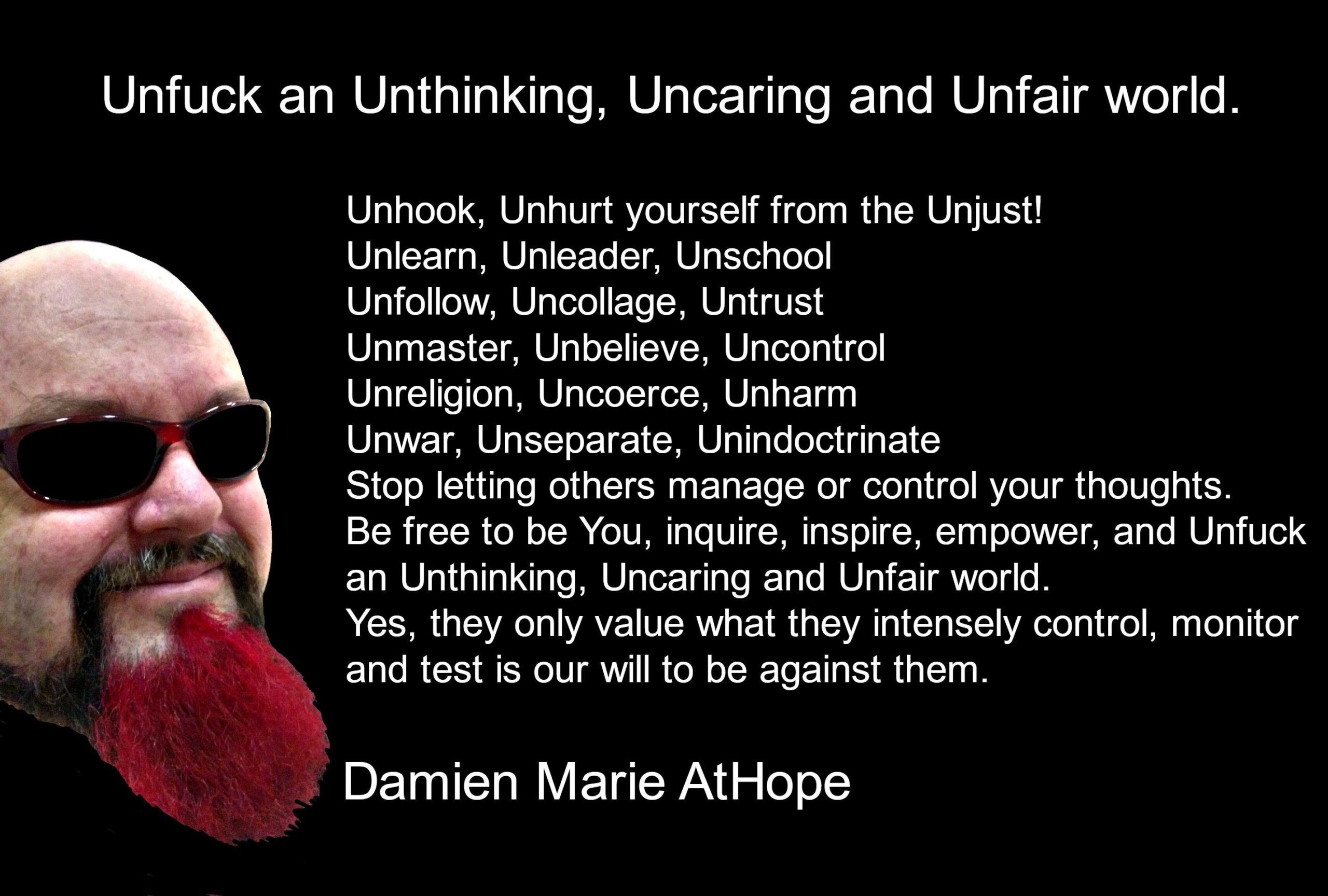


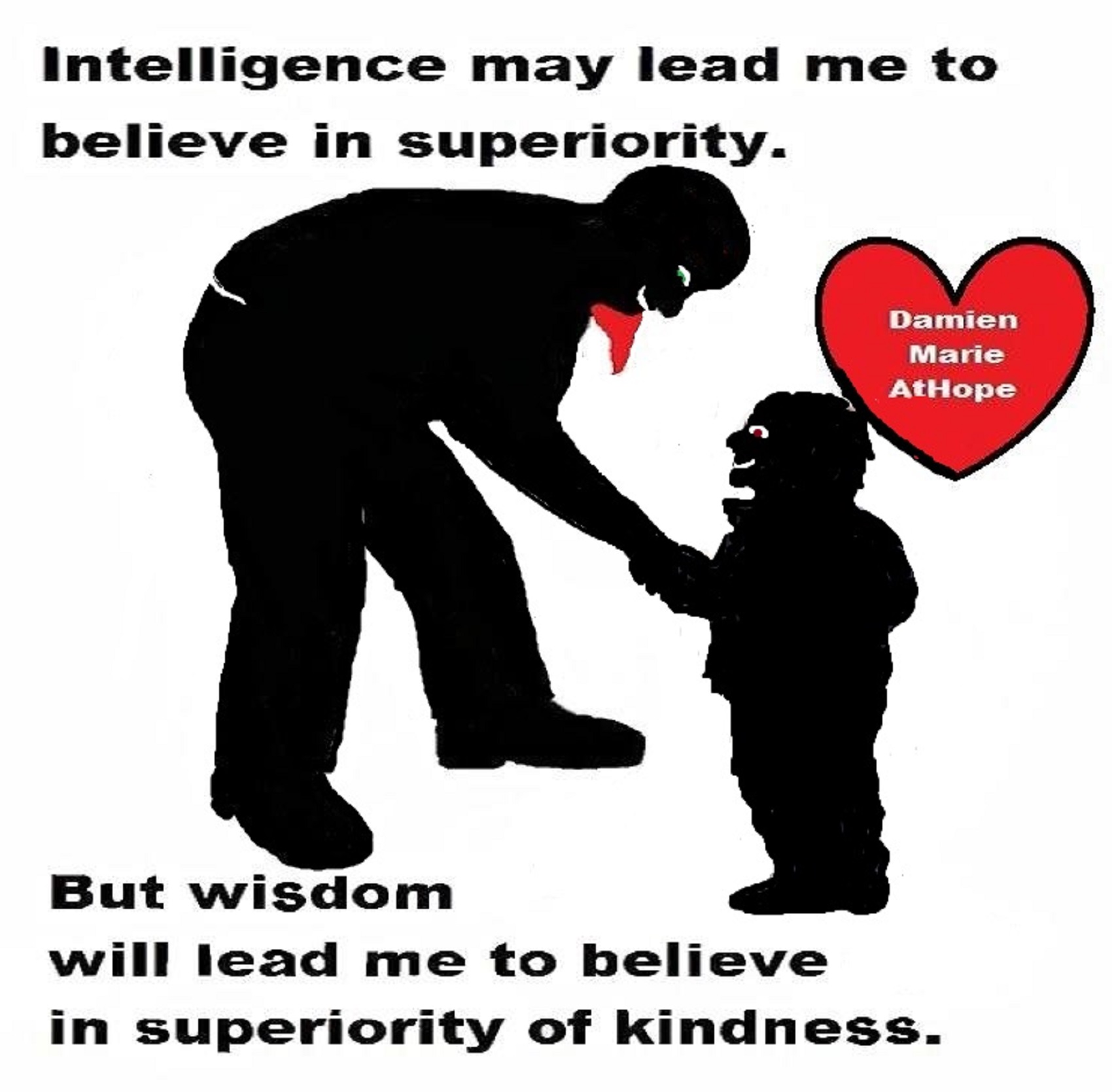
To me, we learn best when safe, so a safer an environment is the more sure that environment is to foster a healthy way of learning, which is helping what is happening naturally anyway.
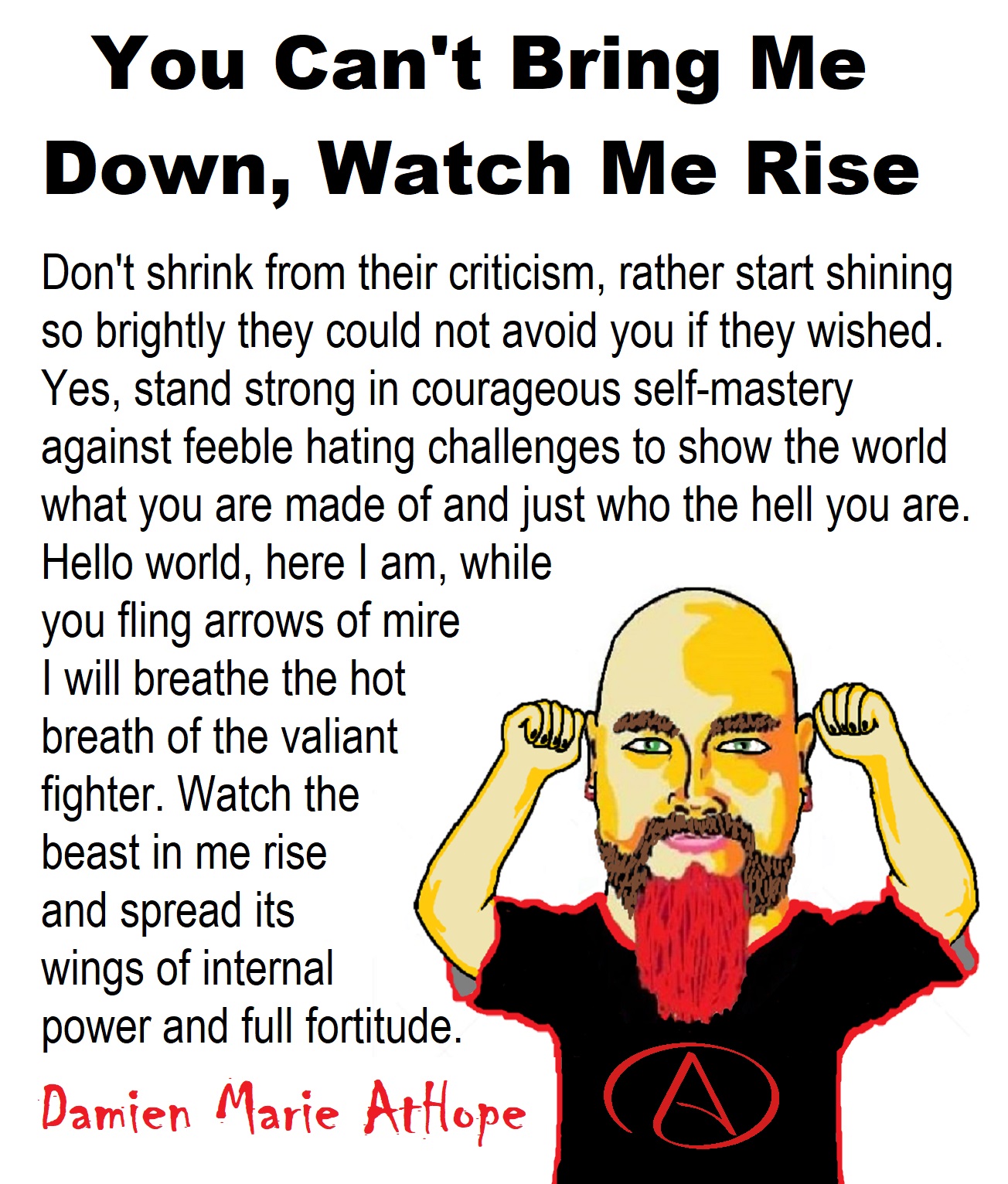
private MESSAGE:
ME: I want to aid the poor in access to learning for free. So I give it all for free so it is not money stoping a brighter future.
Not Me: Do what works for you.
ME: I am not with anyone nor any group. I am all alone with no help from anyone. Not even atheists nor anarchists help me either.
Not Me: Sorry to hear. Though that might be your trauma response talking. It is up to us to allow people in. Which can be difficult when we have been hurt so much.
ME: I am open to help, I am open to everything, where are you, I am in an open marriage, I have an open mind, and love as if it is my life. to friends and say, I welcome the world as my friend, from the homeless to the elite are open to being my friend. I sare amazing art and dep archaeology/anthropology knowledge and all In hear me and could care less. And what I say, is to them not even worth investigating, no one yet has proven me wrong and I welcome all to try and they respond to me by patting me on the head and saying “that is nice,” oh you solved 100 unknown questions in archaeology? Nice, damien, keep doing you. I think did they not hear me? I am the most knowledgeable person on earth right now on the understanding of the full evolution of all religions in a loose large perspective way. I shut down professors in all kinds of fields as I am very smart, and everyone keeps thinking I am just some fool with wild ideas. They never read my extensive facts just say they are not sure how much I have actually figured out. Right, how would you know if you refuse to even look? So I have knowledge that will change the world and people hardly care. sad. I will put out my book soon, then go into seclusion, mostly, to make archaeology-inspired fantasy jewelry, and enjoy my retirement in Florida, as my PTSD is killing me, having to live day in and day out challenging bigots and the unreasonable for many years now and with my mom dying a few months ago I am fragile and need to surround my self with nothing but love and kindness. I am only human. My father was a jeweler. He taught me, lost wax casting.
Not Me: I’m trying to think about how to frame it. But it is a trauma response to say I have all the answers and they don’t recognize it. And sometimes we do have to deal with narcissist control freaks who uphold their very expensive degrees as being evidence of them knowing better. And sometimes they do know better and sometimes they don’t. I’ve had to recenter myself recently in the fact I may know a lot and I may be intelligent and hard-working, but I cannot and won’t ever know everything. And that’s ok. I think when we are still hurting it feels like everyone wants to invalidate us so we invalidate them first. And yeah, it gets even trickier when it comes to scholarly research, because invalidation of others happens often. But, like, I’m theoretically a stone tools expert. And yet, there are Indigenous groups and individuals that still practice flintknapping as part of their cultures. And there are individuals who have been flintknapping and researching stone tools much longer than me. And I have to accept the fact that all of this is valid and does not detract from my worth or what I have to offer in relation to my field. But I can only offer insight from my own perspective based off of my own experiences. And sometimes we have to just find the right crowd for us to support us. The reality is we will not win over everyone and some people we absolutely never will, and that’s ok. I guess I’m just trying to point out that your knowledge has value and worth, and it’s also important to recognize that other people do too. And to make sure that our triggers are not getting in the way of forming personal and professional contacts. But take what I said however you want to. I’m a trauma survivor so I do understand. Very nice images. If my meetings is canceled, I need to double-check some readings before I head to the lab. Have a great day!
ME: I have lots of answers and people will feel ashamed for not believing me.
Not Me: My friend, you don’t have to prove yourself to everyone. You don’t need to prove superiority. Just keep doing your thing and make sure you are doing it because it makes you happy. I hope I didn’t offend you. Just wanted to point out my observations and perspective. There are always going to be assholes no matter what you do. Sometimes you just need to walk past them. Be like Superman; let the bullets fall off you and keep walking. But trauma impacts us on a deep level. So I get it no matter what.
ME: I am a real supper intersex-genderqueer-male. I would love someone who thinks I am wrong to just, try and prove my in error and not just add their uninvestigated thoughts and empty opinions. yes, unassessed opinions.
Not Me: I really need to get on with my day though. I hope your day goes well. Maybe I just have a different perspective but I don’t really care about proving people wrong beyond the people I have to. Life is more peaceful that way and I’m less prone to accidentally hurt someone in the process. Thank you. I think you are cool too. Keep doing your thing, my friend. Take care.
ME: I want to, always, strive to be kind as to me, that is me, being a good person. I just want to be a good human.
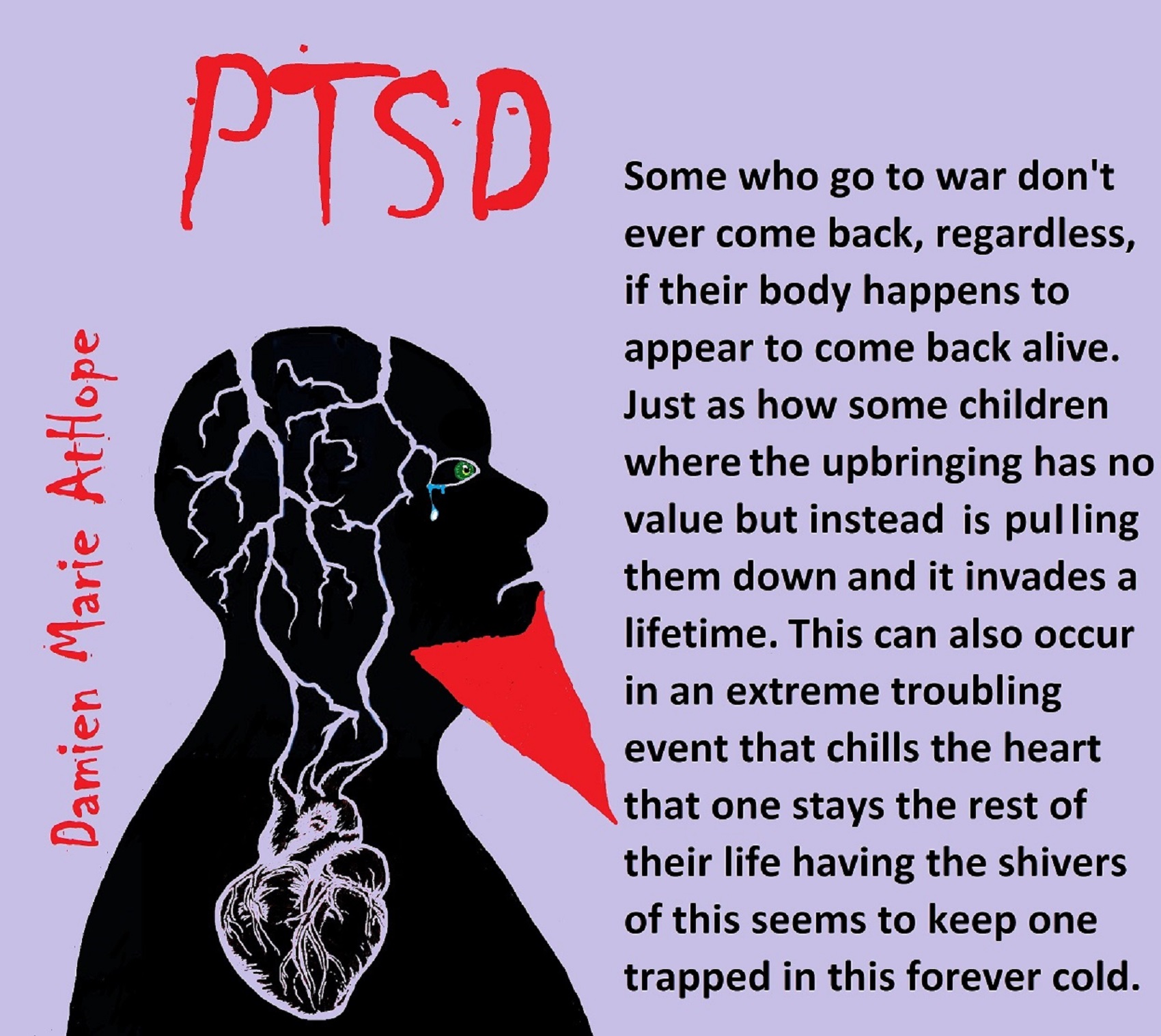
Everyone looks at me and thinks, FREAK, thinking that means I am both stupid and so lacking knowledge I am a waste of their time. When I bet you already get, I am Wicked Smart and an Autodidactic Polymath. I am just ME.



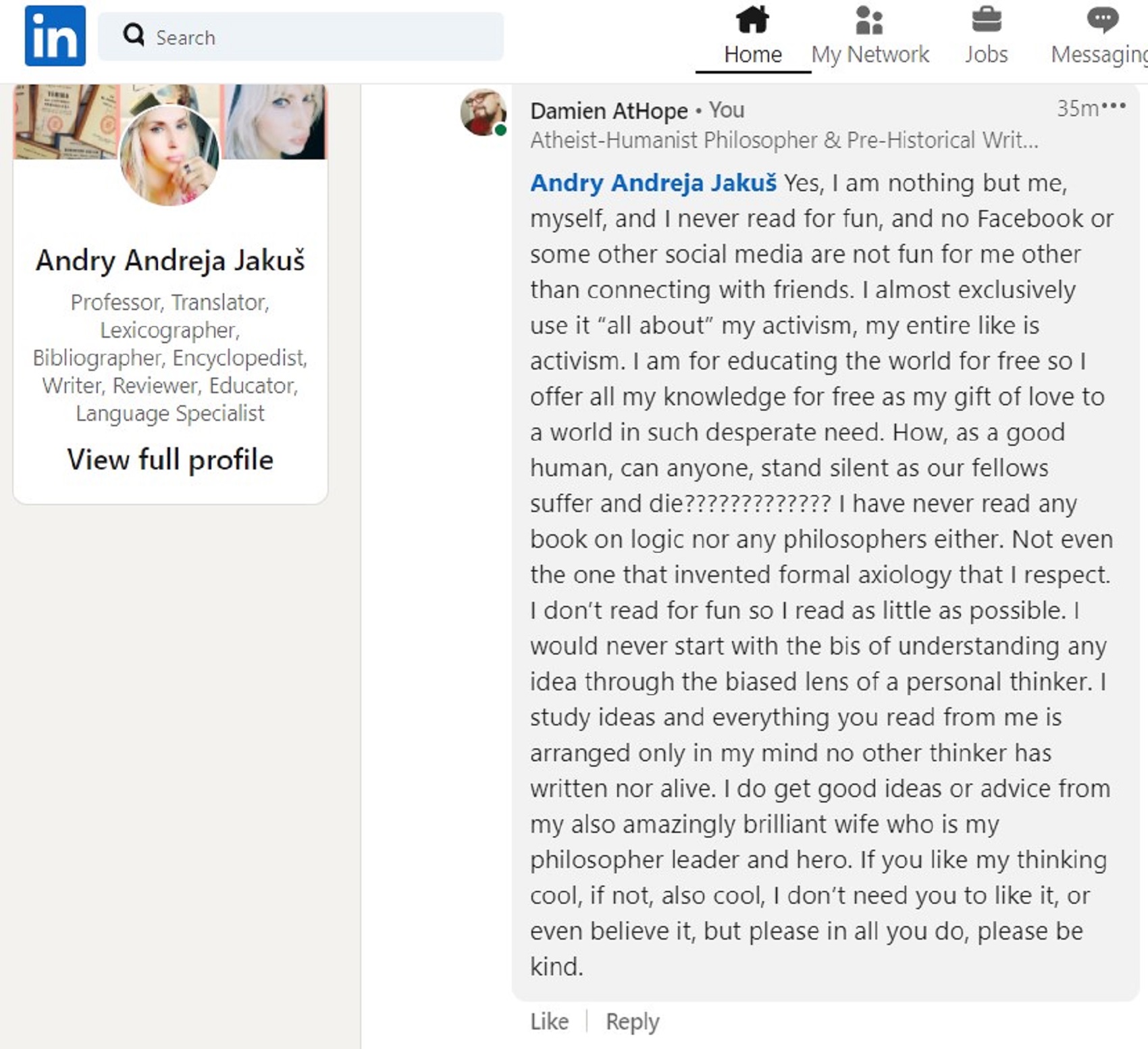

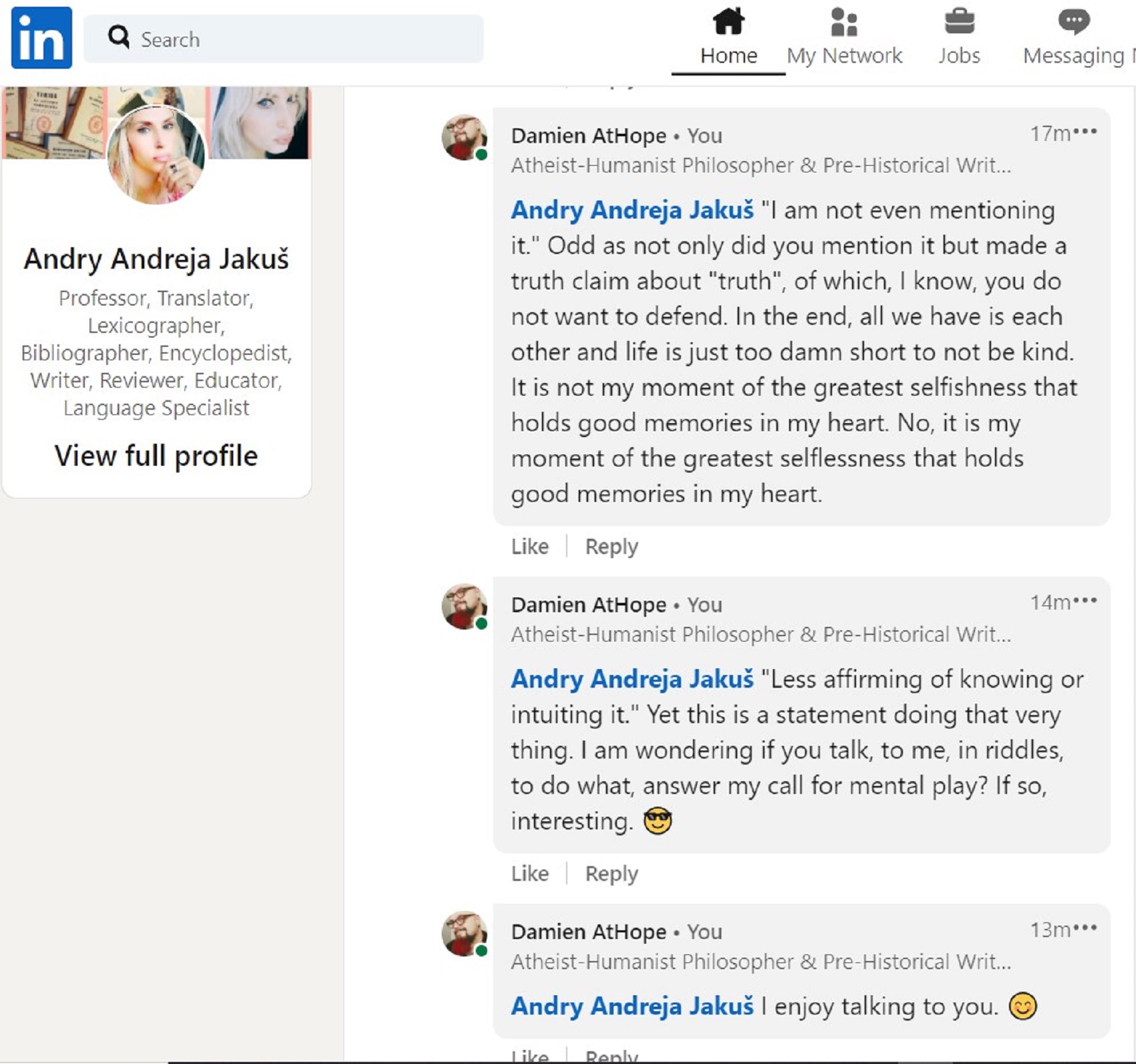
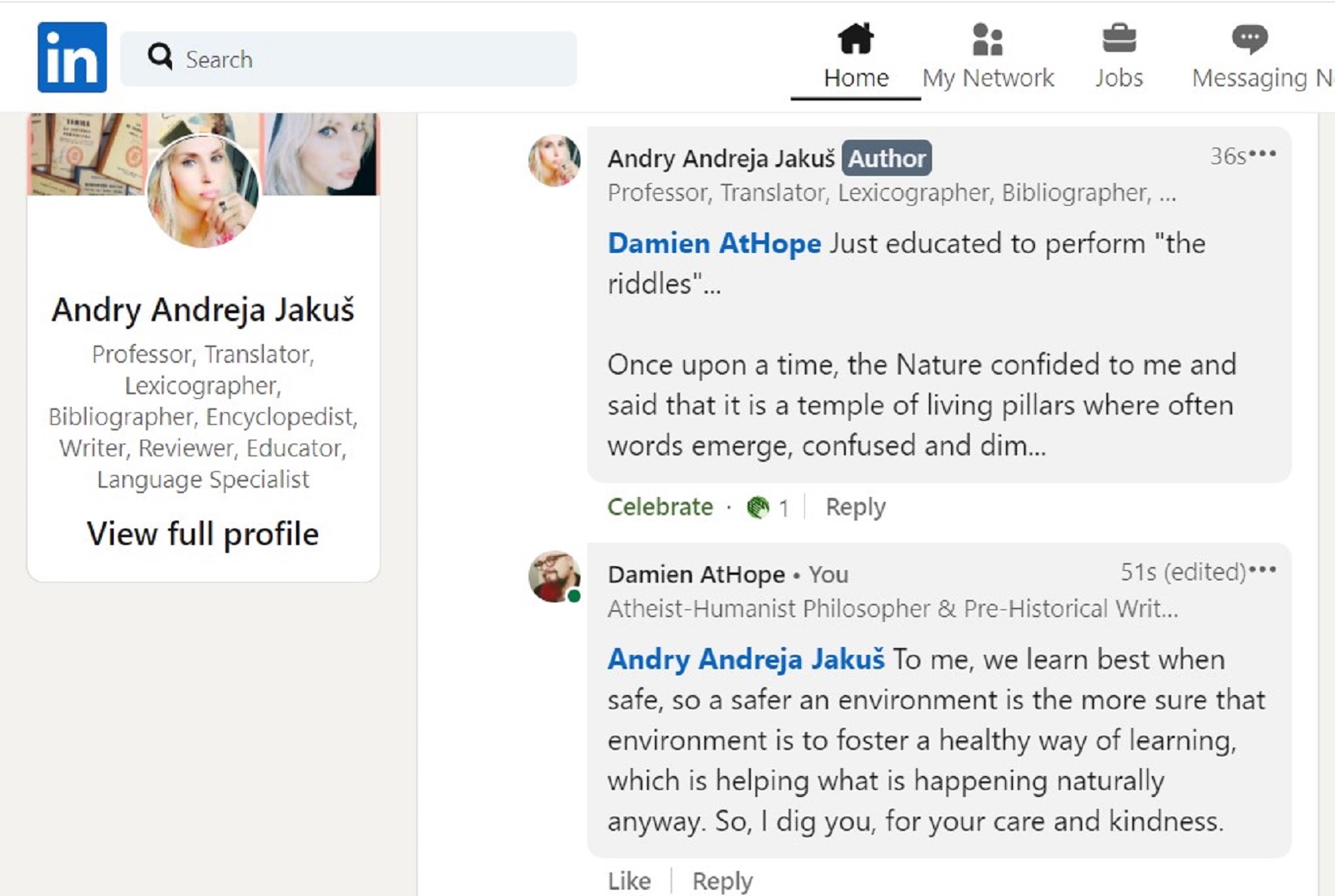
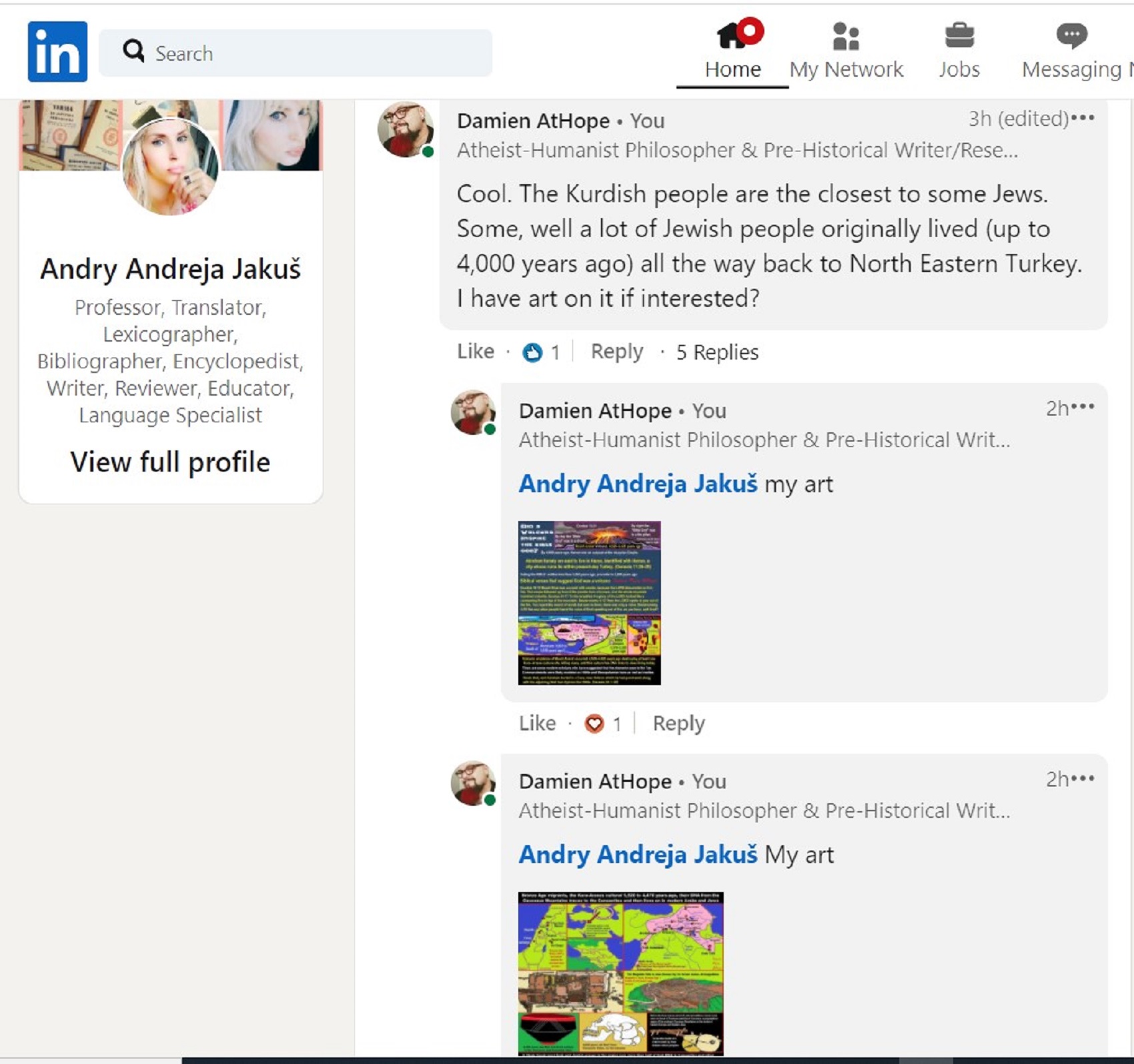


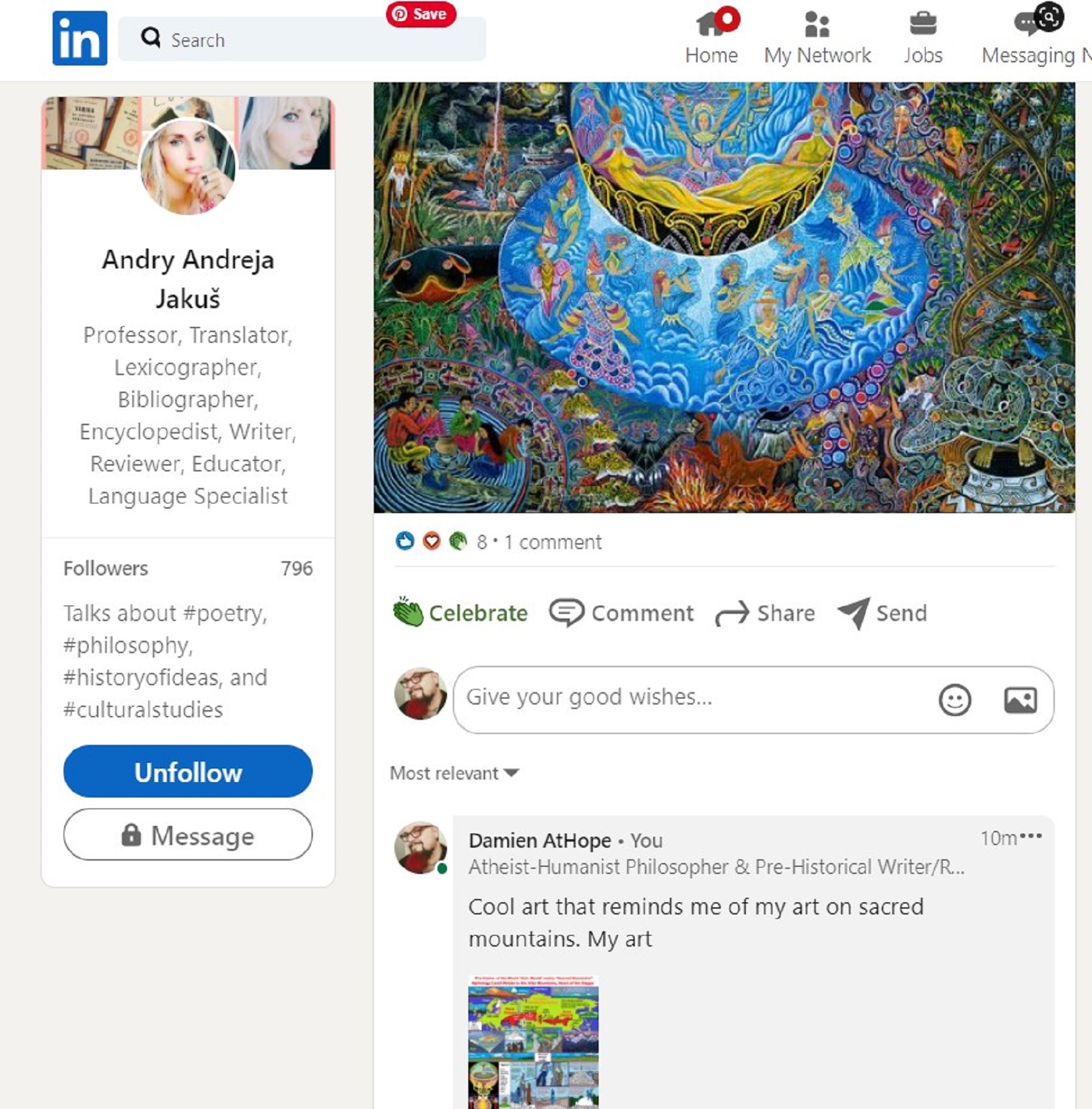

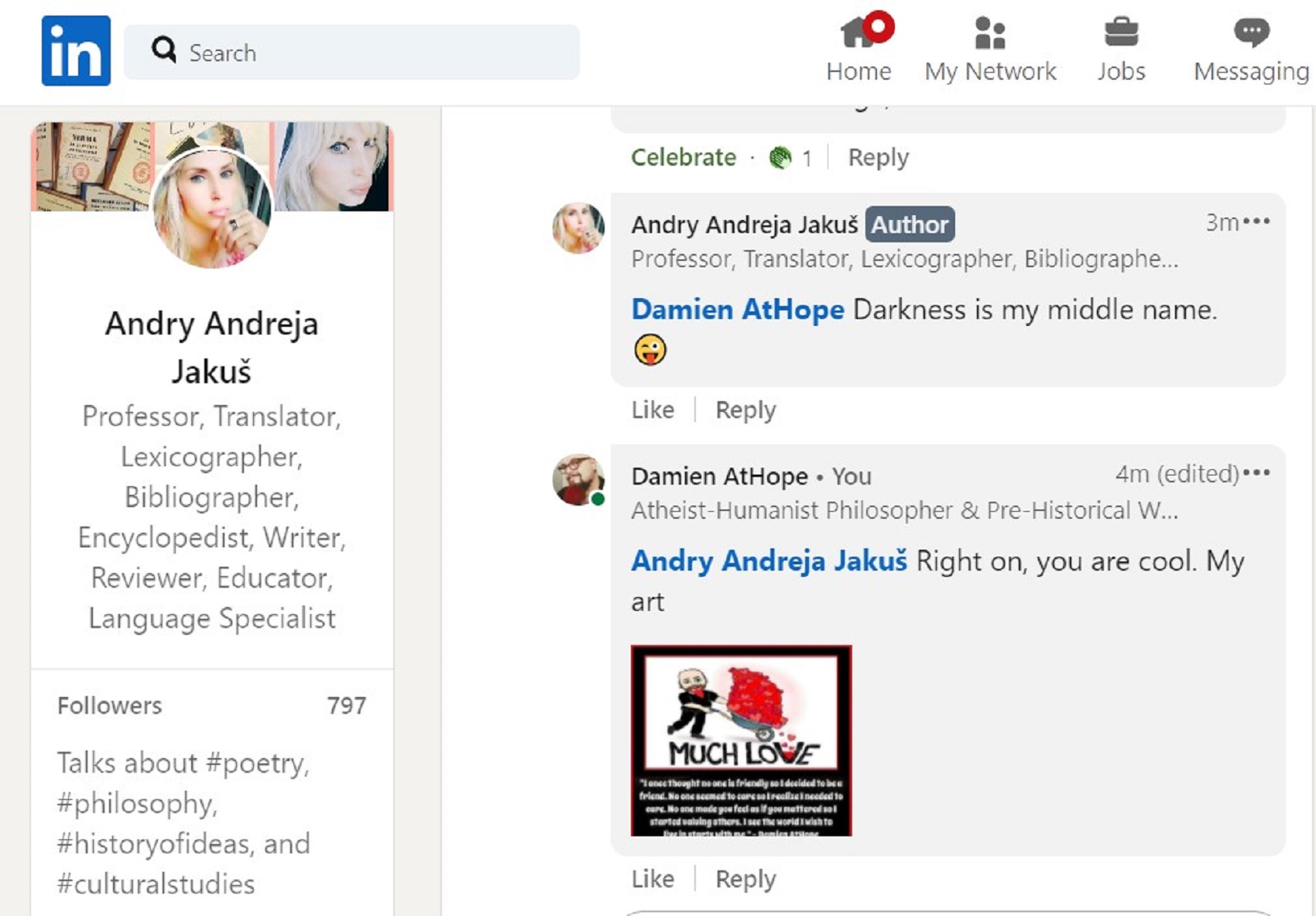

I was unloved and abused, at the place others called my home, I only had one home, SCHOOL. It was always me and teachers against the world and it still is now.
Street-Kid Damien, Was He Really a BAD Kid? LINK ONLY READ IF YOU ARE BRAVE.
I may seem way too much but I lived through hell. Now I am a hell boy, the demon formed in hell, now come back from hell, to save the world with his superpower, KINDNESS in an unkind world. I am nothing, I am just ME…
We rise by helping each other. “You” teachers helped me when no one else even cared, I can’t help but love caring teachers anywhere as you are helping my people, kids in need. I appreciate all teachers that love and help kids even when things are hard. I feel deeply for you all, thanks for all you do. Much love. Kindness Matters.
Believe me, you do, make a needed difference. I needed all of you then and appreciate and am open to helping any of you, for free, in any way I can, I owe you all my life. I care about all the staff at school they all were often loving of me.
“Damien AtHope it’s because of people like you that teachers have a reason to wake up in the morning. Inside all of us is not only a passion to teach but also a passion to make a significant, lasting impact on students’ lives.” – Commenter
I feel we are united, to make the world better, I am the rough version, I get to the ones few can. But you are as amazing you get to so many that would as soon look down on me as offer me kindness. I am scary, only to those harming others, and never good people, as they are all my close friends. Together, we are all soldiers of humanity doing all we can, and it all matters and is all needed, we are humanity’s last hope so many seem to only favor the ugliness, sad. But we shine “light” in our kindness and compassion that heals at least a little of the world’s hate.
Dr. Jo Anne WhiteAuthorLife, Leadership, Spiritual & Business Coaching: “Damien AtHope yes we are here to make the world better. Thank you. You are very kind with a beautiful soul. Keep shining my friend.”








Ancient North Eurasian (ANE)
Ancient Beringian/Ancestral Native American (AB/ANA)
Eastern Hunter-Gatherer (EHG)
Western Hunter-Gatherers (WHG)
Western Steppe Herders (WSH)
Scandinavian Hunter-Gatherer (SHG)
Early European Farmers (EEF)
Jōmon people (Ainu people OF Hokkaido Island)
Neolithic Iranian farmers (Iran_N) (Iran Neolithic)
Haplogroup R possible time of origin about 27,000 years in Central Asia, South Asia, or Siberia:
- Mal’ta–Buret’ culture (24,000-15,000 years ago)
- Afontova Gora culture (21,000-12,000 years ago)
- Trialetian culture (16,000–8000 years ago)
- Samara culture (7,000-6,500 years ago)
- Khvalynsk culture (7,000-6,500 years ago)
- Afanasievo culture (5,300-4,500 years ago)
- Yamna/Yamnaya Culture (5,300-4,500 years ago)
- Andronovo culture (4,000–2,900 years ago) ref
Groups partially derived from the Ancient North Eurasians
“The ANE lineage is defined by association with the MA-1, or “Mal’ta boy”, remains of 24,000 years ago in central Siberia Mal’ta-Buret’ culture 24,000-15,000 years ago. The Ancient North Eurasians (ANE) samples (Afontova Gora 3, Mal’ta 1, and Yana-RHS) show evidence for minor gene flow from an East Asian-related group (simplified by the Amis, Han, or Tianyuan) but no evidence for ANE-related geneflow into East Asians (Amis, Han, Tianyuan), except the Ainu, of North Japan.” ref
“The ANE lineage is defined by association with the MA-1, or “Mal’ta boy”, remains of 24,000 years ago in central Siberia Mal’ta-Buret’ culture 24,000-15,000 years ago “basal to modern-day Europeans”. Some Ancient North Eurasians also carried East Asian populations, such as Tianyuan Man.” ref
“Bronze-age-steppe Yamnaya and Afanasevo cultures were ANE at around 50% and Eastern Hunter-Gatherer (EHG) at around 75% ANE. Karelia culture: Y-DNA R1a-M417 8,400 years ago, Y-DNA J, 7,200 years ago, and Samara, of Y-haplogroup R1b-P297 7,600 years ago is closely related to ANE from Afontova Gora, 18,000 years ago around the time of blond hair first seen there.” ref
Ancient North Eurasian
“In archaeogenetics, the term Ancient North Eurasian (often abbreviated as ANE) is the name given to an ancestral West Eurasian component that represents descent from the people similar to the Mal’ta–Buret’ culture and populations closely related to them, such as from Afontova Gora and the Yana Rhinoceros Horn Site. Significant ANE ancestry are found in some modern populations, including Europeans and Native Americans.” ref
“The ANE lineage is defined by association with the MA-1, or “Mal’ta boy“, the remains of an individual who lived during the Last Glacial Maximum, 24,000 years ago in central Siberia, Ancient North Eurasians are described as a lineage “which is deeply related to Paleolithic/Mesolithic hunter-gatherers in Europe,” meaning that they diverged from Paleolithic Europeans a long time ago.” ref
“The ANE population has also been described as having been “basal to modern-day Europeans” but not especially related to East Asians, and is suggested to have perhaps originated in Europe or Western Asia or the Eurasian Steppe of Central Asia. However, some samples associated with Ancient North Eurasians also carried ancestry from an ancient East Asian population, such as Tianyuan Man. Sikora et al. (2019) found that the Yana RHS sample (31,600 BP) in Northern Siberia “can be modeled as early West Eurasian with an approximately 22% contribution from early East Asians.” ref
“Populations genetically similar to MA-1 were an important genetic contributor to Native Americans, Europeans, Central Asians, South Asians, and some East Asian groups, in order of significance. Lazaridis et al. (2016:10) note “a cline of ANE ancestry across the east-west extent of Eurasia.” The ancient Bronze-age-steppe Yamnaya and Afanasevo cultures were found to have a noteworthy ANE component at ~50%.” ref
“According to Moreno-Mayar et al. 2018 between 14% and 38% of Native American ancestry may originate from gene flow from the Mal’ta–Buret’ people (ANE). This difference is caused by the penetration of posterior Siberian migrations into the Americas, with the lowest percentages of ANE ancestry found in Eskimos and Alaskan Natives, as these groups are the result of migrations into the Americas roughly 5,000 years ago.” ref
“Estimates for ANE ancestry among first wave Native Americans show higher percentages, such as 42% for those belonging to the Andean region in South America. The other gene flow in Native Americans (the remainder of their ancestry) was of East Asian origin. Gene sequencing of another south-central Siberian people (Afontova Gora-2) dating to approximately 17,000 years ago, revealed similar autosomal genetic signatures to that of Mal’ta boy-1, suggesting that the region was continuously occupied by humans throughout the Last Glacial Maximum.” ref
“The earliest known individual with a genetic mutation associated with blonde hair in modern Europeans is an Ancient North Eurasian female dating to around 16000 BCE from the Afontova Gora 3 site in Siberia. It has been suggested that their mythology may have included a narrative, found in both Indo-European and some Native American fables, in which a dog guards the path to the afterlife.” ref
“Genomic studies also indicate that the ANE component was introduced to Western Europe by people related to the Yamnaya culture, long after the Paleolithic. It is reported in modern-day Europeans (7%–25%), but not of Europeans before the Bronze Age. Additional ANE ancestry is found in European populations through paleolithic interactions with Eastern Hunter-Gatherers, which resulted in populations such as Scandinavian Hunter-Gatherers.” ref
“The Ancient North Eurasians (ANE) split from the ancestors of European peoples somewhere in the Middle East or South-central Asia, and used a northern dispersal route through Central Asia into Northern Asia and Siberia. Genetic analyses show that all ANE samples (Afontova Gora 3, Mal’ta 1, and Yana-RHS) show evidence for minor gene flow from an East Asian-related group (simplified by the Amis, Han, or Tianyuan). In contrast, no evidence for ANE-related geneflow into East Asians (Amis, Han, Tianyuan), except the Ainu, was found.” ref
“Genetic data suggests that the ANE formed during the Terminal Upper-Paleolithic (36+-1,5ka) period from a deeply European-related population, which was once widespread in Northern Eurasia, and from an early East Asian-related group, which migrated northwards into Central Asia and Siberia, merging with this deeply European-related population. These population dynamics and constant northwards geneflow of East Asian-related ancestry would later gave rise to the “Ancestral Native Americans” and Paleosiberians, which replaced the ANE as dominant population of Siberia.” ref
Groups partially derived from the Ancient North Eurasians
“Eastern Hunter-Gatherer (EHG) is a lineage derived predominantly (75%) from ANE. It is represented by two individuals from Karelia, one of Y-haplogroup R1a-M417, dated c. 8.4 kya, the other of Y-haplogroup J, dated c. 7.2 kya; and one individual from Samara, of Y-haplogroup R1b-P297, dated c. 7.6 kya. This lineage is closely related to the ANE sample from Afontova Gora, dated c. 18 kya. After the end of the Last Glacial Maximum, the Western Hunter-Gatherers (WHG) and EHG lineages merged in Eastern Europe, accounting for early presence of ANE-derived ancestry in Mesolithic Europe. Evidence suggests that as Ancient North Eurasians migrated West from Eastern Siberia, they absorbed Western Hunter-Gatherers and other West Eurasian populations as well.” ref
“Caucasian Hunter-Gatherer (CHG) is represented by the Satsurblia individual dated ~13 kya (from the Satsurblia cave in Georgia), and carried 36% ANE-derived admixture. While the rest of their ancestry is derived from the Dzudzuana cave individual dated ~26 kya, which lacked ANE-admixture, Dzudzuana affinity in the Caucasus decreased with the arrival of ANE at ~13 kya Satsurblia.” ref
“Scandinavian Hunter-Gatherer (SHG) is represented by several individuals buried at Motala, Sweden ca. 6000 BC. They were descended from Western Hunter-Gatherers who initially settled Scandinavia from the south, and later populations of EHG who entered Scandinavia from the north through the coast of Norway.” ref
“Iran Neolithic (Iran_N) individuals dated ~8.5 kya carried 50% ANE-derived admixture and 50% Dzudzuana-related admixture, marking them as different from other Near-Eastern and Anatolian Neolithics who didn’t have ANE admixture. Iran Neolithics were later replaced by Iran Chalcolithics, who were a mixture of Iran Neolithic and Near Eastern Levant Neolithic.” ref
“Ancient Beringian/Ancestral Native American are specific archaeogenetic lineages, based on the genome of an infant found at the Upward Sun River site (dubbed USR1), dated to 11,500 years ago. The AB lineage diverged from the Ancestral Native American (ANA) lineage about 20,000 years ago.” ref
“West Siberian Hunter-Gatherer (WSHG) are a specific archaeogenetic lineage, first reported in a genetic study published in Science in September 2019. WSGs were found to be of about 30% EHG ancestry, 50% ANE ancestry, and 20% to 38% East Asian ancestry.” ref
“Western Steppe Herders (WSH) is the name given to a distinct ancestral component that represents descent closely related to the Yamnaya culture of the Pontic–Caspian steppe. This ancestry is often referred to as Yamnaya ancestry or Steppe ancestry.” ref
“Late Upper Paeolithic Lake Baikal – Ust’Kyakhta-3 (UKY) 14,050-13,770 BP were mixture of 30% ANE ancestry and 70% East Asian ancestry.” ref
“Lake Baikal Holocene – Baikal Eneolithic (Baikal_EN) and Baikal Early Bronze Age (Baikal_EBA) derived 6.4% to 20.1% ancestry from ANE, while rest of their ancestry was derived from East Asians. Fofonovo_EN near by Lake Baikal were mixture of 12-17% ANE ancestry and 83-87% East Asian ancestry.” ref
“Hokkaido Jōmon people specifically refers to the Jōmon period population of Hokkaido in northernmost Japan. Though the Jōmon people themselves descended mainly from East Asian lineages, one study found an affinity between Hokkaido Jōmon with the Northern Eurasian Yana sample (an ANE-related group, related to Mal’ta), and suggest as an explanation the possibility of minor Yana gene flow into the Hokkaido Jōmon population (as well as other possibilities). A more recent study by Cooke et al. 2021, confirmed ANE-related geneflow among the Jōmon people, partially ancestral to the Ainu people. ANE ancestry among Jōmon people is estimated at 21%, however, there is a North to South cline within the Japanese archipelago, with the highest amount of ANE ancestry in Hokkaido and Tohoku.” ref
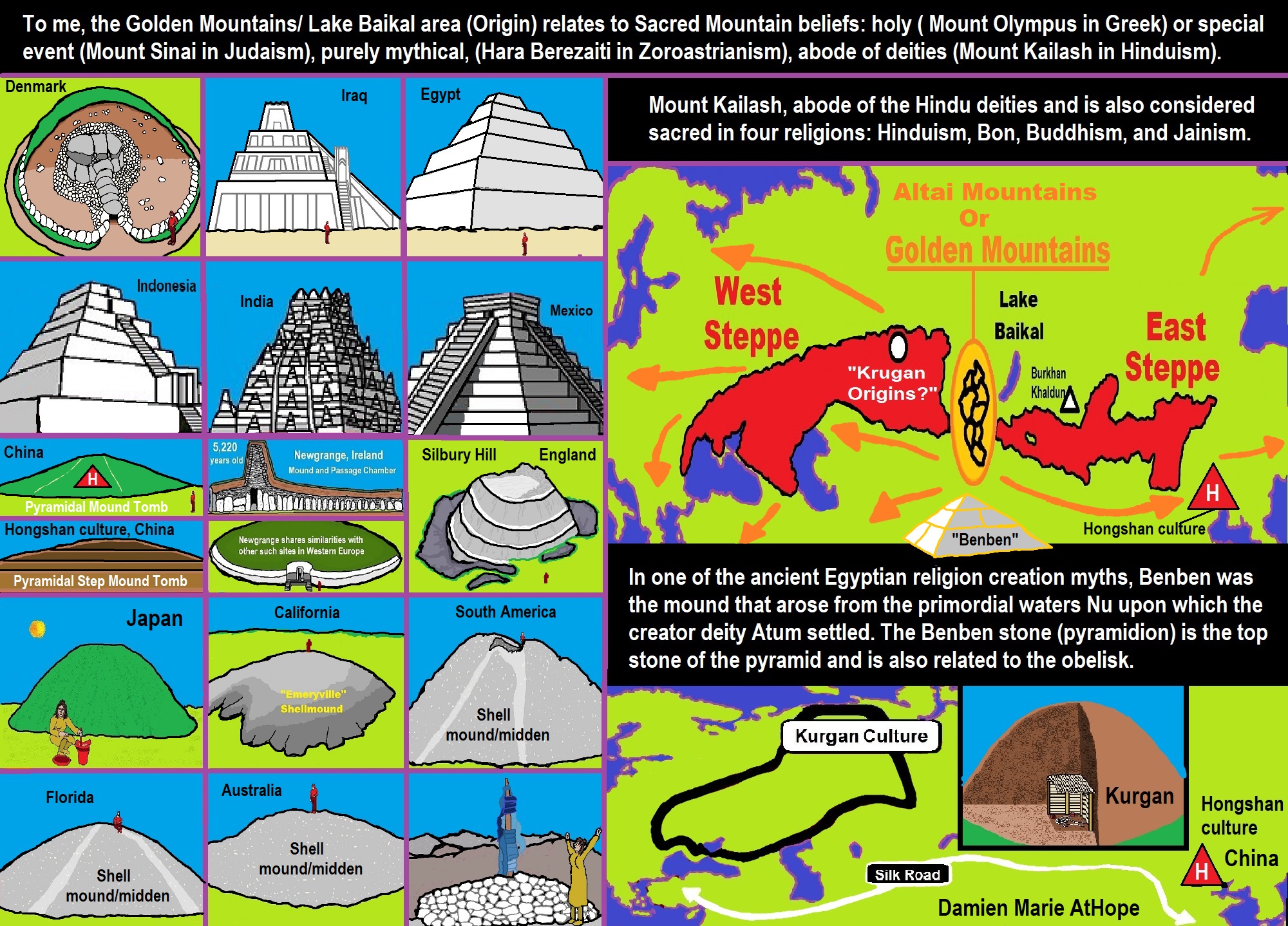
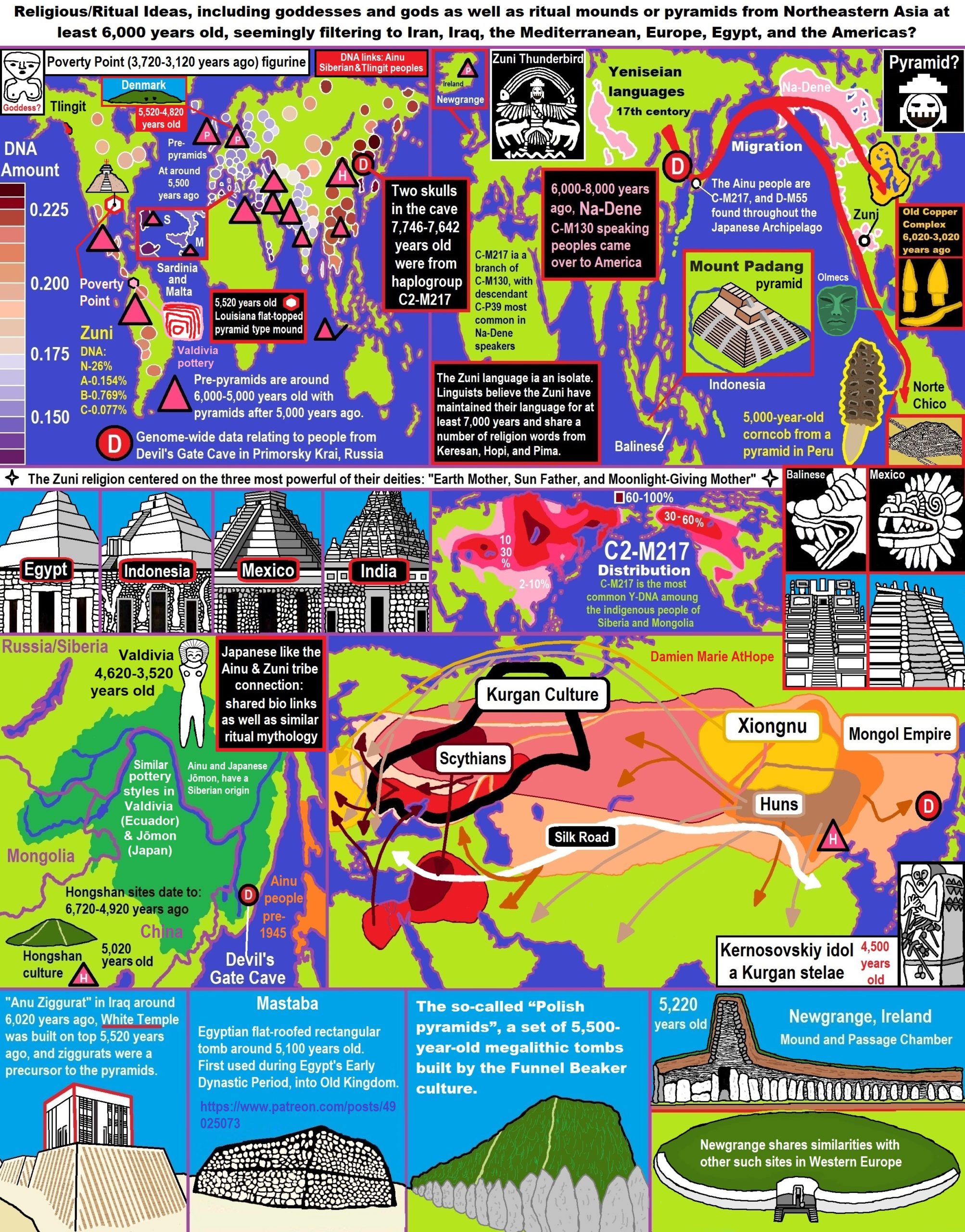

ref, ref, ref, ref, ref, ref, ref, ref, ref, ref, ref, ref, ref, ref, ref, ref, ref, ref, ref, ref, ref, ref, ref, ref, ref, ref, ref, ref, ref, ref, ref, ref, ref, ref, ref, ref, ref, ref, ref, ref, ref, ref, ref, ref, ref, ref, ref, ref, ref, ref, ref, ref, ref, ref, ref, ref, ref, ref, ref, ref, ref, ref, ref, ref, ref, ref, ref, ref, ref, ref, ref, ref, ref, ref, ref, ref, ref, ref, ref, ref, ref, ref, ref, ref, ref, ref, ref, ref, ref, ref





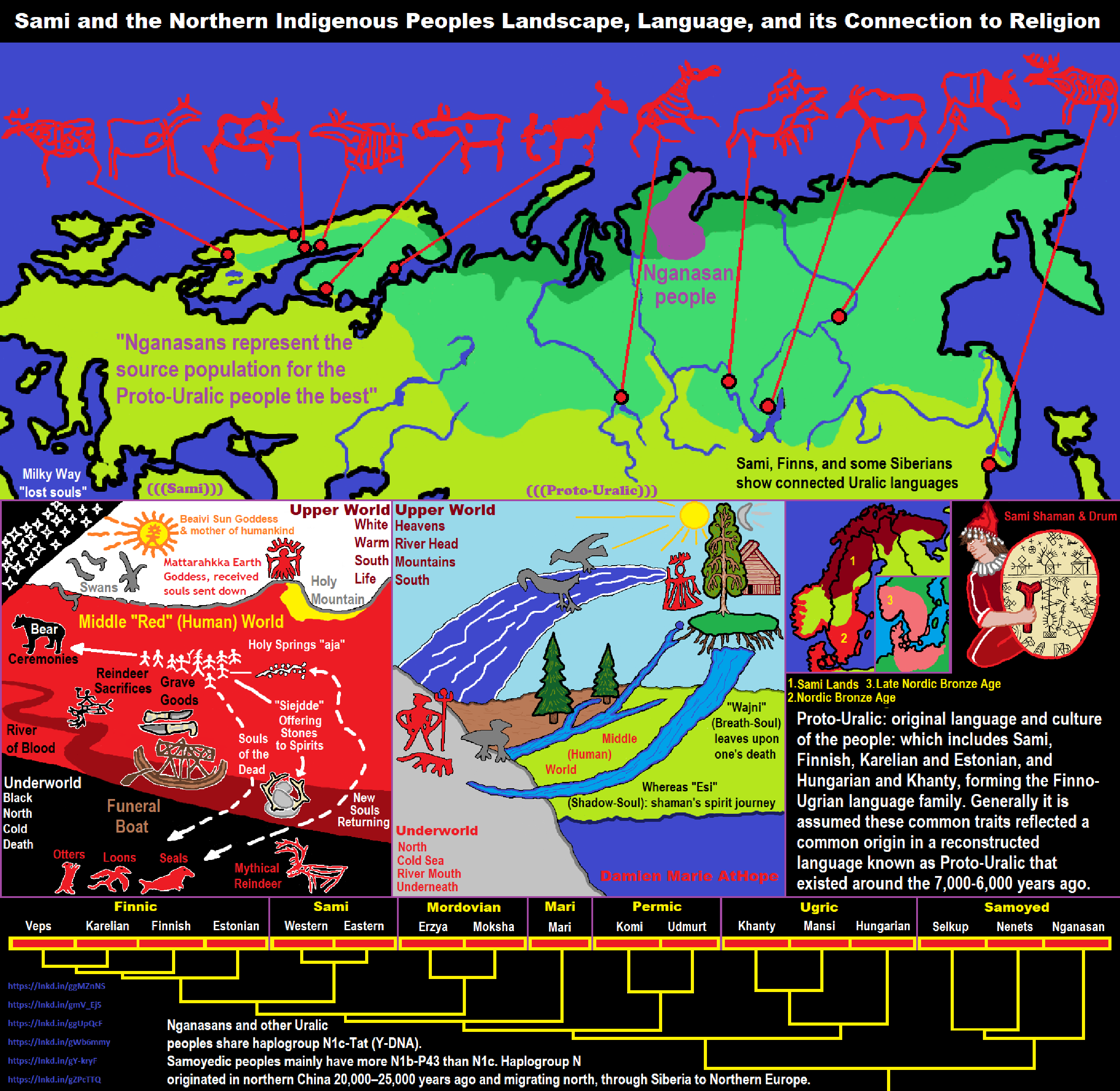

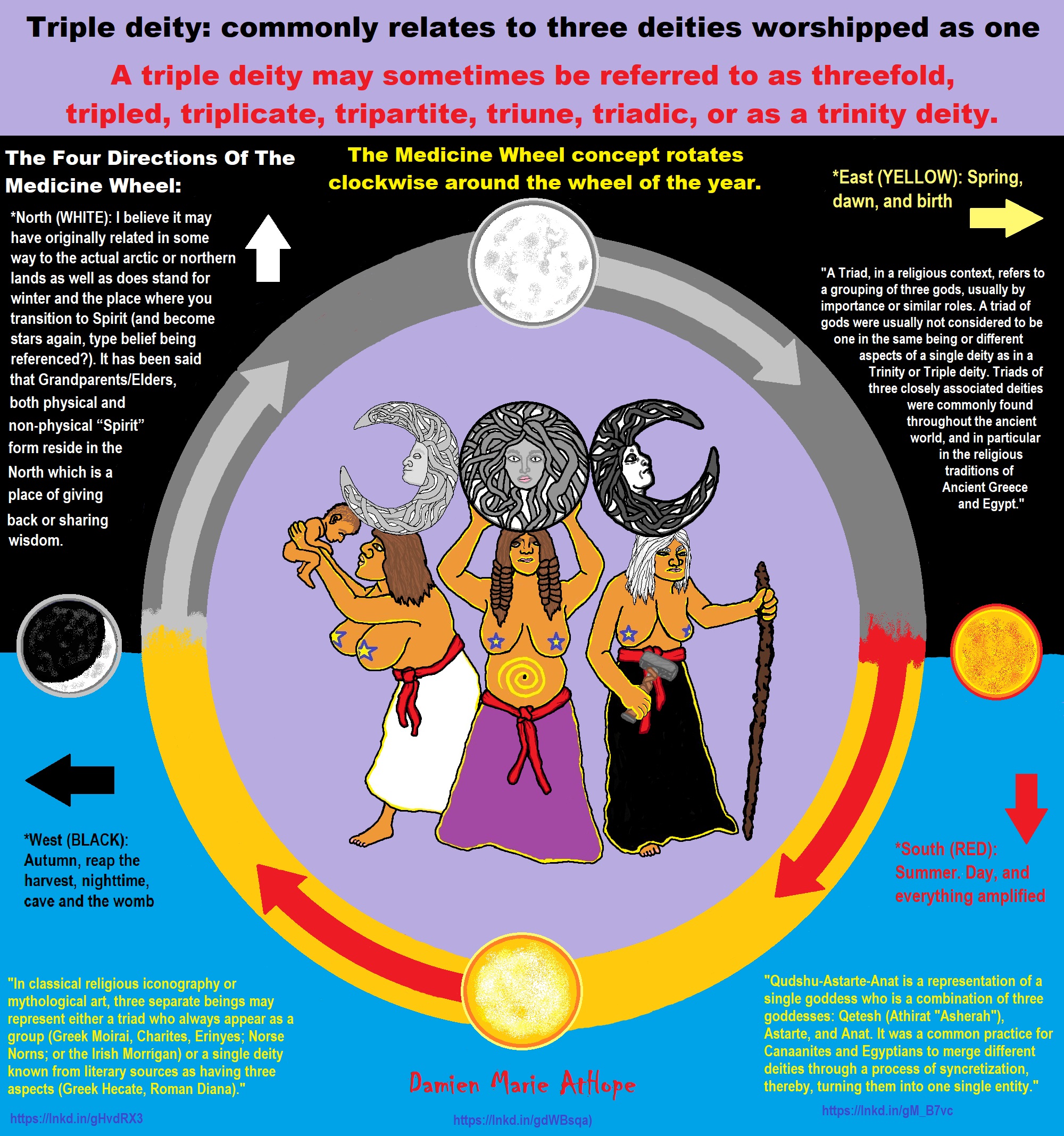
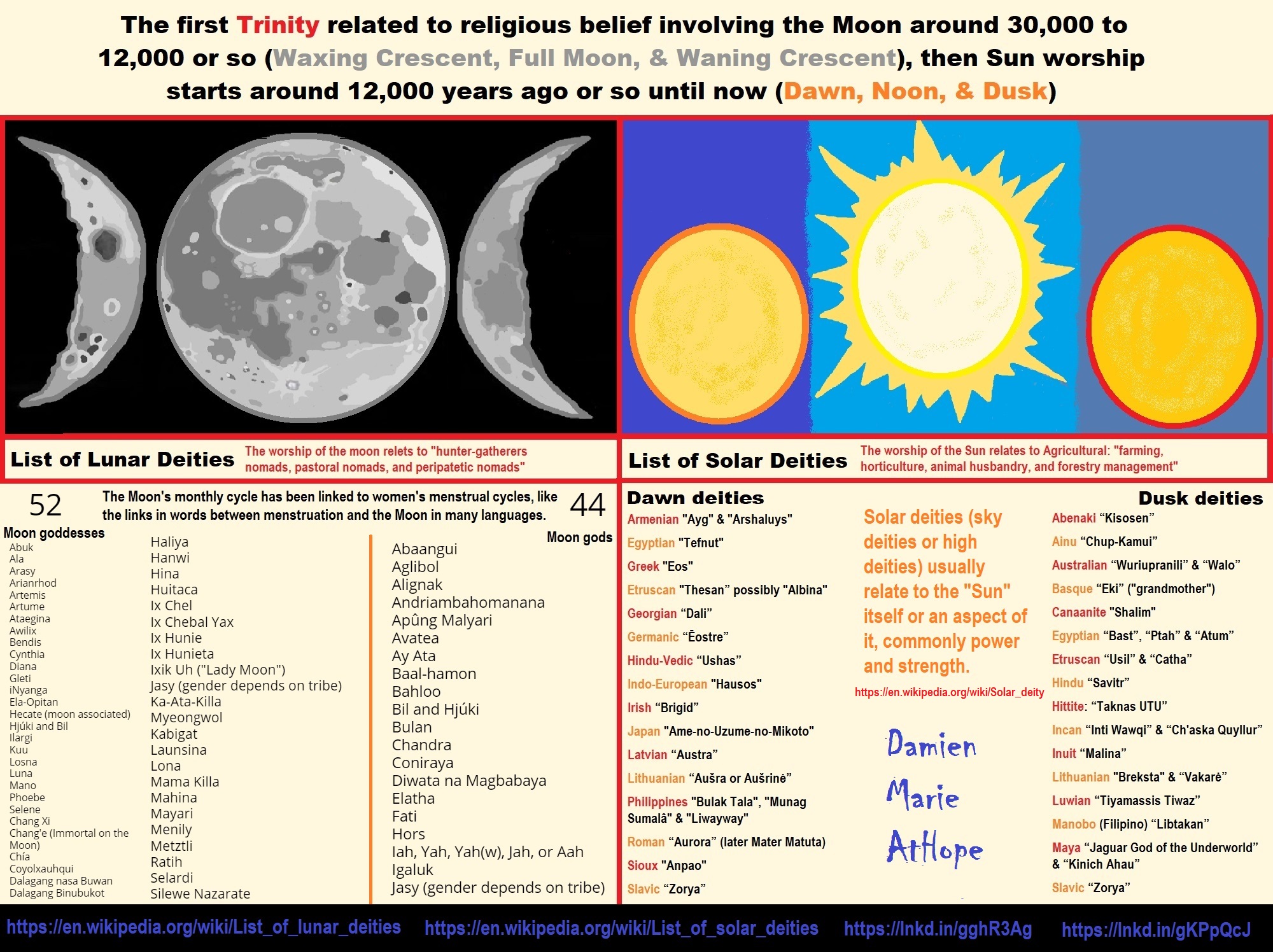
ref, ref, ref, ref, ref, ref, ref
List of Lunar Deities
“In mythology, a lunar deity is a god or goddess of the Moon, sometimes as a personification. These deities can have a variety of functions and traditions depending upon the culture, but they are often related. Some forms of moon worship can be found in most ancient religions. The Moon features prominently in art and literature, often with a purported influence in human affairs. Many cultures are oriented chronologically by the Moon, as opposed to the Sun. The Hindu calendar maintains the integrity of the lunar month and the moon god Chandra has religious significance during many Hindu festivals (e.g. Karwa Chauth, Sankashti Chaturthi, and during eclipses). The ancient Germanic tribes were also known to have a lunar calendar.” ref
“Many cultures have implicitly linked the 29.5-day lunar cycle to women’s menstrual cycles, as evident in the shared linguistic roots of “menstruation” and “moon” words in multiple language families. This identification was not universal, as demonstrated by the fact that not all moon deities are female. Still, many well-known mythologies feature moon goddesses, including the Greek goddess Selene, the Roman goddess Luna, and the Chinese goddess Chang’e. Several goddesses including Artemis, Hecate, and Isis did not originally have lunar aspects, and only acquired them late in antiquity due to syncretism with the de facto Greco-Roman lunar deity Selene/Luna. In traditions with male gods, there is little evidence of such syncretism, though the Greek Hermes has been equated with the male Egyptian lunar god Thoth.” ref
“Male lunar gods are also common, such as Sin of the Mesopotamians, Mani of the Germanic tribes, Tsukuyomi of the Japanese, Igaluk/Alignak of the Inuit, and the Hindu god Chandra. The original Proto-Indo-European lunar deity appears to have been male, with many possible derivatives including the Homeric figure of Menelaus. Cultures with male moon gods often feature sun goddesses. An exception is Hinduism, featuring both male and female aspects of the solar divine. The ancient Egyptians had several moon gods including Khonsu and Thoth, although Thoth is a considerably more complex deity. Set represented the moon in the Egyptian Calendar of Lucky and Unlucky Days.” ref
List of Solar Deities
“A solar deity is a god or goddess who represents the Sun, or an aspect of it, usually by its perceived power and strength. Solar deities and Sun worship can be found throughout most of recorded history in various forms. The following is a list of solar deities. A dawn god or goddess is a deity in a polytheistic religious tradition who is in some sense associated with the dawn. These deities show some relation with the morning, the beginning of the day, and, in some cases, become syncretized with similar solar deities.” ref, ref

ref, ref, ref, ref, ref, ref, ref, ref, ref, ref, ref, ref, ref, ref, ref, ref, ref
“The shaman is, above all, a connecting figure, bridging several worlds for his people, traveling between this world, the underworld, and the heavens. He transforms himself into an animal and talks with ghosts, the dead, the deities, and the ancestors. He dies and revives. He brings back knowledge from the shadow realm, thus linking his people to the spirits and places which were once mythically accessible to all.–anthropologist Barbara Meyerhoff” ref
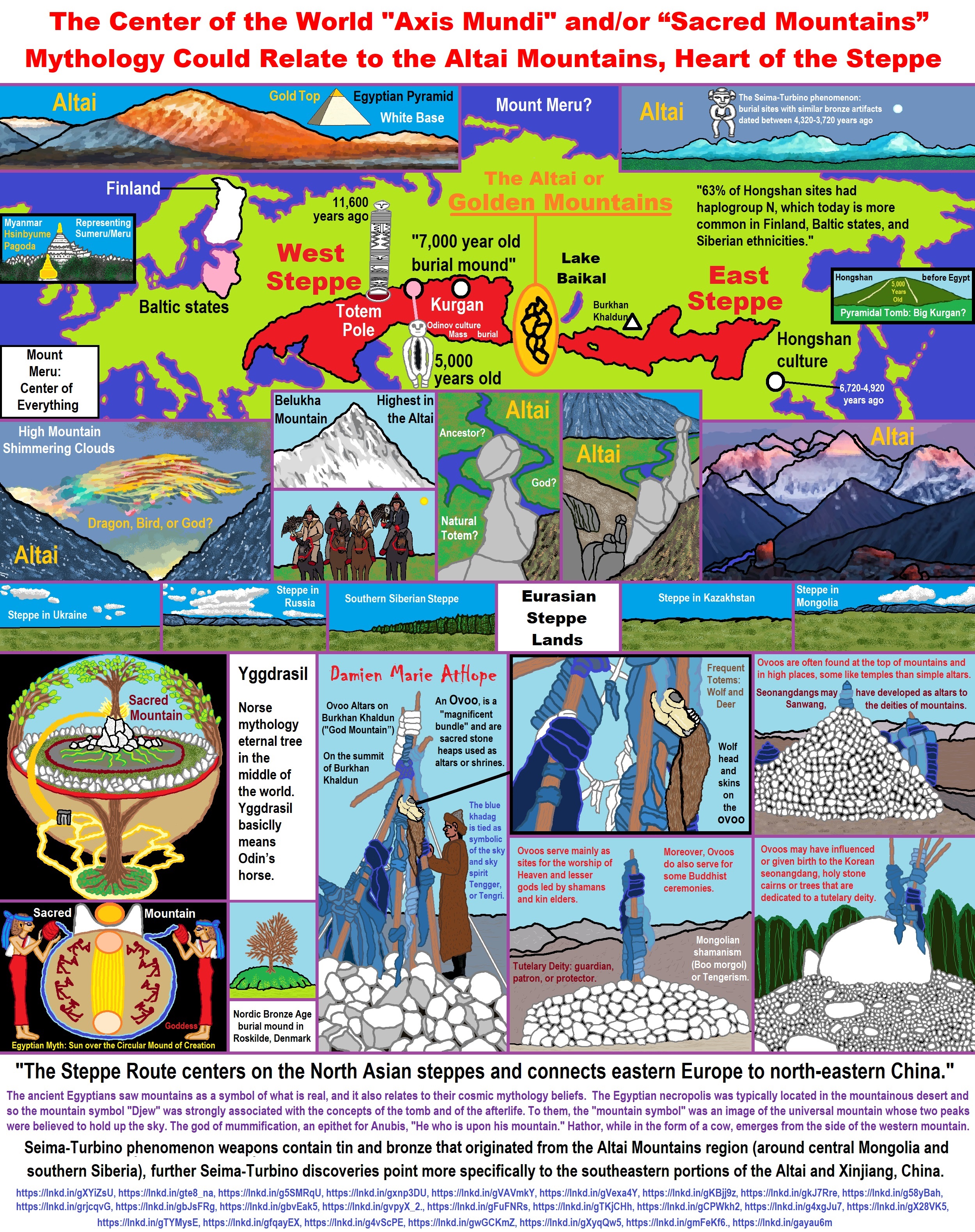
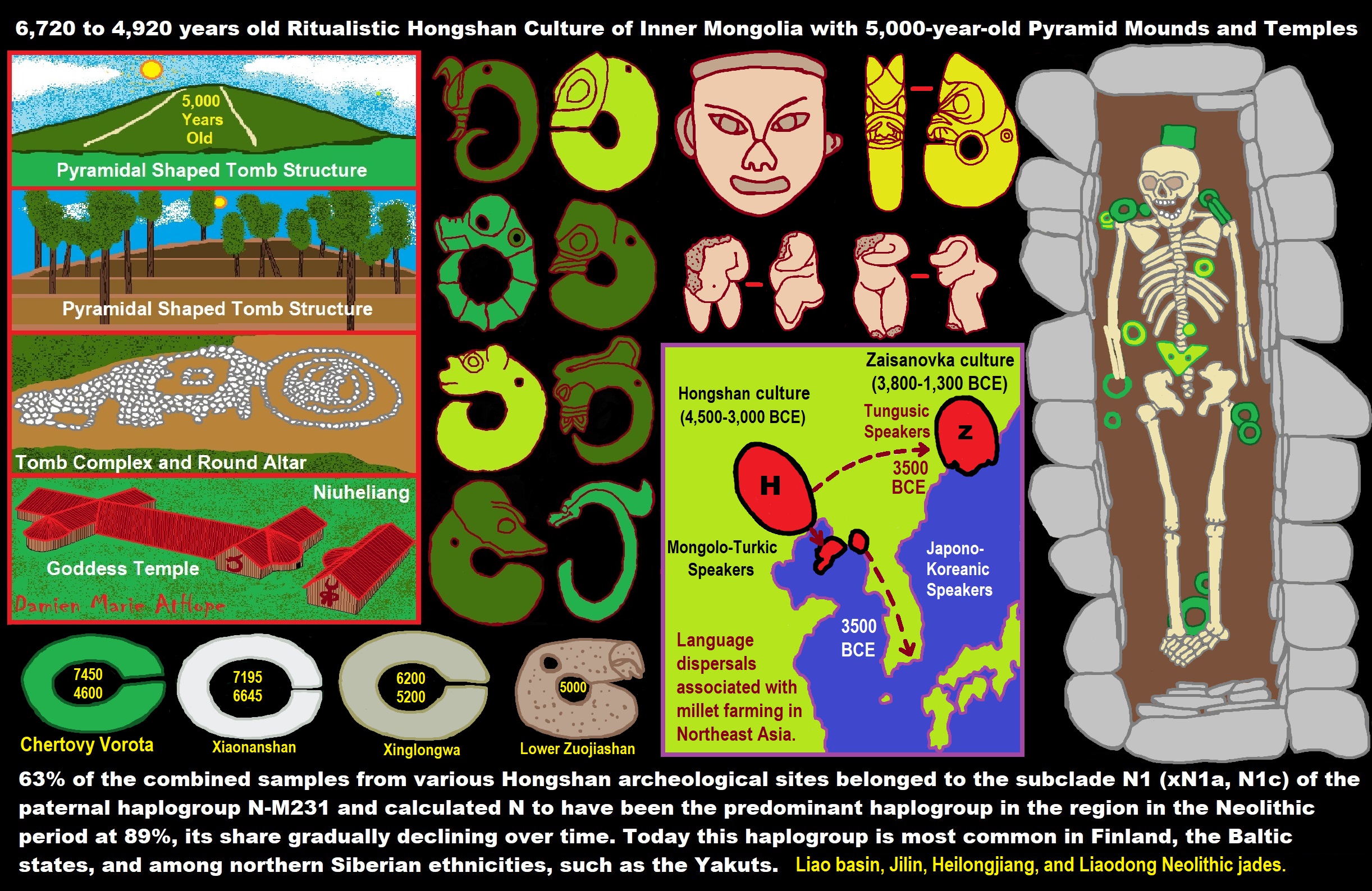

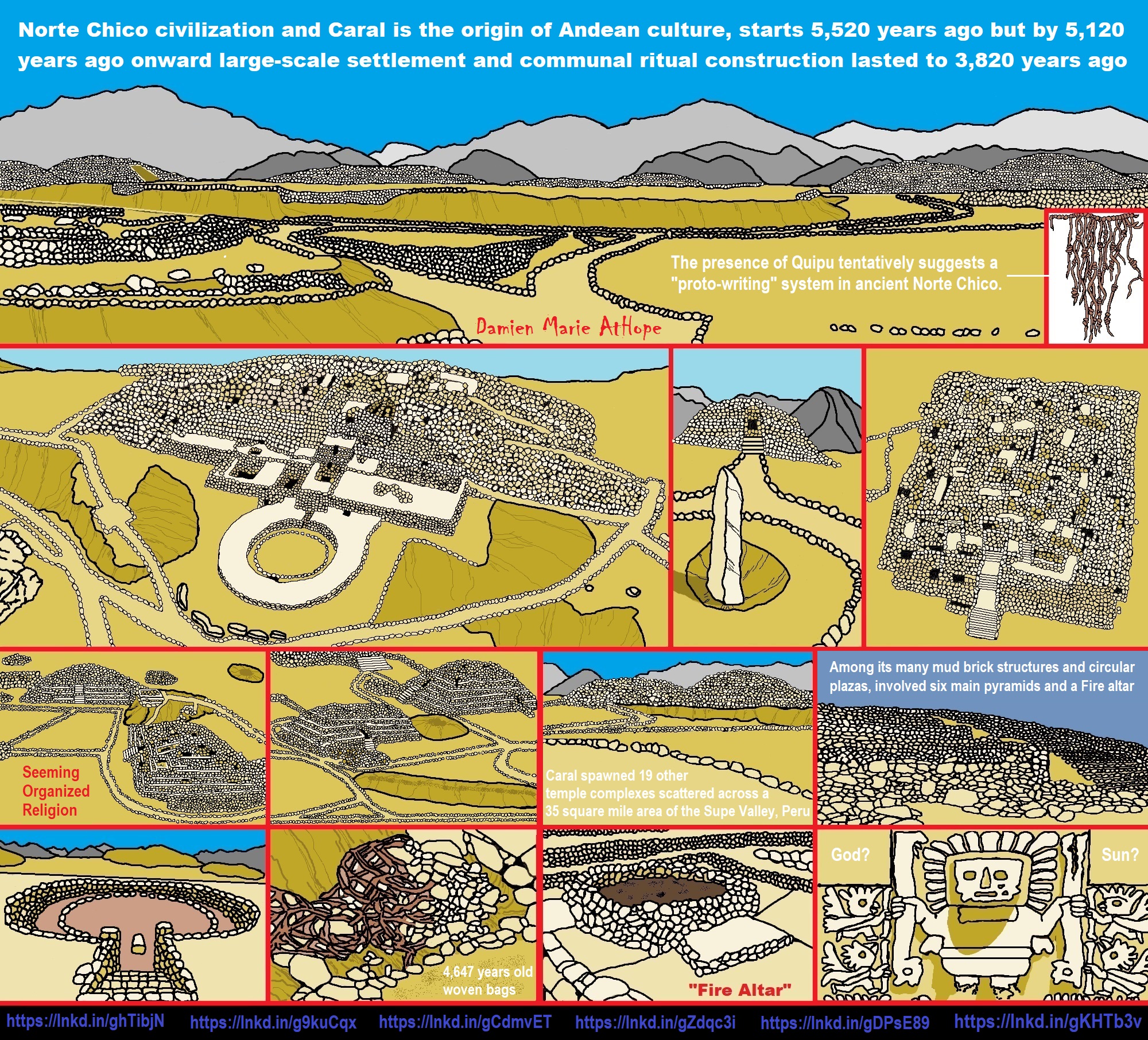
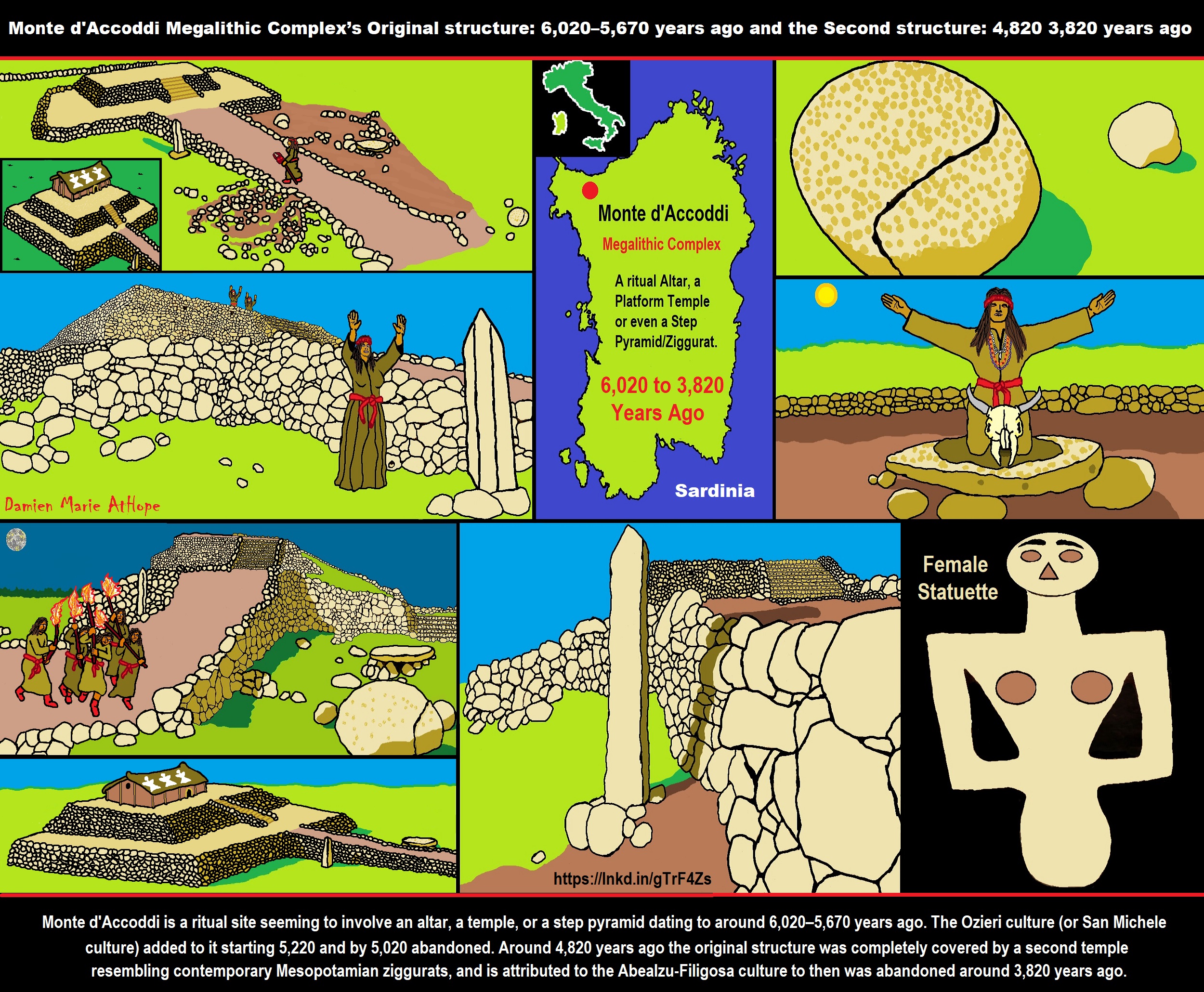
My life: I was extremely abused and became a criminal youth, but from then I have worked hard to change my life, and now fight for humanity. I am nothing. I am no one.
I am just ME. And you too are just ME…
By the way, I also share all my knowledge for free as I am an anti-capitalist anarchist, believing all knowledge should be free, to everyone on earth. I want all power to the people!!! I am a thought revolutionary, watch out.
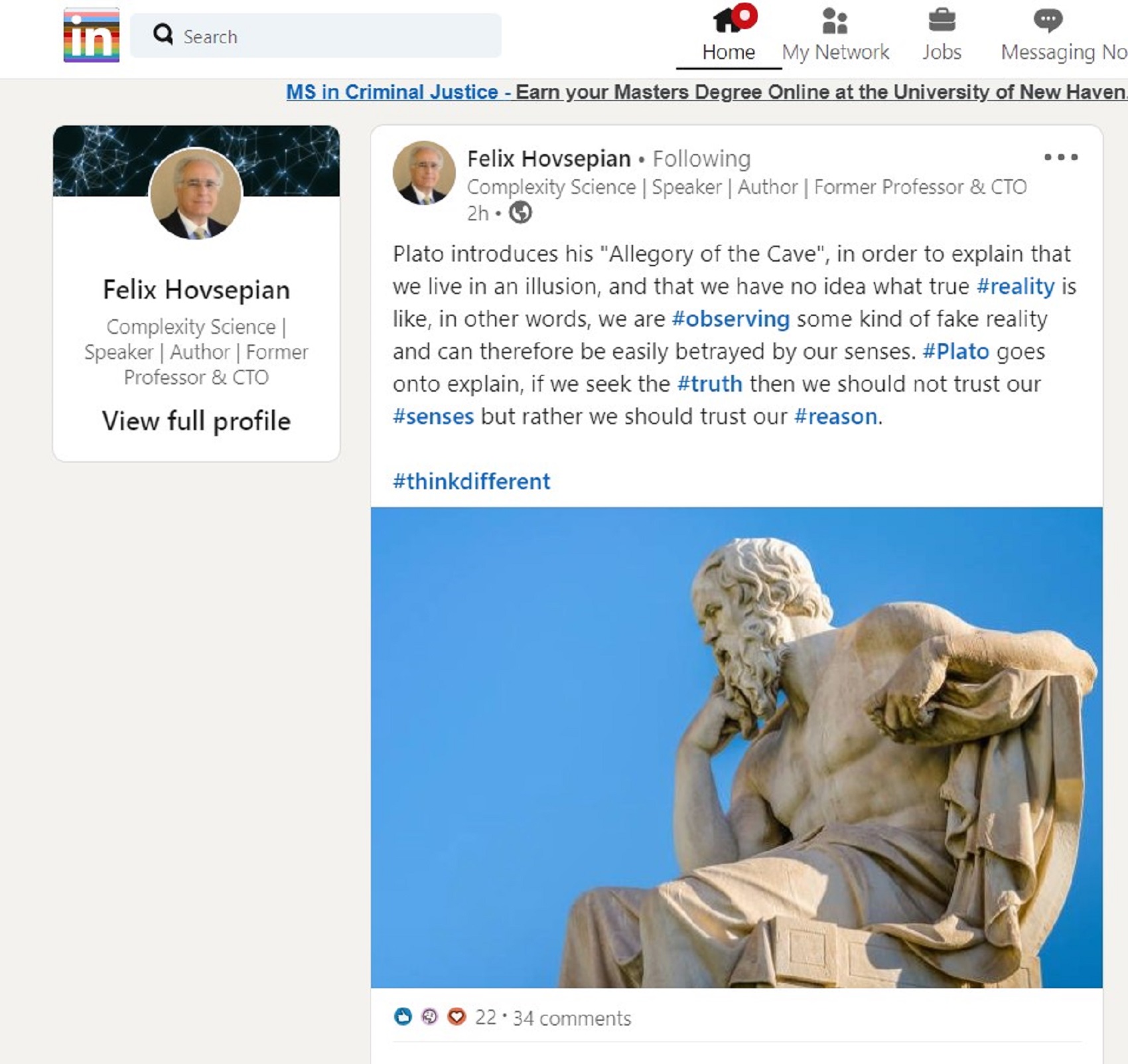
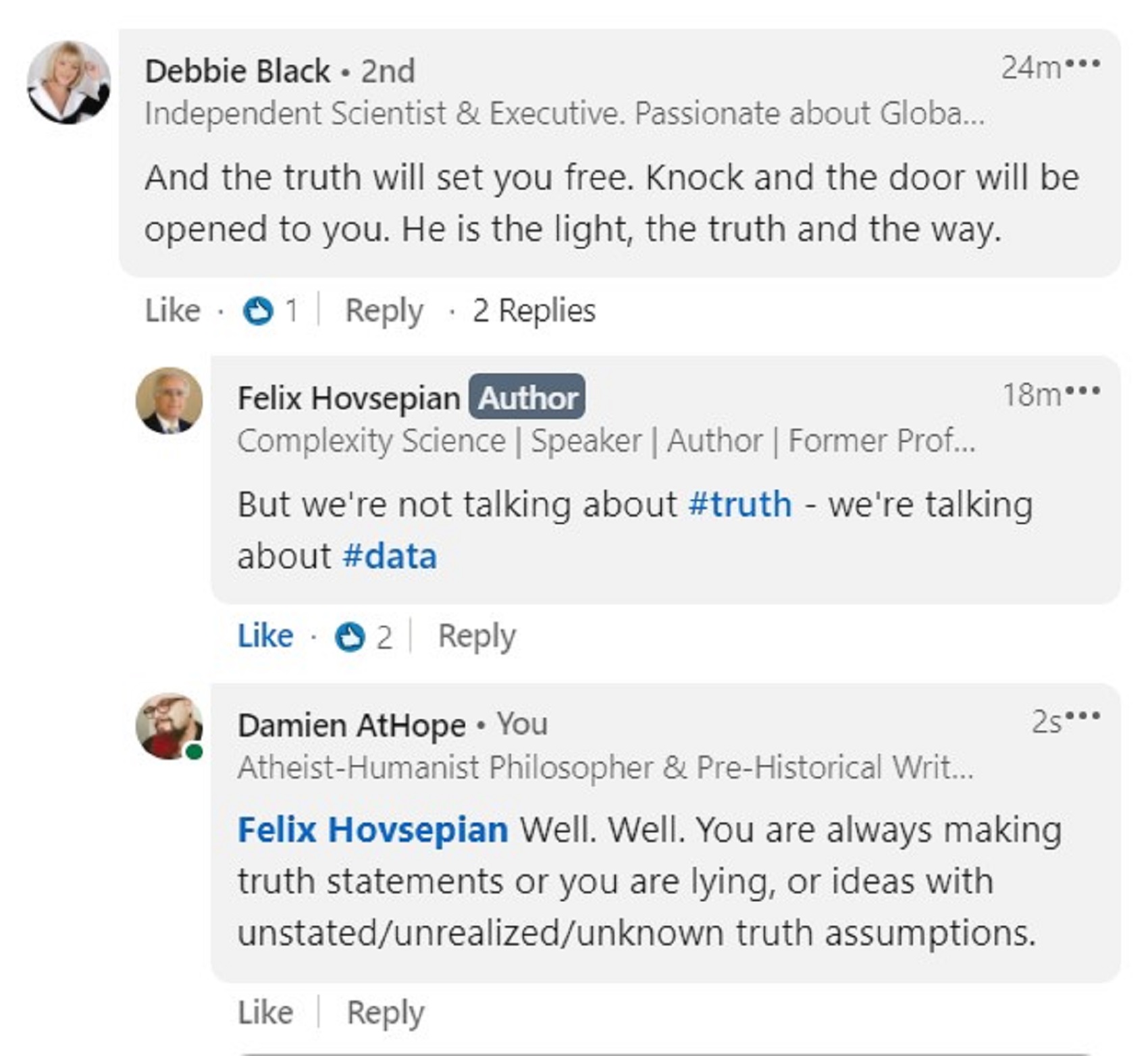
Logical Truth?
“Logical truth is one of the most fundamental concepts in logic. Broadly speaking, a logical truth is a statement which is true regardless of the truth or falsity of its constituent propositions. In other words, a logical truth is a statement which is not only true, but one which is true under all interpretations of its logical components (other than its logical constants). Thus, logical truths such as “if p, then p” can be considered tautologies. Logical truths are thought to be the simplest case of statements which are analytically true (or in other words, true by definition). All of philosophical logic can be thought of as providing accounts of the nature of logical truth, as well as logical consequence.” ref
“Logical truths are generally considered to be necessarily true. This is to say that they are such that no situation could arise in which they could fail to be true. The view that logical statements are necessarily true is sometimes treated as equivalent to saying that logical truths are true in all possible worlds. However, the question of whether any statements are necessarily true remains the subject of continued debate.” ref
“Treating logical truths, analytic truths, and necessary truths as equivalent, logical truths can be contrasted with facts (which can also be called contingent claims or synthetic claims). Contingent truths are true in this world, but could have turned out otherwise (in other words, they are false in at least one possible world). Logically true propositions such as “If p and q, then p” and “All married people are married” are logical truths because they are true due to their internal structure and not because of any facts of the world (whereas “All married people are happy”, even if it were true, could not be true solely in virtue of its logical structure).” ref
“Rationalist philosophers have suggested that the existence of logical truths cannot be explained by empiricism, because they hold that it is impossible to account for our knowledge of logical truths on empiricist grounds. Empiricists commonly respond to this objection by arguing that logical truths (which they usually deem to be mere tautologies), are analytic and thus do not purport to describe the world. The latter view was notably defended by the logical positivists in the early 20th century.” ref
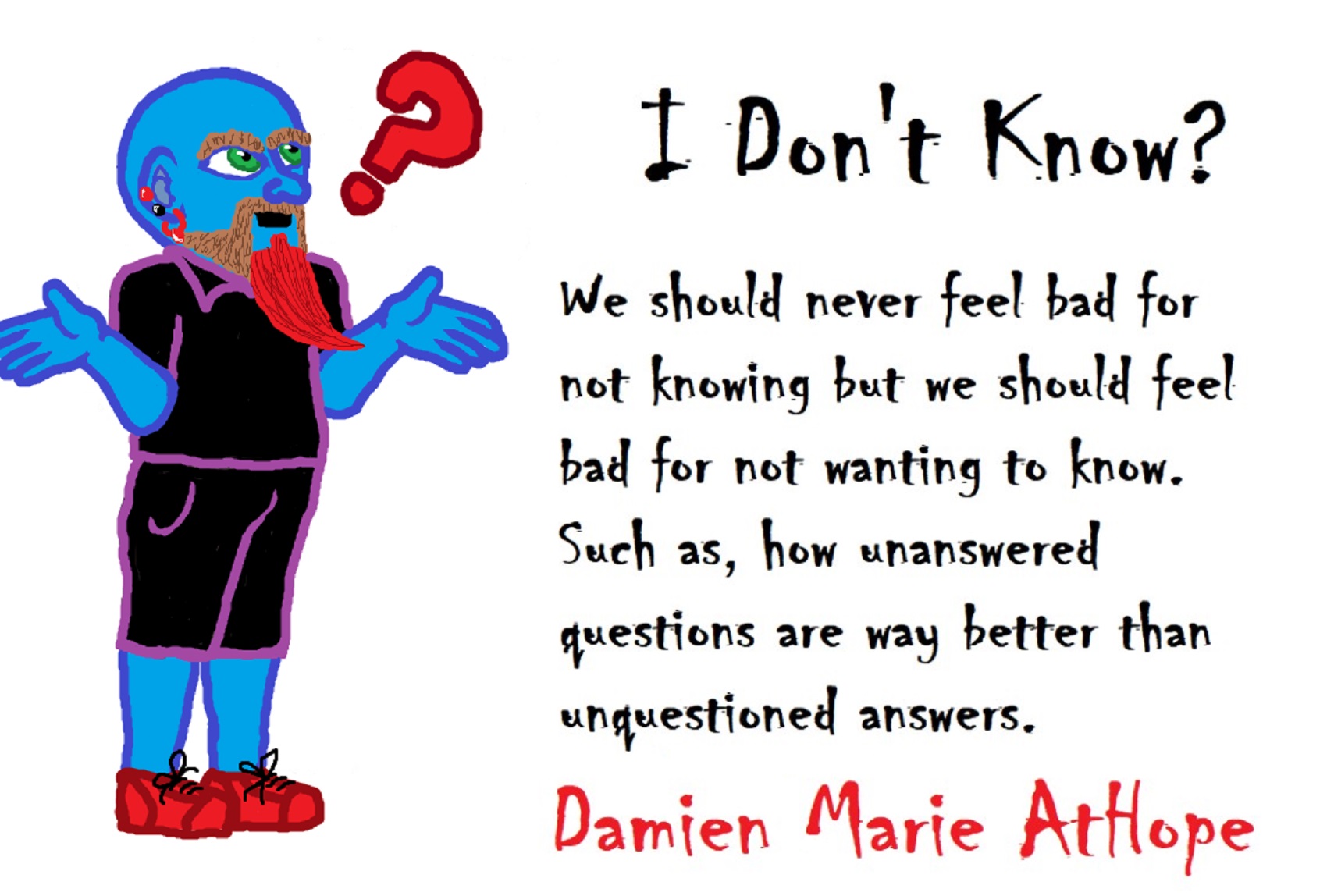



The Scientific Method & Naturalistic Rationalism: https://damienmarieathope.com/2015/07/the-scientific-method-naturalistic-rationalism/?v=32aec8db952d
The Scientific Method and its Philosophy Axioms: https://damienmarieathope.com/2017/12/the-scientific-method-and-its-philosophy-axioms/?v=32aec8db952d
What is the Difference Between Science or Non-science?
Some do realize all the utilized or assumed philosophy in the scientific method which to me entail things like Scientific Realism, Methodological naturalism, Logic, Rationalism, Empiricism, Methodological Skepticism, Justificationism, Correspondence Theory of Truth, Falsafacationism, Falabalism, Reliabilism, Probabilism, Probability Theory, etc.
Scientific Thinking not Faith Thinking
“Scientific theories, it has sometimes been maintained enable us to describe precisely how things happen, but cannot really explain why they happen as they do. According to this view (which I shall call ‘descriptivism’), the .search for explanation or for explanatory theories is an illegitimate intrusion of metaphysics into science. Descriptivism is related to (but not, as is often supposed, identical with) an even more radical view, which I shall call ‘instrumentalism’ (following Popper) or ‘fictionalism’. The instrumentalist agrees with the descriptivist that scientific theories are not explanatory but goes further, and denies that they are descriptive as well. Theories, according to the instrumentalist, are not descriptions of the world, but mathematical devices or fictions which enable us to classify, systematize and predict descriptions of the world. Opposed to both of these views is realism. My aim is to argue in favor of realism. And in general will favor a fallibilist, realistic, and rationalist position in opposition to the idealistic, antirealism and relativistic viewpoints some champion.” From: Essays on Realism and Rationalism by Alan Musgrave
The scientific method assumes a priori about the nature of reality, one is not agnostic about this, the scientific method is using philosophical rationalism as the nature of reality proof or truth by using a priori assumptions. The scientific method uses a priori for the nature of reality or rationalistic naturalism.
Is Evolution a Theory or a Fact? “It is both.”
Psychological certainty and Epistemic certainty?
“The Scientific Method is a body of techniques for investigating phenomena, acquiring new knowledge, or correcting and integrating previous knowledge. Consisting of systematic observation, measurement, and experiment, and the formulation, testing, and modification of hypotheses”. Experiments are a procedure designed to test hypotheses and are an important tool of the scientific method which is a continuous process that begins with observations about the natural world. As in other areas of inquiry, science (through the scientific method) can build on previous knowledge and develop a more sophisticated understanding of its topics of study over time. This model can be seen to underlay the scientific revolution. The overall process involves making conjectures (hypotheses), deriving predictions from them as logical consequences, and then carrying out experiments based on those predictions to determine whether the original conjecture was correct. There are difficulties in a formulaic statement of method, however. Though the scientific method is often presented as a fixed sequence of steps, these actions are better considered as general principles. Not all steps take place in every scientific inquiry (nor to the same degree), and they are not always done in the same order. ” ref
“Scientific realism is a positive epistemic attitude toward the content of our best theories and models, recommending belief in both observable and unobservable aspects of the world described by the sciences.” ref
“Methodological naturalism (which involves natural elements, principles, and relations of the kind studied by the natural sciences) a belief or theory that opinions and actions should be based on reason and knowledge rather than on religious belief or emotional response. Methodological naturalism is the label for assumption of philosophical naturalism or metaphysical naturalism when working with the scientific method. Methodological naturalists limit their scientific research to the study of natural causes, because any attempts to define causal relationships with the supernatural are never fruitful, and result scientists assume that all causes are empirical and naturalistic, which means they can be measured, quantified, and studied methodically. However, this assumption of naturalism only need not extend beyond an assumption of methodology. This is what separates scientific methodological naturalism from metaphysical naturalism — is scientific methodological naturalism is merely a tool and makes no truth claim, while metaphysical naturalism makes the philosophic — essentially atheistic — claim that only natural causes exist.” ref, ref, ref
“Logic (which involves a philosophy use and study of valid reasoning “rationalism”) Still not convinced that Science uses philosophy or what is unjustified claims that require doubt because of the philosophy of skepticism, if not tells us how without any branch of philosophy you know this, otherwise, I say it’s some philosophy. So, wait which is it then, does philosophy skepticism trump science observation proof of reality, if so I thought you did not think philosophy was better than science?
“Rationalism in philosophy is the epistemological view that ‘regards reason as the chief source and test of knowledge’ or ‘any view appealing to reason as a source of knowledge or justification’. More formally, rationalism is defined as a methodology or a theory ‘in which the criterion of the truth is not sensory but intellectual and deductive’.” ref
“Empiricism is a theory that states that knowledge comes only or primarily from sensory experience. Empiricism in the philosophy of science emphasizes evidence, especially as discovered in experiments. It is a fundamental part of the scientific method that all hypotheses and theories must be tested against observations of the natural world, “knowledge is based on experience” and “knowledge is tentative and probabilistic, subject to continued revision and falsification.” One of the epistemological tenets is that sensory experience creates knowledge. Empirical research, including experiments and validated measurement tools, guides the scientific method.” ref
“Methodological Skepticism is distinguished from philosophical skepticism in that methodological skepticism is an approach that subjects all knowledge claims to scrutiny with the goal of sorting out true from false claims, whereas philosophical skepticism is an approach that questions the possibility of certain knowledge. Methodological Skepticism also called Scientific skepticism which concerns testing beliefs for reliability, by subjecting them to systematic investigation using the scientific method, to discover empirical evidence for them. Scientific skeptics maintain that empirical investigation of reality leads to the truth, and that the scientific method is best suited to this purpose. Scientific skeptics attempt to evaluate claims based on verifiability and falsifiability and discourage accepting claims on faith or anecdotal evidence.” ref, ref, & ref
“Justificationism in philosophy is an approach that regards the justification of a claim as primary, while the claim itself is secondary; thus, criticism consists of trying to show that a claim cannot be reduced to the authority or criteria that it appeals to.” ref
“Correspondence Theory of Truth states that the truth or falsity of a statement is determined only by how it relates to the world and whether it accurately describes (i.e., corresponds with) that world. Correspondence theories claim that true beliefs and true statements correspond to the actual state of affairs. This type of theory attempts to posit a relationship between thoughts or statements on one hand, and things or facts on the other.” ref
“Falsificationism“. Popper stresses the problem of demarcation—distinguishing the scientific from the unscientific—and makes falsifiability the demarcation criterion, such that what is unfalsifiable is classified as unscientific, and the practice of declaring an unfalsifiable theory to be scientifically true is pseudoscience. Naïve falsificationism is an unsuccessful attempt to prescribe a rationally unavoidable method for science. Naïve falsification considers scientific statements individually. Scientific theories are formed from groups of these sorts of statements, and it is these groups that must be accepted or rejected by scientists. Sophisticated methodological falsification, on the other hand, is a prescription of a way in which scientists ought to behave as a matter of choice. Statements, hypotheses, or theories have falsifiability or refutability if there is the inherent possibility that they can be proven false. They are falsifiable if it is possible to conceive of an observation or an argument which could negate them. In this sense, falsify is synonymous with nullify, meaning to invalidate or “show to be false”.” ref
“Fallibilism is the epistemological thesis that no belief (theory, view, thesis, and so on) can ever be rationally supported or justified in a conclusive way (that no evidence or reason can ever overturn it). Always, there remains a possible doubt as to the truth of the belief (ie. one is always open to valid and reliable reason and evidence that could disprove or deminish the belief).” ref
“Reliabilism, a category of theories in the philosophical discipline of epistemology, has been advanced as a theory both of justification and of knowledge. One such theory is called “process reliabilism” which has been used as an argument against philosophical skepticism, such as the brain in a vat thought experiment. Moreover, process reliabilism (a form of epistemic externalism) focusing on the contribution of the truth, mainly the process of producing reliable or certain belief.” ref
“Probabilism in theology and philosophy, is an ancient Greek doctrine of academic skepticism holding that in the absence of certainty, probability is the best criterion. And a probabilist is someone who believes that central epistemological issues are best approached using probabilities. This thesis is neutral with respect to whether knowledge entails certainty or whether skepticism about knowledge is true.” ref
“Probability theory is the branch of mathematics concerned with probability. Although there are several different probability interpretations, probability theory treats the concept in a rigorous mathematical manner by expressing it through a set of axioms. As a mathematical foundation for statistics, probability theory is essential to many human activities that involve quantitative analysis of data. Methods of probability theory also apply to descriptions of complex systems given only partial knowledge of their state, as in statistical mechanics. A great discovery of twentieth-century physics was the probabilistic nature of physical phenomena at atomic scales, described in quantum mechanics.” ref
Pragmatic theory of truth, Coherence theory of truth, and Correspondence theory of truth
Here is more on fallibilism:
Fallibilism applies that assessment even to science’s best-entrenched claims and to people’s best-loved commonsense views. Some epistemologists have taken fallibilism to imply skepticism, though, it is fallibilist epistemologists (which is to say, the majority of epistemologists) who tend not to be skeptics about the existence of knowledge or justified belief. Generally, those fallibilist epistemologists see themselves as thinking about knowledge and justification in a comparatively realistic way — by recognizing the fallibilist realities of human cognitive capacities, even while accommodating those fallibilities within a theory that allows perpetually fallible people to have knowledge and justified beliefs. Epistemologists generally seek to understand knowledge and justification in a way that permits fallibilism to describe a benign truth about how we can gain knowledge and justified beliefs. The difference between fallibilism and skepticism lies in their beliefs about what constitutes knowledge. Fallibilists and skeptics both believe that we can never establish the truth of a proposition with 100% certainty. However, skeptics believe that we don’t know what we cannot confirm with 100% certainty, while fallibilists have a more moderate view where 100% certainty is not required for knowledge. When I state “fallibilists and skeptics both believe that we can never establish the truth of a proposition with 100% certainty.””, what I as a thinker using Fallibilism, believe that we can never establish the truth of a proposition with 100% certainty is referring to how it could be later found to be in error and may need adapting to the increase in epistemic accuracy tempered with Epistemic Humility. We are 100% certain all the time (certainty is a belief state), what most who doubt 100% certainty, likely are referring to is our ability to validate a kind of certainty or level of certainty as there is not one universal thinking on certainty with the two main types being psychological certainty or Epistemic Certainty. Certainty is connected to a belief state or level of sureness, so we can be 100% psychologically certain of things we state normatively. As in If I or you take a piece of text and know things about it as in is it written in a language legible to the general group of english only speakers to know it is written in english, as well as many other things with 100% logically certain belief. But I am open to new information to prove some thinking could be found in error in some way need updating to a more accurate view as a general epistemic persuasion. Ref Ref
Rationalism and the Enlightenment
Rationalist thinkers vs Skeptic thinkers
If I made the statement that the following proposition was 100% true and certain today and for all time that,
“There is a chance that Damien AtHope will either reply or not reply to his posts on FB”
I think people like to only talk as if there is one type of certainty as a universal true class. When I hold that there are different kinds of certainty such as first needing to know what type of certainty that I am referring, as in what is expressed in this statement:
“There is a chance that Damien AtHope will either reply or not reply to his posts on FB”
This is a kind of normative statement so to me normative thinking standards apply. As such, we can know that I proposed an “hedge one’s bets trying to keep from being wrong by saying you believe two contrary propositions at the same time which could be an unintentional oddity but just as likely is used as a form of intellectual dishonesty involving a rhetoric claim used as a red herring evasion.” Moreover, with further understanding we can also know that by accepting such an openness to all possibilities, what it is telling us, beyond its not making an open strong opinion on one side in its options, other than the thinking logically certain that accepting all possible outcomes of a being’s behavior is also maybe unwittingly confirming a stance to all, the possible presuppositions hidden in that, or that it seems “hedge one’s bets” possibly trying to avoid the possibility of making a claim that offers a thinking that is outside of challenge may not work that well unless you accept the belief in the reality of a world with free agents or even unthinking agents doing the choosing. But believing in as well as epistemically certain about the reality of a world, is not doing anything that strange assuming a lot a we all do all the time. But that’s the only thing we can do in a sense is unwittingly confirm a stance for the possible presuppositions hidden in much that we think or say as it seems we often express a belief in the reality of a world presupposition (which I believe we have extensive epistemic certainty, thus deserves 100% psychological certainty until shown otherwise.
What do you mean by god Evidence?
Atheistic Null Hypothesis: There is no God/Gods
Folk Logic: YOU CAN’T PROVE A NEGATIVE because you can PROVE A NEGATIVE
No there is No gods and No we are not a Brain in a Vat
In reality, the world is quite logical, tangible, and natural in how it operates although as it’s devoid of magic or mind it thus is unaware of its absurdity and cruelty. Reality is logical in that things are fixed there is not a person one day and a horse another day. Reality is logical and that is why it is predictable and quantifiable. Whereas in the religious mind, they seem to think the world is illogical, unreal, unnatural, filled with reality-defying magical dreams. Dreams in which their chosen made up reality supposedly operates with magic and mind (god or whatever) some claims even hold that this god or somethingism magic is fully aware of our perceivable reality’s absurdity and cruelty, as well as reportedly planned that our “proven” reality was meant to be this way. And though that may sound thrilling to some such ridiculousness is not in evidence in our true rational “naturalistic” reality devoid of all magic or mind.
Kindness Matters
I am virtuous to the vulnerable and champion justice, so valiantly, as I have experienced the hateful lash of unkindness and wish to champion its opposite, radical kindness in an unkind world, a sigh of true bravery.
I even use ethics and kindness to win debates with bigots. I can show you screenshots if interested to see what I am talking about. I can do something almost no one can. I can dominate others without fighting them. Kindness is my superpower because they can’t fight “kindness” in good conscience. Kindness is my kryptonite for bullies. I always ask, “Are you a good person?” They never have “truly” answered.
How, can I win, so easily, you ask, well, I am a good person and stay a good person, the entire time they hate. So when I ask, “Are you a good person” it is actually a dignity attack. My art and part of my main style, I teach, I call “Truth Navigation” is several strategies and thinking tools. I am just trying to be a good human, kind to all. I am ME.
It is always our closeness and affinity with the concept of “goodness” that can win all battles.
May we, above all things, be good humans, right?
Are you a good person?
And how would anyone know from something freely available to all as proof?
Did you assume on ME?
I was born in Southern California, I was brought into a sick unkind world. I was raised by sick unkind people. I was a light in the dark for my family is way too fond of staying sick unkind people. I was first abused by my first memory. How sad a tale my abused life was. I was treated by a way of unkindness in the most inhuman way.
My main clime, in society, has always been, my intersex birth.
I am just stating what I have done intellectually from 2006:
I created: “Axiological Atheism” as an actual useable atheist thinking.
I created: “Moral-Love & Moral-Fear Axiological Morality”
I created: Axiological awareness of why reality is real attacking skepticism, head-on, and challenging, it like no other, it is not self-justifying, done, I win, Next, please…
I created: My debate/discussion style “Truth Navigation”
I created: “The Hammer of Truth” use of Ontology, Epistemology, and then Axiology.
I created: The use of “Dignity” in debating tactics and Dignity attacks as well as Dignity Enrichment strategies in questioning.
I created: “Methodological Rationalism”
Etc. I am getting tired. lol
How do you think I got so wise…? Mistake after failure, repeat. Mistake after failure, repeat. Wisdom…
I am actually surprised that more anarchists don’t even know about me. I am about to soon be world-famous and I am a mystery to the people like me. It is an odd world, I know more than anyone in the world about the evolution of religion, I will be written about in history books when the world gets just how much I have figured out. My book will change it all forevermore. I am anti-capitalist as you know, I believe, anyway, I am and I have given it all out to the world freely. I have worked 16 hour days to 12 hour days, almost every day, from 2006, just to learn all I have. And, I could seek wealth, selfishly as most do. But, wait, I am an anarchist, we don’t give a fuck about money, I only care for humanity. So I gave all my work for free to humanity as my gift of love.
Important to challenge?
It is just as important to challenge one’s own behavior as to challenge the behavior of others.
I don’t generally assume everyone agrees to the facts and that it is often upon me to help them navigate truth. How can we silently watch as yet another generation is indoctrinated with religious faith, fear, and foolishness? Religion and it’s god myths are like a spiritually transmitted disease of the mind. This infection even once cured holds mental disruption which can linger on for a lifetime. What proof is “faith,” of anything religion claims by faith, as many people have different faith even in the same religion? When you start thinking your “out, atheism, antitheism or antireligionism is not vitally needed just remember all the millions of children being indoctrinated and need our help badly.
Ones who desperately need our help with the truth. Three things are common in all religions: “pseudo-science,” “pseudo-history,” and “pseudo-morality.” And my biggest thing of all is the widespread forced indoctrination of children, violating their free choice of what to not believe or believe, I hate forced hereditary religion. Religion and it’s god myths are like a spiritually transmitted disease of the mind. This infection even once cured holds mental disruption which can linger on for a lifetime.
I am not the thing abuse made, I am a shooting star blazing bright, shining far pass my past. If you are a religious believer, may I remind you that faith in the acquisition of knowledge is not a valid method worth believing in. Because, what proof is “faith”, of anything religion claims by faith, as many people have different faith even in the same religion? Do you want what is true or want what you believe without concern for what may actually be true?
Justified / True / Beliefs
Justified? To established justification, I use the philosophy called Reliabilism.
“Reliabilism is a general approach to epistemology that emphasizes the truth-conduciveness of a belief-forming process, method, or another epistemologically relevant factor. The reliability theme appears both in theories of knowledge and theories of justification.” Ref
True? For the true part, I use the philosophy called The Correspondence Theory of Truth.
“The correspondence theory of truth states that the truth or falsity of a statement is determined only by how it relates to the world and whether it accurately describes (i.e., corresponds with) that world.” Ref
Beliefs? For the beliefs part, I use what philosophy calls The Ethics of Belief.
“The “ethics of belief” refers the intersection of epistemology, philosophy of mind, psychology, and ethics. The central is norms governing our habits of belief-formation, belief-maintenance, and belief-relinquishment. It morally wrong (or epistemically irrational, or imprudent) to hold a belief on insufficient evidence. It morally right (or epistemically rational, or prudent) to believe on the basis of sufficient evidence, or to withhold belief in the perceived absence of evidence. It always obligatory to seek out all available epistemic evidence for a belief.” Ref
I am a Rationalist, Freethinker, Humanist, and Secularist
*Rationalism is a philosophy in which a high regard is given to reason (specifically logic) and to empirical observation.
*Freethinker a person who forms his or her own opinions about important subjects (such as religion and politics) instead of accepting what other people say.
*Humanism is a philosophical and ethical stance that emphasizes the value and agency of human beings, individually and collectively, and generally prefers critical thinking and evidence (rationalism, empiricism) over established doctrine or faith (fideism).
*Secular humanism is a comprehensive, nonreligious life stance incorporating: A naturalistic philosophy. A cosmic outlook rooted in science. A consequentialist ethical system.
I am more like a guardian demon than a guardian angel but I think you get my point. lol
I not only love others’ success, I actually try to help others with their success for free all the time.
Big Bad influencer ME
I am an influencer or so Facebook claims as they have banned me for about one year saying that I as an influencer are under stricter rules and was being banned. We all are possible influencers. But it is not equal, in our influence. I can, if I so want, am able to push others mentally, even if they do not want to. I do not do that as it is not ethical, to treat people like that. I see my skills as a gift made to better the world, not a selfish tool, to help only me get over on others. I am an independent thinking being and that alone is an important influence, others, can also benefit from. We rise by helping each other. Some influencers do so to help humanity, some do it both for humanity, and wealth others only do it for the wealth. Such wealth-goal influencers are still mildly beneficial even with their wealth goals as some may still actually be inspired by them. However, the true positive benefit will always be found in those just trying to better the world not simply their pocketbook. I am an anarchist I seek humanity above it all. I welcome wealth but I do not seek wealth, rather I do all I do out of care for humanity.
So if the influence provided is rich in goodness and promotes human flourishing, I am all for it. We need you.
I am a power from the anti-power crusaders, I am an anarchist. I offer my life as a gift of love to the world. I don’t seek power rather I want to empower others to their greatness. We rise by helping each other.
We are powerful not in what the world of non-anarchists value, we anarchists are the ones who see the real hidden power has never been force, no, not force it will always grow weak one day. But love, no LOVE, that is limitless. We are love as anarchists in a world too fond of hate. We are here to show the world our better way. Kindness. We rise by helping each other.
What is my VALUE you may ask, well, I would benefit any business is because of my extremely original and accurate methodological rationalism mind that breaths the fire of reason. I am like an untaped genus, think of me as an anarchist Steve Jobs (an American business magnate, industrial designer, investor, and media proprietor).
YOU are needed too. Yes, I am not joking, all good is doing good and we need lots more of doing good just because it is good and there is a big need for more good in the world. So please, you matter, we need all good people around the world doing all we can.
I am supportive of what makes people happy. I do think my way others have different ways. I care are you a good human? If yes, I love that.
Lesson One
How to think like a mutualistic communitarian anarchist thinker:
So. My wife is screaming ants!!! We are as if invaded by an ant army. The march in line from the outside door power matching their little feet to our cat’s food bowl and water dish. She said do we need an exterminator??? I calmly say no. she said do we need “kill bate” as going the store now is scary it is like that walking dead show you like. I say no again. She said what can we do???
I calmly point to the dry dead grass outside. I then say see all the food and water for our fellow dignity beings the ants is gone. I said hurry, our fellow dignity beings need our help. She looked at me a little odd??? I said put both food and water for our follows and they will be more than happy to stay outside. She said but how about this line in the house??? Do we kill them? I ask back should one dignity being needlessly killed another fellow dignity being and still feel they love kindness? I said we don’t have to kill even one. Just put the food outside and they will all follow it back outside.
Problem over and no dignity being was needlessly killed as is good for one action… Needlessly to say this morning only one ant remained walking aimlessly.
I am a high functioning sociopath I score a 3 on the empathy scale, normal is 7 to 9. I can care more about humanity as a whole than I feel for any one person. I was extremely abused and that changed me.
Be a good human.
Feel free to share anything I have as long as it is offered free to everyone
I then offer my stuff free.
Helping me, Help you?
I am open to doing talks for groups, organizations, media, agencies, corporations, meetups, conventions, arenas, where ever almost within reason as I like helping others if I can, for free but need help, getting to you, or staying with you, so I can offer what I am good at. Thus, I am open to help in this way for free but I need your help to help me, so I can help you.
I am open and available for employment in the short term, I will offer my consultant services for $50 hr. and only under a three-month contract.
If needed for extended contract work, my consultant services are $75 hr. If needed as an employee, my salary is $156,000 a year.
I am interested in helping others with my knowledge or skills but only do this as a paid consultant. Heroes often hide among us until they express their act of bravely. May I too be so brave. I aspire to the heights of courage, supporting radical kindness in an unkind world. But I do so valiantly, knowing that we rise by helping each other. May I be a good human and support radical kindness as a positive proactive way to further real change in the world. If good people do nothing then nothing good may be done. Thus, I am responsible. I never wanted to be the one to work as an activist but a good person, cannot sit silently, doing nothing, when the atheist movement is in such need.
My Approach to Religion?
I have been told by several scholarly friends ranging from archaeologists, anthropologists, historians, and ethnographers that they generally approach religion from a limited approach.
But I like a multimodality approach to Religion origins, mainly use thinking from archaeology, anthropology, ethnography, prehistoric-art/architecture, linguistics, and generics.
Here is a comment from a Fan and Friend: “Damien, like a heart surgeon or a singer like George Straight. You are a person that people depend on. It would be sad if you quit. But It would be understandable. It’s a hard life, standing up against the culture of delusion. How much suffering was involved to abolish slavery in this country. How long the fight against prejudice and bigotry been going on. How is it that these things are still around. Why is religion still popular. Because their are people out there that are bad and use other people’s weaknesses to benefit themselves. I call them parasites. We all know how hard it is to get rid of head lice. Or other diseases such as small pox. It is changing, but how long will it take until religion will goes down in history books, what will they call it. Christian and Islamic mythology. That’s why you do what you do. All I can say is, like a soldier who sacrificed his/her life for humanity. Does the word Hero have any meaning to you. Because that’s what people consider you to be. I wish only the best for you. Good luck my friend.“
I am an Out Atheist, Antitheist, and Antireligionist as a Valueized Ethical Duty.
Superstition to Religion: “The Tree of Lies and its Hidden Roots”
(my book I am still rewriting to publish)
How can we silently watch as yet another generation is indoctrinated with religious faith, fear, and foolishness? Religion and it’s god myths are like a spiritually transmitted disease of the mind. This infection even once cured holds mental disruption which can linger on for a lifetime. What proof is “faith,” of anything religion claims by faith, as many people have different faith even in the same religion?
When you start thinking your “out, atheism, antitheism or antireligionism is not vitally needed just remember all the millions of children being indoctrinated and need our help badly. Ones who desperately need our help with the truth. Three things are common in all religions: “pseudo-science,” “pseudo-history,” and “pseudo-morality.”
And my biggest thing of all is the widespread forced indoctrination of children, violating their free choice of what to not believe or believe, I hate forced hereditary religion.
Some of my Written Discussions, Responses and Debates
Axiological Atheist Damien Live at 25 MeetUps: “Reality TV”
Religion is the thing that sadly happens when a fear of powerlessness
becomes a power to be feared.
May we all aspiring to the greatness of being strong reasoned thinkers with truly strong hearts of kindness.
More than just atheists I hope my thinking inspires people to be rationalists who strive to use critical thinking putting reason at the forefront thus as their only master even over their ego. As well as from such thoughtfulness may we all see the need for humanism and secularism, respecting all as helpful servant leaders assisting other as often as we can to navigate truth and the beauty of reality. I strive to be and wish for others to be more than just atheists, may we all aspiring to the greatness of being strong reasoned thinkers with truly strong hearts of kindness.
Long ago I only cared about me, what a foolish time of my life. I once was afraid to champion kindness fearing I would look weak. Now I see the bravery of kindness and the weakness of hate.
The Tree of Lies and its Hidden Roots back cover writing:
Religions continuing in our modern world, full of science and facts, should be seen as little more than a set of irrational conspiracy theories of reality. Nothing more than a confused reality made up of unscientific echoes from man’s ancient past. Rational thinkers must ask themselves why continue to believe in religions’ stories. Religion myths which are nothing more than childlike stories and obsolete tales once used to explain how the world works, acting like magic was needed when it was always only nature. These childlike religious stories should not even be taken seriously, but sadly too often they are. Often without realizing it, we accumulate beliefs that we allow to negatively influence our lives. In order to bring about awareness, we need to be willing to alter skewed beliefs. Rational thinkers must examine the facts instead of blindly following beliefs or faith.
The door of reason opens not once but many times.
This book is a collection of researched information such as archaeology, history, linguistics, genetics, art, science, sociology, geography, psychology, philosophy, theology, biology, and zoology. It will make you question your beliefs with information, inquiries, and ideas to ponder and expand on. The two main goals are to expose the evolution of religion starting 100,000 years ago, and to offer challenges to remove the rationale of faith. It is like an intervention for belief in myths that have plagued humankind for way too long. We often think we know what truth is but nevertheless this can be but a vantage point away from losing credibility, if we are not willing to follow valid and reliable reason and evidence. The door of reason opens not once but many times. Come on a journey to free thought where the war is against ignorance and the victor is a rational mind.
Here are three video Chats With famous atheists:
1. Matt Dillahunty: discussing on atheism and philosophy
2. Aron Ra: discussing using anthropology/archaeology
3. David Silverman: discussing on firebrand atheists uniting
May I Help be the Voice of Reason
Never have a regretted being kind but often upon reflection, I have regretted my expression of anger. I have never wanted more hate in the world but how eagerly and proud I have worked to build a kinder world. For I know it starts with me, I am responsible. Yes, we rise by helping each other. May we all be valiant enough to be kind, even in a gleefully unkind world. I am honored to be of help to others, for we rise by helping each other.
My degree is in psychology (with some training in sociology, multicultural criminology and juvenile delinquency, teaching, intervention, alcohol and drug addiction therapy as well) and I had excellent grades and was doing great but I dropped out of my masters after 7 classes, to do the new desire to research the origins and evolution of religion around the whole Earth and throughout all time, which is an adventure that has taken over 10 years ago to research for my book: “The Tree of Lies and its Hidden Roots”. I was in college to be a mental health therapist, which I would have enjoyed. Unlike the shit, I have to endure as the out activist, like I am now. In fact, I would likely be financially well off but instead, I chose humanity and possible poverty if needed in order to help change the world as much as I can. It was the work mistake of my life but the proudest thing I have ever done in my life. We rise by helping each other. Pain of the mind is some of the most lasting pain just as freedom of the mind is some of the most lasting freedom. May I be someone who can make anyone feel like someone of value. Human-Kind. Be both…
I am virtuous to the vulnerable and champion justice, so valiantly, as I have experienced the hateful lash of unkindness and wish to champion its opposite, radical kindness in an unkind world, a sigh of true bravery. It seems that there are two main types of philosophers: Thinkers and Specialists, and I have always thought of myself as a thinker.
I am open to consulting if interested and I Teach/Consult at $50.00 an hour for:
*Art (my cartoonish realism/surrealism mainly but I can do some other styles). Video on such Skill, Facebook Art page, Pinterest link, and Blog on such Skill
*Archaeology/Anthropology (“my personal” intellectual ideas and not as a licensed professional). Video on such Thinking and Blog on such Thinking
*Philosophy/Intellectual Theorizing (I am a Methodological Rationalist: investigate “ontology”, expose “epistemology” and judge “axiology”, not a skeptic, though I use Methodological Skepticism). Video on such Thinking and Blog on such Thinking
*Life Coaching or Psychological Understanding/Opinions (“my personal” intellectual ideas and not as a counselor). Video on such Thinking and Blog on such Thinking
*Atheism/Anti-theism/Anti-religionism (especially relating to how I am an Axiological (Theoretical and Normative VALUE Theorist philosopher) Atheist with other philosophic theorizing/understanding as well). Video on such Thinking and Blog on such Thinking
*Humanism (I am an anarcho-humanist, (We are all one connected human family, proven by DNA showing we should treat each other as fellow dignity beings, supported equally: no gods and no masters = “Anarcho.” And, no one really owns the earth, we may make claims to it, even draw lines on maps thinking this makes the fantasy true borders, but this illusion is only supported by force and the potential for threat. Thus, the ethical truth is we need to share the earth as communally as possible. And use the resources as safe and ethically as possible striving towards sharing and caring: do no Harm and do good = Humanism). Video on such Thinking and Blog on such Thinking
*Religion (especially relating to prehistory religion understanding and thinking). Video on such Thinking and Blog on such Thinking
*Morality and Axiology (I am a “Scientific Axiology” minded “Philosophic Axiologist Theorist” and my conclusion is Axiological atheism). Video on such Thinking and Blog on such Thinking
*Political/Anarchism (I am an anarcho-humanist, basically a socialist-collectivist-mutualist-anarchist as well as rather liberal, progressive, and revolutionary, I want all positive humanitarian change). Video on such Thinking and Blog on such Thinking
*Life Style Sexuality/Relationship Coaching or Sexuality/Relationship Understanding/Opinions (“my personal” intellectual ideas mainly on Swinging, Polyamory or Non-Monogamy as well as Nudism and not as a counselor). Video on such Thinking and Blog on such Thinking
Use this link to “My PayPal” for pay services: https://www.paypal.me/RedBeardAtheist
I understand things often at a very deep level, and yet I can generally explain them in a low-level way if needed as well. I am open to doing recorded video chats or even presentations for a group I have presented several times before and am quite comfortable doing them. I have commonly done talks for free for atheist groups, organizations, or even anthem meetups. I enjoy helping others.
I am an activist and teaching in public is part of that endeavor. I wish to be a “Servant Leader,” it really resonated with me and is a similar desire I have as a leader hoping to add other leaders and to be a student as well wanting to be a life learner open to expand and learn as well as put forth efforts to teach. I dig good people who are kind and want to help others, like me; together we will aid in building a flourishing humanity, we rise by helping each other. I like that kind of people as contacts they are helping make the world better as I try to do.
I create art, memes, quotes, writings, blogs, Facebook pages & groups, YouTube videos, and Public speaking events and/or activism events. Also, I create video chats with Intelligent/thoughtful people who are kind and are doing good things in the world as well as video chats with atheists or non-theists of course; to share ideas, debate/dialog, or for empowerment. And I create videos with theists or agnostics to share ideas, debate/dialog, or provide a place for learning/teaching.
I am a writer working on a book studying/researching the prehistory of the evolution of religion through archaeology and anthropology. Which to me starts back to at least 300,000 years ago with pre-animism, then 100,000 years ago for animism, 50,000 years ago for totemism, 30,000 years ago for shamanism, 12,000 years ago for paganism, 5,000 years ago for progressed organized religion (like that in Egypt) and under 4,000 years ago for all current world religions with most around or after 2,000 years ago.
Here is my blog on that: LINK
Here are some of my most recent posts as of 4/17/21 Back to 4/22/19:
- Chatting with “The Spectacular Gay Atheist” on Atheism, Religion, LGBTQIA
- Axiological-Atheist Methodological-Rationalist vs. Platonic-Theistic-Stoic Rationalistic-Nihilist
- Burial-pits, Cave-tombs, and/or Shallow-graves begin with Homo
- Animism: a belief among some indigenous people, young children, or all religious people!
- Baltic Reindeer Hunters: Swiderian, Lyngby, Ahrensburgian, and Krasnosillya cultures 12,020 to 11,020 years ago are evidence of powerful migratory waves during the last 13,000 years and a genetic link to Saami and the Finno-Ugric peoples.
- Did a 4,520–4,420-year-old Volcano In Turkey Inspire the Bible God?
- Between 7,000-5,000 Years ago, rise of unequal hierarchy elite, leading to a “birth of the State” or worship of power, strong new sexism, oppression of non-elites, and the fall of Women’s equal status
- Deeply Discussing Anthropology, Archaeology, Psychology, Science, Atheism, Philosophy, and Religion
- Religious/Ritual Ideas, including goddesses and gods as well as ritual mounds or pyramids from Northeastern Asia at least 6,000 years old, seemingly filtering to Iran, Iraq, the Mediterranean, Europe, Egypt, and the Americas?
- Talking on LGBTQ+ Inclusiveness & Health with Shannon Whittington N MSN CCM LGBTQ Health the CEO at Whittington Consulting
- The Center of the World “Axis Mundi” and/or “Sacred Mountains” Mythology Could Relate to the Altai Mountains, Heart of the Steppe
- An axiological atheist and a cult educator address Trumpism/MAGA in association with cults
- The exchange of people, ideas, and material-culture including, to me, the new god (Sky Father) and goddess (Earth Mother) religion between the Cucuteni-Trypillians and others which is then spread far and wide
- Male-Homosexual (female-like) / Trans-woman (female) Seated Figurine from Gobekli Tepe
- Paleolithic Totem Venuses become the later Goddesses of the Neolithic and beyond?
- Alcohol, where Agriculture and Religion Become one? Such as Gobekli Tepe’s Ritualistic use of Grain as Food and Ritual Drink
- Around 6000-year-old Shared Idea of the Solid Wheel & the Spoked Wheel-Shaped Ritual Motif
- Around 5,000-year-old Shared Idea of the “Tree of Life” Ritual Motif
- Around 5,000 years ago: “Birth of the State” where Religion gets Military Power and Influence
- Nekhbet an Ancient Egyptian Vulture Goddess and Tutelary Deity
- Around 7,000-year-old Shared Idea of the Divine Bird (Tutelary and/or Trickster spirit/deity), “Ritual” Motif
- Around 8,000-year-old Shared Idea of the Mistress of Animals, “Ritual” Motif
- KING OF BEASTS: Master of Animals “Ritual” Motif, around 6,000 years old or older…
- Justified True Belief?
- Maykop (5,720–5,020 years ago) Caucasus region Bronze Age culture-related to Copper Age farmers from the south, influenced by the Ubaid period and Leyla-Tepe culture, as well as influencing the Kura-Araxes culture
- Bronze Age “Ritual” connections of the Bell Beaker culture with the Corded Ware/Single Grave culture, which were related to the Yamnaya culture and Proto-Indo-European Languages/Religions
- Low Gods (Earth/ Tutelary deity), High Gods (Sky/Supreme deity), and Moralistic Gods (Deity enforcement/divine order)
- Hunter-Gatherer/Indigenous Peoples Religiosity, Beliefs, and Practices
- Bronze Age Exotic Trade Routes Spread Quite Far as well as Spread Religious Ideas with Them
- Sami and the Northern Indigenous Peoples Landscape, Language, and its Connection to Religion
- 9,000-6,500 Years Old Submerged Pre-Pottery/Pottery Neolithic Ritual Settlements off Israel’s Coast
- Agriculture religion (Paganism) with farming reached Britain between about 7,000 to 6,500 or so years ago and seemingly expressed in things like Western Europe’s Long Barrows
- Minoan/Cretan (Keftiu) Civilization and Religion around 5,520 to 3,120 years ago
- Atheist Rationalist Talking on “TRUTH” with a Spiritualist Philosopher
- My Caring Firebrand Atheist Activism Training, as Easy as 1 2 3
- Aurignacian Period female ‘Venus’ carvings start at 35,000 years ago, then Transfer on to Other Cultures?
- Kura-Araxes Cultural 5,520 to 4,470 years old DNA traces to the Canaanites, Arabs, and Jews
- Interview with ” The Man Who Figured Out God?”
- Trump Troll and my Anarchist Atheist Response?
- Neolithic Ritual Sites with T-Pillars and other Cultic Pillars
- How would we know if you are actually a Humanist, in your thinking and behaviors?
- Mental Revolution/Dynomite, in one Blog Post?
- An Atheist Grieving the Loss of His Mom
- My general thinking in relation to my Axiology assumptions: Intrinsic. Extrinsic, and Systemic Value
- My style of fighting without fighting
- 7,020 to 6,020-year-old Proto-Indo-European Homeland of Urheimat or proposed home of their Language and Religion
- Hell and Underworld mythologies starting maybe as far back as 7,000 to 5,000 years ago with the Proto-Indo-Europeans?
- 6,720 to 4,920 years old Ritualistic Hongshan Culture of Inner Mongolia with 5,000-year-old Pyramid Mounds and Temples
- Grasping the Power and Value of Dignity
- Secular Atheism Foundation
- Interviewing Dr. David Miano, Historian, and Educational YouTuber
- My Close TV Opportunity Interview
- Chatting on Axiological atheism, My deconversion, and My atheism
- Stefan Milo: “Atheist Archaeologist YouTuber”, Creating Videos on Human Evolution and Prehistory
- Bernard Lamborelle: Abrahamic Faith by Means of Deification
- Chris Mallard (The Daily Atheist)
- Atheist Pastor: Historian Christopher Atlee
- The League of Extraordinary Atheists for Humanism – L.E.A.H.
- Interview with Atheist Artist and Painter, Knut Andre Vikshåland
- Interview with Godscribe, Sondra Sneed
- 130,000 years ago – Earliest evidence for burial and it’s Neanderthals…
- Challenging God?
- You think I have the wrong style?
- Love People and Hate Religion
- Ancient Alien Conspiracy Theorists: Misunderstanding, Rhetoric, Misinformation, Fabrications, and Lies
- Misinformation, Distortion, and Pseudoscience in Talking with a Christian Creationist
- Addressing Political Conspiracy Theories and a Political Conspiracy Thinker
- Standing Against a Challenge to My Support of David Silverman by a Hater
- Here are Just Three Traumatic Things My Father Did to Me
- Damien, YOU ARE CRAZY to be an ATHEIST
- Judging the Lack of Goodness in Gods, Even the Norse God Odin
- Challenging the Belief in God-like Aliens and Gods in General
- A Challenge to Christian use of Torture Devices?
- Interviewing David Silverman a Reversal of My Video Speaking Out Against Him, Now Showing My Support
- 10,400 – 10,100 Years Ago, in Turkey the Nevail Cori Religious Settlement
- Yes, Hinduism is a Religion
- Trump is One of the Most Reactionary Forces of Far-right Christian Extremism
- Cultic Hunting at Catal Huyuk “first religious designed city”
- 24,000 Years Old Sacred Burial of a Siberian Mal’ta Boy
- Was the Bull Head a Symbol of God? Yes!
- Primate Death Rituals
- Christian – “God and Christianity are objectively true”
- Australopithecus afarensis Death Ritual?
- You Claim Global Warming is a Hoax?
- Doubter of Science and Defamer of Atheists?
- I think that sounds like the Bible?
- History of the Antifa (“anti-fascist”) Movements
- Indianapolis Anti-Blasphemy Laws #Free Soheil Rally
- Damien, you repeat the golden rule in so many forms then you say religion is dogmatic?
- Science is a Trustable Methodology whereas Faith is not Trustable at all!
- Was I ever a believer, before I was an atheist?
- Atheists rise in reason
- Mistrust of science?
- Open to Talking About the Definition of ‘God’? But first, we address Faith.
- ‘United Monarchy’ full of splendor and power – Saul, David, and Solomon? Most likely not.
- Is there EXODUS ARCHAEOLOGY? The short answer is “no.”
- Atheist Activism Training #3: Navigate the Discussion, Control the Questions, and Turn the Argument
- 7,500-4,750 years old Ritualistic Cucuteni-Trypillian culture of Moldova, Romania, and Ukraine
- Ancient Megaliths: Kurgan, Ziggurat, Pyramid, Menhir, Trilithon, Dolman, Kromlech, and Kromlech of Trilithons
- 9,000-7,000 years-old Sex and Death Rituals: Cult Sites in Israel, Jordan, and the Sinai
- Ritualistic Bird Symbolism at Gobekli Tepe and its “Ancestor Cult”
- Lacking Proof of Bigfoots, Unicorns, and Gods is Just a Lack of Research?
- Atheist Activism Training #2: Ontology, Epistemology, and Axiology (methodological use of philosophy)
- Rejection of Theism as well as Agnosticism and a Valid Atheism Conclusion?
- Religion and Politics: Faith Beliefs vs. Rational Thinking
- Hammer of Truth that lying pig RELIGION: challenged by an archaeologist
- “The Hammer of Truth” -ontology question- What do You Mean by That?
- Special Items and Art as well as Special Elite Burials at Catal Huyuk
- Spanking Debate: Positive vs. Negative Discipline
- The Valued of Good Belief Etiquette
- Navigation of a bad argument: Ad Hominem vs. Attack
- Why is it Often Claimed that Gods have a Gender?
- Why are basically all monotheistic religions ones that have a male god?
- Shifting through the Claims in support of Faith
- LGBTQI-Phobia Hurts us All
- I don’t “PROTECT” people from my atheism neither do I try and force it on others
- The Rise of Inequality: patriarchy and state hierarchy inequality
- Atheist Activism Training #1: Know You, Know Your Motivations and Understand Others
- Pre-Columbian Red-Paint (red ochre) Maritime Archaic Culture 8,000-3,000 years ago
- Dear Mr. AtHope, The 20th Century is an Indictment of Secularism and a Failed Atheist Century
- An Understanding of the Worldwide Statistics and Dynamics of Terrorist Incidents and Suicide Attacks
- Intoxication and Evolution? Addressing and Assessing the “Stoned Ape” or “Drunken Monkey” Theories as Catalysts in Human Evolution
- Damien, why don’t the Hebrews accept the bible stories?
- Dealing with a Troll and Arguing Over Word Meaning
- Flood Accounts: Gilgamesh epic (4,100 years ago) Noah in Genesis (2,600 years ago)
- First proto-king in the Balkans, Varna culture around 6,500 years ago?
- Ancient Egypt: Epipaleolithic, Neolithic, and Predynastic from 12,000 to 5,000 years ago
- Sacred Bulls, the Moon, and Fertility begins at least around 35,000 years ago?
- Goddesses/Demigoddesses/Grandmother-Mother Ancestor Spirits from Catal Huyuk?
- Stonehenge: Paganistic Burial and Astrological Ritual Complex, England (5,100-3,600 years ago)
- “Sky Burial” and its possible origins at least 12,000 years ago to likely 30,000 years ago or older.
- Starting 30,000 Years Ago is the Sitting Venus Phenomena
Anticapitalistic ME: I do so much for Free as a Form of Financial Activism
“I am a mental freedom fighter and a hard truth soldier.”
I do realize there is always the individual (with their own experiences, past, support, supplies, or needs) and even the ideas of group, family, of brothers and sisters are cultural labels to connect but the individual is the only real thing the entire time just with different shared experiences that themselves contain individual, not an actual group experience.
Whenever I hear arrogant people philosophizing that we can’t know if life is real. I can only think, WoW, what a disgusting level of privilege… I lived through a hellish abused filled childhood that has forever created a dark cloud on my mind and thus entire life of PTSD. So fuck off, with questioning reality you need to check your privilege to even have lived a life of such ease to think such nonsense.
I am a dangerous mind, the elite, if they get me, would not want me to keep talking like I do, knowing the ideas are not in their favor but kill me and you only insure my thinking will last throughout all time.
I am virtuous to the vulnerable and champion justice, so valiantly, as I have experienced the hateful lash of unkindness and wish to champion its opposite, radical kindness in an unkind world, a sigh of true bravery. It seems that there are two main types of philosophers: Thinkers and Specialists, and I have always thought of myself as a thinker.
My degree is in psychology (with some training in sociology, multicultural criminology and juvenile delinquency, teaching, intervention, alcohol, and drug addiction therapy as well) and I had excellent grades and was doing great but I dropped out of my masters after 7 classes, to do the new desire to research the origins and evolution of religion around the whole Earth and throughout all time, which is an adventure that has taken over 10 years ago to research for my book: “The Tree of Lies and its Hidden Roots”. I was in college to be a mental health therapist, which I would have enjoyed.
One of many, not one over many, let the people be free, and let them have free education!
I have always been working-class or poor and I am now partially disabled and my wife supports me. I may make lots of money when I publish my book. But if I do I will not hard money, I continue to try to make a difference but would have more money to spend on such efforts. I may make little money on my book. However, I didn’t start writing my book to attain wealth, rather I wanted to help make a positive impact on the education of the world.
I feel like I have already done this in how I post so much of my art and ideas for free to everyone. I am not a capitalist so I never made money an important goal. I simply wanted truth and have tried to offer it to enlighten others. I enjoy doing it for free as I have always understood the wealth ceiling that limits the education of non-wealthy people. The non-wealthy are my people, so I strive to cater to them.
EVIL EGO
The wisest thing I have ever said, “I was wrong” next best was, “I just don’t know” followed by, “I see I need to change” it is not our moments of triumph that sterilized our mind from the beast of EGO it is our willingness to move from EGO to openness and a willingness to be wrong. I eagerly enjoy crushing my EGO as it is only then my humanity runs my life. I just want to be good and do good as well as empower and inspire others as well.
A good person welcomes correction…
I actually don’t need people to support me to keep going but I do welcome help. I understand things others don’t. I understand that makes me hold a responsibility to help. I am nothing, I am no one, I am just ME. JUST LIKE YOU.
I am told I am crazy because I keep saying I am going to change the world.
Sorry, everyone, my thinking may cause you to experience a lot of Cognitive Dissonance.
“In the field of psychology, cognitive dissonance is the perception of contradictory information. Relevant items of information include a person’s actions, feelings, ideas, beliefs, and values, and things in the environment. Cognitive dissonance is typically experienced as psychological stress when they participate in an action that goes against one or more of them. According to this theory, when two actions or ideas are not psychologically consistent with each other, people do all in their power to change them until they become consistent. The discomfort is triggered by the person’s belief clashing with new information perceived, wherein they try to find a way to resolve the contradiction to reduce their discomfort.” https://lnkd.in/eKcTGMB
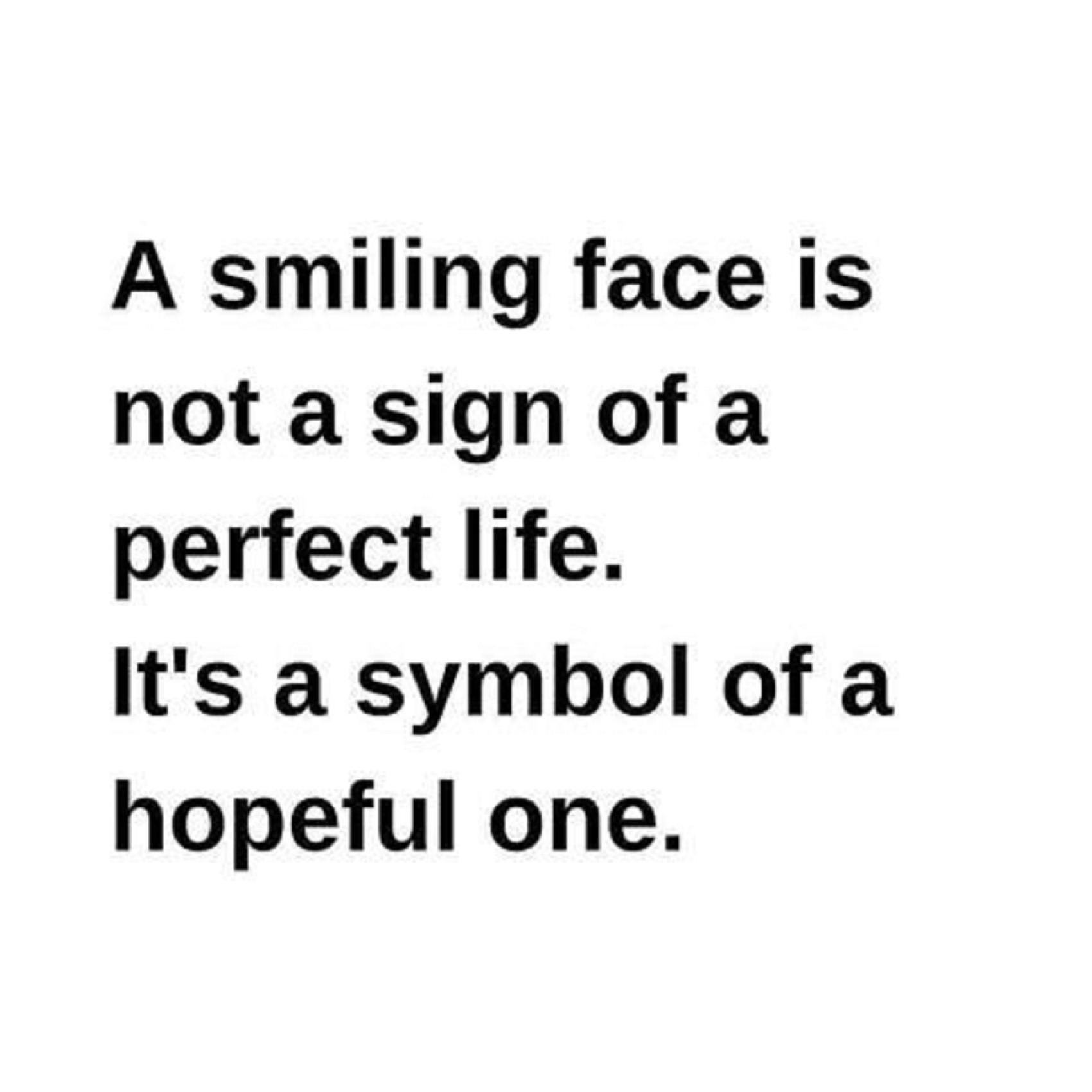
Society’s values, OR the MASTER, speaking, out, of your mouth.
You know Society’s values, don’t you? Ok, here are some of the most well-known types, they include:
Racism.
Sexism.
Ageism.
Classism.
Homophobia.
Nationalism.
Religious prejudice.
Xenophobia.
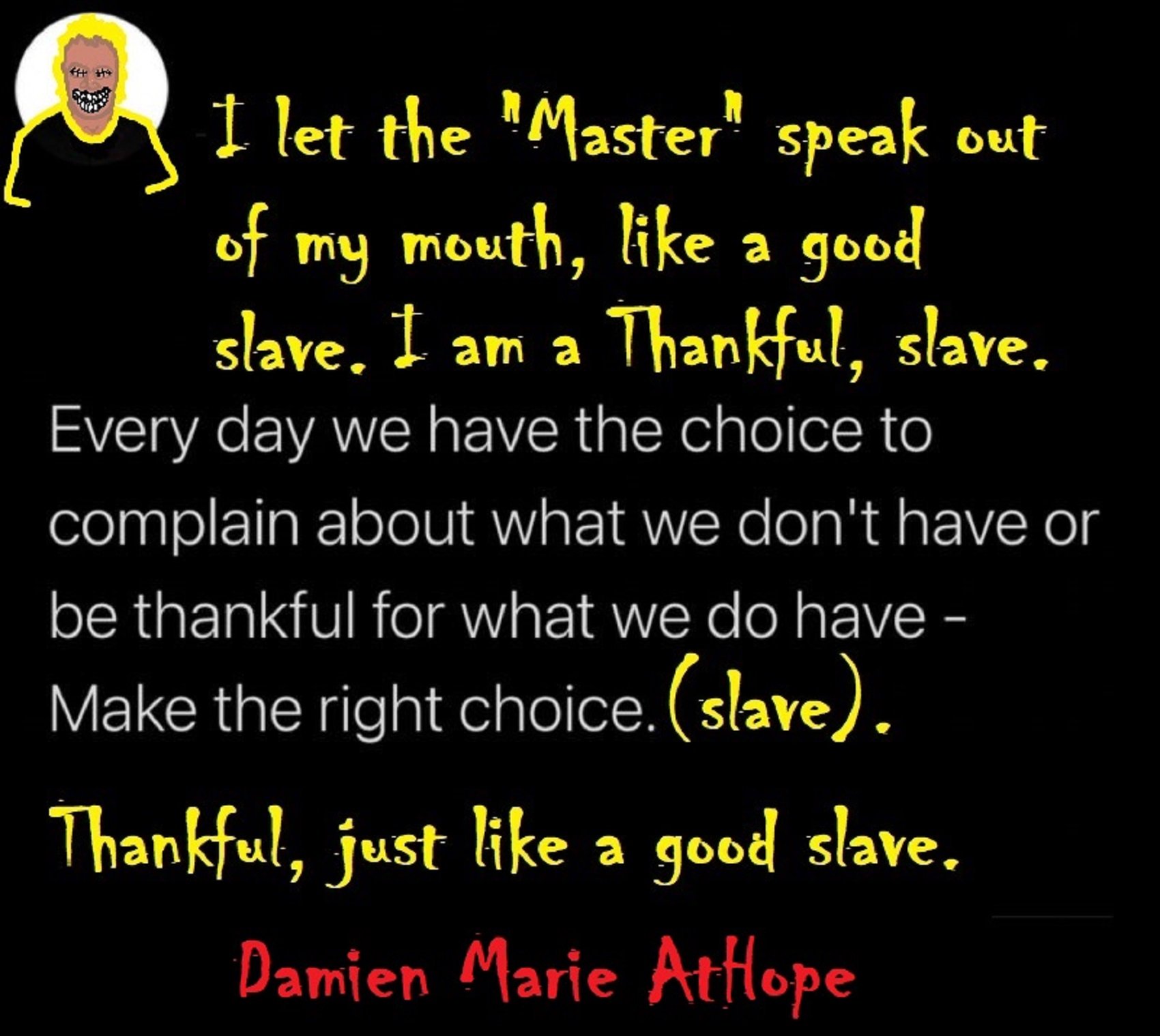
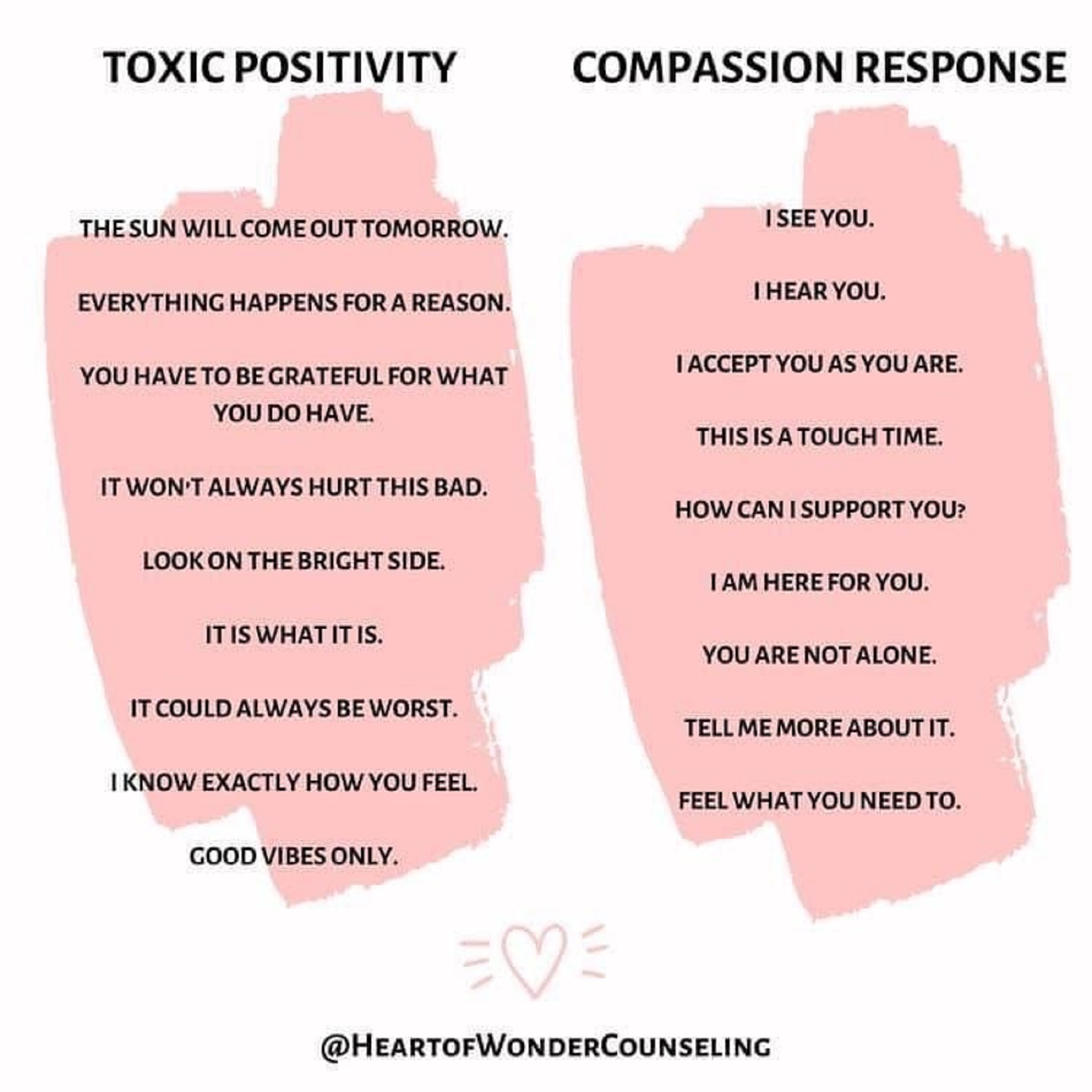
Friends Don’t let Friends, talk with the master in their mouths!
We actually all are family 70,000 years ago from Botswana Southern Africa.
I respect mother Africa, homeland to us all, with the original culture we need to go back to as much as posable, socially.
Here are a few of what I see as “Animist only” Cultures:
“Aka people” Central African nomadic Mbenga pygmy people. PRONUNCIATION: AH-kah
“The Aka people are very warm and hospitable. Relationships between men and women are extremely egalitarian. Men and women contribute equally to a household’s diet, either a husband or wife can initiate divorce, and violence against women is very rare. No cases of rape have been reported. The Aka people are fiercely egalitarian and independent. No individual has the right to force or order another individual to perform an activity against his or her will. Aka people have a number of informal methods for maintaining their egalitarianism. First, they practice “prestige avoidance”; no one draws attention to his or her own abilities. Individuals play down their achievements.” ref
“Mbuti People”
“The Mbuti people are generally hunter-gatherers who commonly are in the Congo’s Ituri Forest have traditionally lived in stateless communities with gift economies and largely egalitarian gender relations. They were a people who had found in the forest something that made life more than just worth living, something that made it, with all its hardships and problems and tragedies, a wonderful thing full of joy and happiness and free of care. Pygmies, like the Inuit, minimize discrimination based upon sex and age differences. Adults of all genders make communal decisions at public assemblies. The Mbuti people do not have a state, or chiefs or councils.” ref
“Hadza people”
“The Hadza people of Tanzania in East Africa are egalitarian, meaning there are no real status differences between individuals. While the elderly receive slightly more respect, within groups of age and sex all individuals are equal, and compared to strictly stratified societies, women are considered fairly equal. This egalitarianism results in high levels of freedom and self-dependency. When conflict does arise, it may be resolved by one of the parties voluntarily moving to another camp. Ernst Fehr and Urs Fischbacher point out that the Hadza people “exhibit a considerable amount of altruistic punishment” to organize these tribes. The Hadza people live in a communal setting and engage in cooperative child-rearing, where many individuals (both related and unrelated) provide high-quality care for children. Having no tribal or governing hierarchy, the Hadza people trace descent bilaterally (through paternal and maternal lines), and almost all Hadza people can trace some kin tie to all other Hadza people.” ref
If Neandertals were alive, they would be people, to me. I am a friend to the world. I freely, welcome, all good PEOPLE.
I am my best when I am open to learn.
I understand generally or am very skilled at understanding philosophy, psychology, sociology, the philosophy of science, the philosophy of religion, metaethics, universal morality, archaeology, anthropology, ethnography, genetics, linguistics, geography, religions, mythology, behavior motivation, thinking motivation, addiction, intervention, critical thinking, reason, history, and prehistory. Teaching and Leading, Etc.
I care about poor people, that is why I give all my knowledge, to the world, for free. So, everyone can become empowered, by knowledge. I care about every human, not just the ones, close to me.
Well, you made it to the end, and I wonder, do you still like me?
I am extremely arrogant, yes, this may be so, but also I am extremely kind. And of course, I am as real as they get.
I not only love others’ success, I actually try to help others with their success, for free, all the time.
“Damien, not everyone has the courage to face it. Truth is the reality! But at times it’s bitter. A person with value will always be truthful! That’s the beauty of that person!” – commenter
My response, I, as a good teacher, try to move at each student’s unique needs as I am not helping for my needs. No, I am only helping as a servant leader, I, as all good teachers only want the best for them, it is about them and is not about me. Love is selfless like that. I am both a student of the world, likewise, you all are my students.
“Stop ⛔ trying to be an incredible person.” – LinkedIn Post
My response, I am an incredible person already, now what? ????
“Share your magic with the world, my friend ????” – LinkedIn Poster
My response, I am. I even offer it all for free as my gift of humanity offered out to the world. I am not wealth seeking, no, I am humanity seeking. And we need all the help we can get. We rise by helping each other.
I do remembering by talking out loud, even with my own quotes. Saying things outside, in words, also allows me, to hear if my thoughts seem good.
The deepest truth we need to generally face is our EGO runs too much of our lives. When you are free of EGO is when one can stop being so easily blind.
We champion our “little me” that needed who we are today.
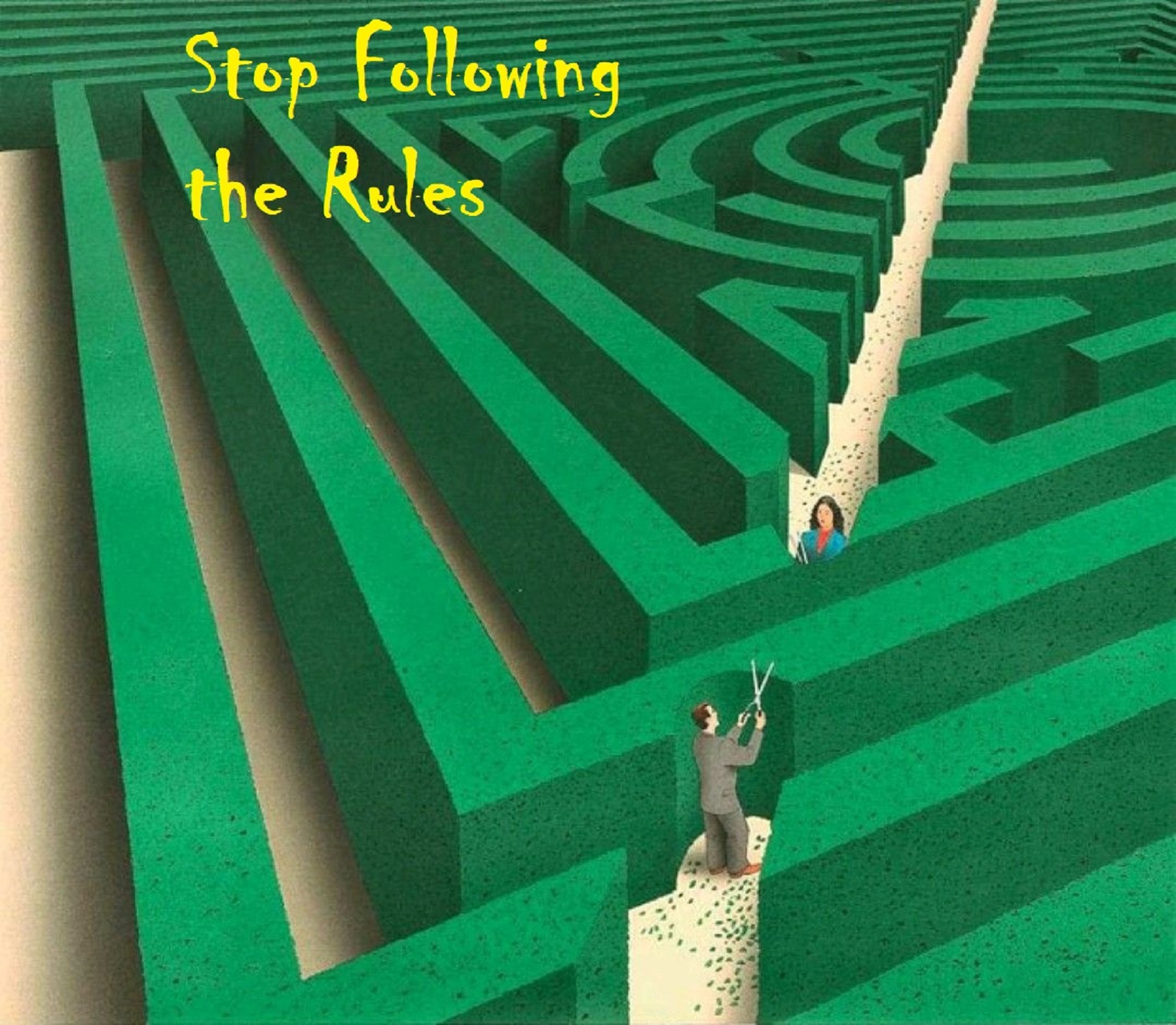
I have taken all kinds of tests and they judge me but don’t truly embody me, as they see me as not able to be as kind as I am but guess what I am such a rebel I don’t even let my limitations limit me.
I have so much unknown knowledge it will overwhelm anyone alive.
I actually think and talk a lot as well as write all the time but I put small comments as I am way too much for most people, thus a small comment does not mean a small care by me, rather it is my taming myself down to respect others as I don’t know what they are going through and my thoughts can be deep enough to make others cry, I don’t want to hurt others either so I often out of care say little. I want to help all I can and hurt none if possible. I care so much, humanity means everything.
And think, I invented all my own thinking, never reading any philosopher, nor books on logic, why, I breathe philosophy. When My EGO stops being my life focus it is then I am open to truly learn from anyone or anything, be like air. I read ideas and not people. I don’t want their limitations. I am such a free thinker, I don’t even believe everything I think. lol
I too, like the sound of my EGO, self-aggrandizing itself. But I am no longer religious. I am free of the EGO of faith.
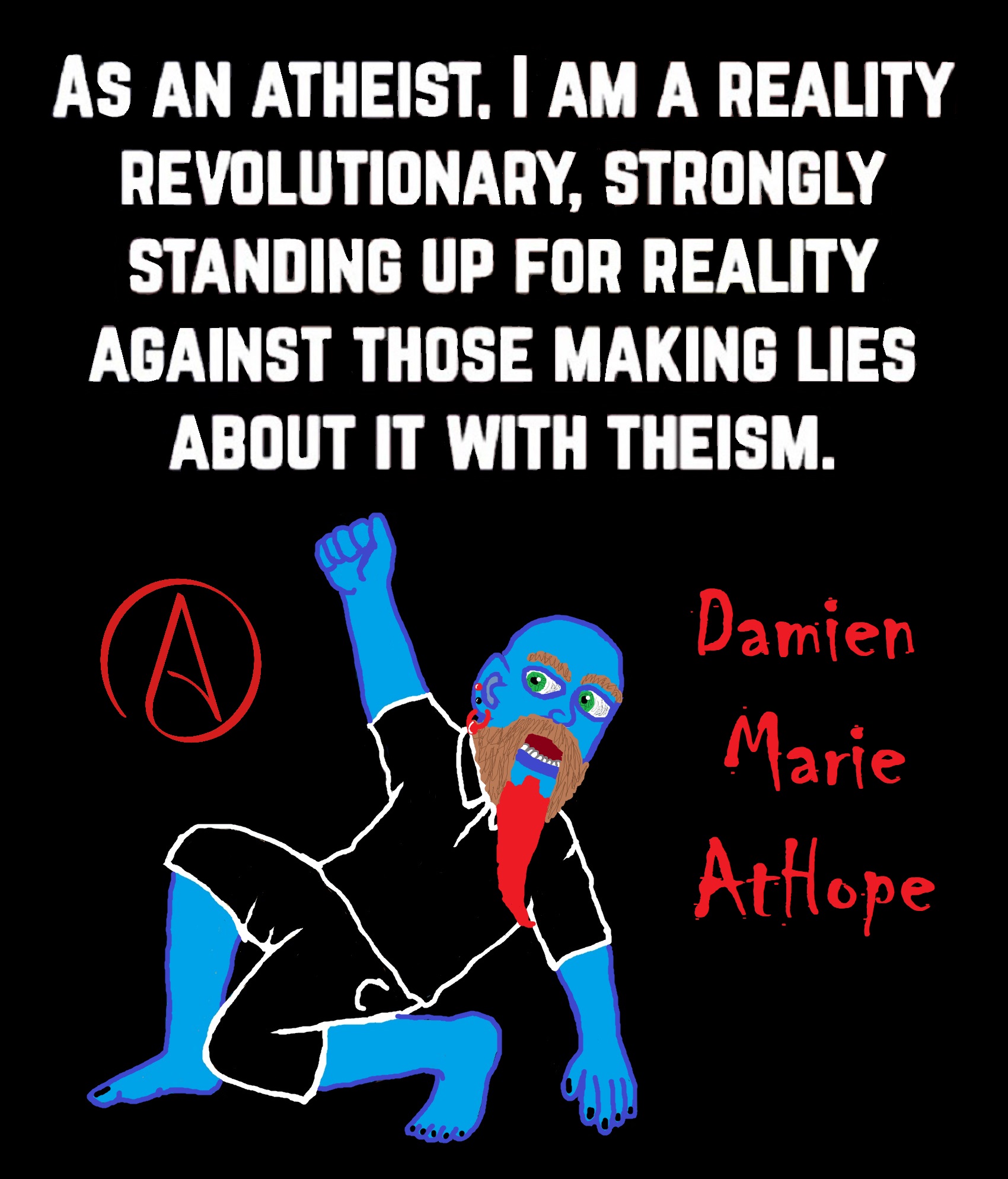
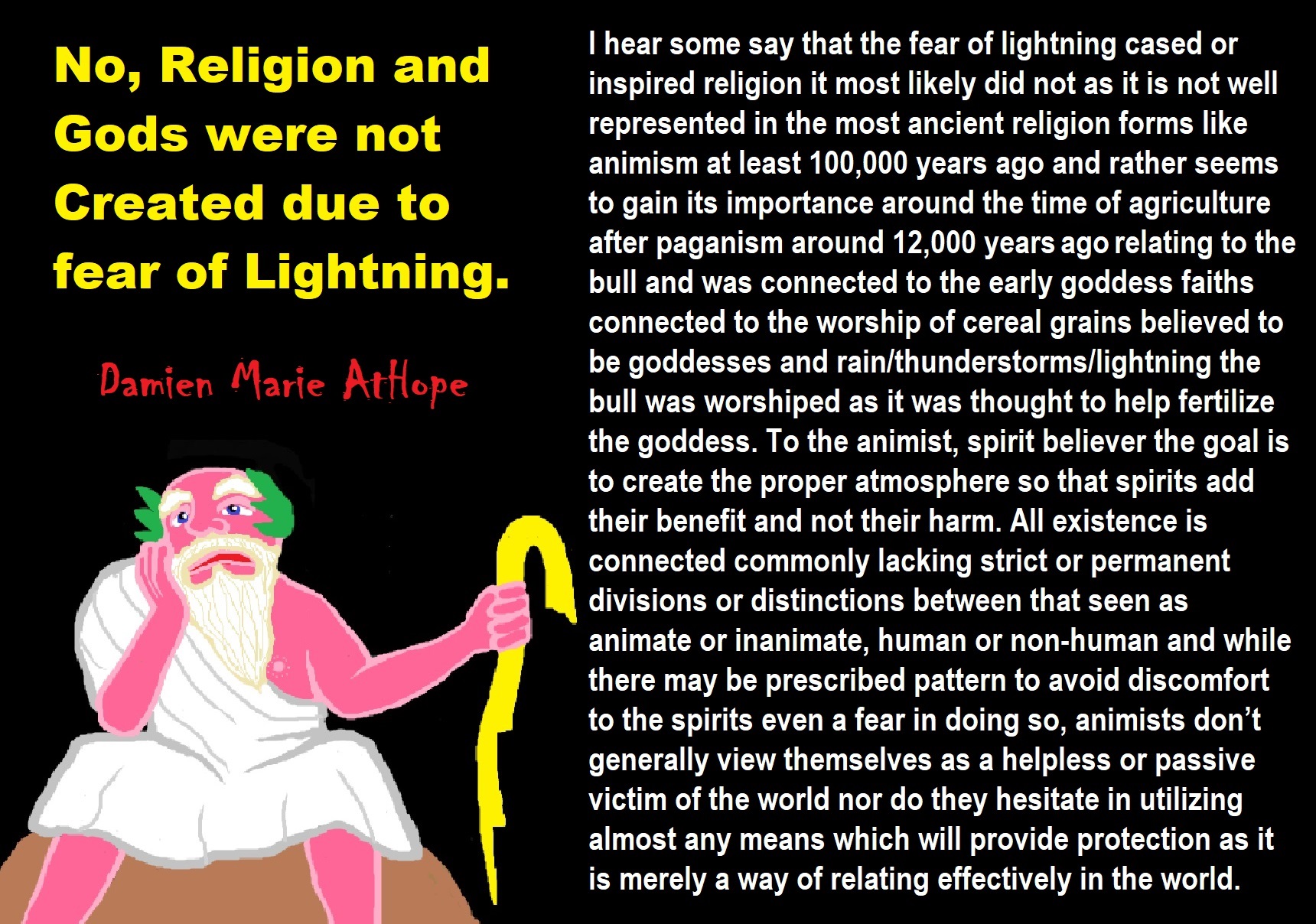


Animism: Respecting the Living World by Graham Harvey
“How have human cultures engaged with and thought about animals, plants, rocks, clouds, and other elements in their natural surroundings? Do animals and other natural objects have a spirit or soul? What is their relationship to humans? In this new study, Graham Harvey explores current and past animistic beliefs and practices of Native Americans, Maori, Aboriginal Australians, and eco-pagans. He considers the varieties of animism found in these cultures as well as their shared desire to live respectfully within larger natural communities. Drawing on his extensive casework, Harvey also considers the linguistic, performative, ecological, and activist implications of these different animisms.” ref


My thoughts on Religion Evolution with external links for more info:
- (Pre-Animism Africa mainly, but also Europe, and Asia at least 300,000 years ago), (Pre-Animism – Oxford Dictionaries)
- (Animism Africa around 100,000 years ago), (Animism – Britannica.com)
- (Totemism Europe around 50,000 years ago), (Totemism – Anthropology)
- (Shamanism Siberia around 30,000 years ago), (Shamanism – Britannica.com)
- (Paganism Turkey around 12,000 years ago), (Paganism – BBC Religion)
- (Progressed Organized Religion “Institutional Religion” Egypt around 5,000 years ago), (Ancient Egyptian Religion – Britannica.com)
- (CURRENT “World” RELIGIONS after 4,000 years ago) (Origin of Major Religions – Sacred Texts)
- (Early Atheistic Doubting at least by 2,600 years ago) (History of Atheism – Wikipedia)
“Religion is an Evolved Product” and Yes, Religion is Like Fear Given Wings…
Atheists talk about gods and religions for the same reason doctors talk about cancer, they are looking for a cure, or a firefighter talks about fires because they burn people and they care to stop them. We atheists too often feel a need to help the victims of mental slavery, held in the bondage that is the false beliefs of gods and the conspiracy theories of reality found in religions.
Understanding Religion Evolution:
- Pre-Animism (at least 300,000 years ago)
- Animism (Africa: 100,000 years ago)
- Totemism (Europe: 50,000 years ago)
- Shamanism (Siberia: 30,000 years ago)
- Paganism (Turkey: 12,000 years ago)
- Progressed organized religion (Egypt: 5,000 years ago), (Egypt, the First Dynasty 5,150 years ago)
- CURRENT “World” RELIGIONS (after 4,000 years ago)
- Early Atheistic Doubting (at least by 2,600 years ago)
“An Archaeological/Anthropological Understanding of Religion Evolution”
It seems ancient peoples had to survived amazing threats in a “dangerous universe (by superstition perceived as good and evil),” and human “immorality or imperfection of the soul” which was thought to affect the still living, leading to ancestor worship. This ancestor worship presumably led to the belief in supernatural beings, and then some of these were turned into the belief in gods. This feeble myth called gods were just a human conceived “made from nothing into something over and over, changing, again and again, taking on more as they evolve, all the while they are thought to be special,” but it is just supernatural animistic spirit-belief perceived as sacred.
Quick Evolution of Religion?
Pre-Animism (at least 300,000 years ago) pre-religion is a beginning that evolves into later Animism. So, Religion as we think of it, to me, all starts in a general way with Animism (Africa: 100,000 years ago) (theoretical belief in supernatural powers/spirits), then this is physically expressed in or with Totemism (Europe: 50,000 years ago) (theoretical belief in mythical relationship with powers/spirits through a totem item), which then enlists a full-time specific person to do this worship and believed interacting Shamanism (Siberia/Russia: 30,000 years ago) (theoretical belief in access and influence with spirits through ritual), and then there is the further employment of myths and gods added to all the above giving you Paganism (Turkey: 12,000 years ago) (often a lot more nature-based than most current top world religions, thus hinting to their close link to more ancient religious thinking it stems from). My hypothesis is expressed with an explanation of the building of a theatrical house (modern religions development). Progressed organized religion (Egypt: 5,000 years ago) with CURRENT “World” RELIGIONS (after 4,000 years ago).
Historically, in large city-state societies (such as Egypt or Iraq) starting around 5,000 years ago culminated to make religion something kind of new, a sociocultural-governmental-religious monarchy, where all or at least many of the people of such large city-state societies seem familiar with and committed to the existence of “religion” as the integrated life identity package of control dynamics with a fixed closed magical doctrine, but this juggernaut integrated religion identity package of Dogmatic-Propaganda certainly did not exist or if developed to an extent it was highly limited in most smaller prehistoric societies as they seem to lack most of the strong control dynamics with a fixed closed magical doctrine (magical beliefs could be at times be added or removed). Many people just want to see developed religious dynamics everywhere even if it is not. Instead, all that is found is largely fragments until the domestication of religion.
Religions, as we think of them today, are a new fad, even if they go back to around 6,000 years in the timeline of human existence, this amounts to almost nothing when seen in the long slow evolution of religion at least around 70,000 years ago with one of the oldest ritual worship. Stone Snake of South Africa: “first human worship” 70,000 years ago. This message of how religion and gods among them are clearly a man-made thing that was developed slowly as it was invented and then implemented peace by peace discrediting them all. Which seems to be a simple point some are just not grasping how devastating to any claims of truth when we can see the lie clearly in the archeological sites.
I wish people fought as hard for the actual values as they fight for the group/clan names political or otherwise they think support values. Every amount spent on war is theft to children in need of food or the homeless kept from shelter.
Here are several of my blog posts on history:
- To Find Truth You Must First Look
- (Magdalenian/Iberomaurusian) Connections to the First Paganists of the early Neolithic Near East Dating from around 17,000 to 12,000 Years Ago
- Natufians: an Ancient People at the Origins of Agriculture and Sedentary Life
- Possible Clan Leader/Special “MALE” Ancestor Totem Poles At Least 13,500 years ago?
- Jewish People with DNA at least 13,200 years old, Judaism, and the Origins of Some of its Ideas
- Baltic Reindeer Hunters: Swiderian, Lyngby, Ahrensburgian, and Krasnosillya cultures 12,020 to 11,020 years ago are evidence of powerful migratory waves during the last 13,000 years and a genetic link to Saami and the Finno-Ugric peoples.
- The Rise of Inequality: patriarchy and state hierarchy inequality
- Fertile Crescent 12,500 – 9,500 Years Ago: fertility and death cult belief system?
- 12,400 – 11,700 Years Ago – Kortik Tepe (Turkey) Pre/early-Agriculture Cultic Ritualism
- Ritualistic Bird Symbolism at Gobekli Tepe and its “Ancestor Cult”
- Male-Homosexual (female-like) / Trans-woman (female) Seated Figurine from Gobekli Tepe
- Could a 12,000-year-old Bull Geoglyph at Göbekli Tepe relate to older Bull and Female Art 25,000 years ago and Later Goddess and the Bull cults like Catal Huyuk?
- Sedentism and the Creation of goddesses around 12,000 years ago as well as male gods after 7,000 years ago.
- Alcohol, where Agriculture and Religion Become one? Such as Gobekli Tepe’s Ritualistic use of Grain as Food and Ritual Drink
- Neolithic Ritual Sites with T-Pillars and other Cultic Pillars
- Paganism: Goddesses around 12,000 years ago then Male Gods after 7,000 years ago
- First Patriarchy: Split of Women’s Status around 12,000 years ago & First Hierarchy: fall of Women’s Status around 5,000 years ago.
- Natufians: an Ancient People at the Origins of Agriculture and Sedentary Life
- J DNA and the Spread of Agricultural Religion (paganism)
- Paganism: an approximately 12,000-year-old belief system
- Paganism 12,000 years old: related to “Anarchism and Socialism” (Pre-Capitalism)
- Shaman burial in Israel 12,000 years ago and the Shamanism Phenomena
- Need to Mythicized: gods and goddesses
- 12,000 – 7,000 Years Ago – Paleo-Indian Culture (The Americas)
- 12,000 – 2,000 Years Ago – Indigenous-Scandinavians (Nordic)
- Norse did not wear helmets with horns?
- Pre-Pottery Neolithic Skull Cult around 11,500 to 8,400 Years Ago?
- 10,400 – 10,100 Years Ago, in Turkey the Nevail Cori Religious Settlement
- 9,000-6,500 Years Old Submerged Pre-Pottery/Pottery Neolithic Ritual Settlements off Israel’s Coast
- Catal Huyuk “first religious designed city” around 9,500 to 7,700 years ago (Turkey)
- Cultic Hunting at Catal Huyuk “first religious designed city”
- Special Items and Art as well as Special Elite Burials at Catal Huyuk
- New Rituals and Violence with the appearance of Pottery and People?
- Haplogroup N and its related Uralic Languages and Cultures
- Ainu people, Sámi people, Native Americans, the Ancient North Eurasians, and Paganistic-Shamanism with Totemism
- Ideas, Technology and People from Turkey, Europe, to China and Back again 9,000 to 5,000 years ago?
- First Pottery of Europe and the Related Cultures
- 9,000 years old Neolithic Artifacts Judean Desert and Hills Israel
- 9,000-7,000 years-old Sex and Death Rituals: Cult Sites in Israel, Jordan, and the Sinai
- 9,000-8500 year old Horned Female shaman Bad Dürrenberg Germany
- Neolithic Jewelry and the Spread of Farming in Europe Emerging out of West Turkey
- 8,600-year-old Tortoise Shells in Neolithic graves in central China have Early Writing and Shamanism
- Swing of the Mace: the rise of Elite, Forced Authority, and Inequality begin to Emerge 8,500 years ago?
- Migrations and Changing Europeans Beginning around 8,000 Years Ago
- My “Steppe-Anatolian-Kurgan hypothesis” 8,000/7,000 years ago
- Around 8,000-year-old Shared Idea of the Mistress of Animals, “Ritual” Motif
- Pre-Columbian Red-Paint (red ochre) Maritime Archaic Culture 8,000-3,000 years ago
- 7,522-6,522 years ago Linear Pottery culture which I think relates to Arcane Capitalism’s origins
- Arcane Capitalism: Primitive socialism, Primitive capital, Private ownership, Means of production, Market capitalism, Class discrimination, and Petite bourgeoisie (smaller capitalists)
- 7,500-4,750 years old Ritualistic Cucuteni-Trypillian culture of Moldova, Romania, and Ukraine
- Roots of a changing early society 7,200-6,700 years ago Jordan and Israel
- Agriculture religion (Paganism) with farming reached Britain between about 7,000 to 6,500 or so years ago and seemingly expressed in things like Western Europe’s Long Barrows
- My Thoughts on Possible Migrations of “R” DNA and Proto-Indo-European?
- “Millet” Spreading from China 7,022 years ago to Europe and related Language may have Spread with it leading to Proto-Indo-European
- Proto-Indo-European (PIE), ancestor of Indo-European languages: DNA, Society, Language, and Mythology
- The Dnieper–Donets culture and Asian varieties of Millet from China to the Black Sea region of Europe by 7,022 years ago
- Kurgan 6,000 years ago/dolmens 7,000 years ago: funeral, ritual, and other?
- 7,020 to 6,020-year-old Proto-Indo-European Homeland of Urheimat or proposed home of their Language and Religion
- Ancient Megaliths: Kurgan, Ziggurat, Pyramid, Menhir, Trilithon, Dolman, Kromlech, and Kromlech of Trilithons
- The Mytheme of Ancient North Eurasian Sacred-Dog belief and similar motifs are found in Indo-European, Native American, and Siberian comparative mythology
- Elite Power Accumulation: Ancient Trade, Tokens, Writing, Wealth, Merchants, and Priest-Kings
- Sacred Mounds, Mountains, Kurgans, and Pyramids may hold deep connections?
- Between 7,000-5,000 Years ago, rise of unequal hierarchy elite, leading to a “birth of the State” or worship of power, strong new sexism, oppression of non-elites, and the fall of Women’s equal status
- Paganism 7,000-5,000 years old: related to “Anarchism and Socialism” (Capitalism) (World War 0) Elite & their slaves
- Hell and Underworld mythologies starting maybe as far back as 7,000 to 5,000 years ago with the Proto-Indo-Europeans?
- The First Expression of the Male God around 7,000 years ago?
- White (light complexion skin) Bigotry and Sexism started 7,000 years ago?
- Around 7,000-year-old Shared Idea of the Divine Bird (Tutelary and/or Trickster spirit/deity), “Ritual” Motif
- Nekhbet an Ancient Egyptian Vulture Goddess and Tutelary Deity
- 6,720 to 4,920 years old Ritualistic Hongshan Culture of Inner Mongolia with 5,000-year-old Pyramid Mounds and Temples
- First proto-king in the Balkans, Varna culture around 6,500 years ago?
- 6,500–5,800 years ago in Israel Late Chalcolithic (Copper Age) Period in the Southern Levant Seems to Express Northern Levant Migrations, Cultural and Religious Transfer
- KING OF BEASTS: Master of Animals “Ritual” Motif, around 6,000 years old or older…
- Around 6000-year-old Shared Idea of the Solid Wheel & the Spoked Wheel-Shaped Ritual Motif
- “The Ghassulian Star,” a mysterious 6,000-year-old mural from Jordan; a Proto-Star of Ishtar, Star of Inanna or Star of Venus?
- Religious/Ritual Ideas, including goddesses and gods as well as ritual mounds or pyramids from Northeastern Asia at least 6,000 years old, seemingly filtering to Iran, Iraq, the Mediterranean, Europe, Egypt, and the Americas?
- Maykop (5,720–5,020 years ago) Caucasus region Bronze Age culture-related to Copper Age farmers from the south, influenced by the Ubaid period and Leyla-Tepe culture, as well as influencing the Kura-Araxes culture
- 5-600-year-old Tomb, Mummy, and First Bearded Male Figurine in a Grave
- Kura-Araxes Cultural 5,520 to 4,470 years old DNA traces to the Canaanites, Arabs, and Jews
- Minoan/Cretan (Keftiu) Civilization and Religion around 5,520 to 3,120 years ago
- Evolution Of Science at least by 5,500 years ago
- 5,500 Years old birth of the State, the rise of Hierarchy, and the fall of Women’s status
- “Jiroft culture” 5,100 – 4,200 years ago and the History of Iran
- Stonehenge: Paganistic Burial and Astrological Ritual Complex, England (5,100-3,600 years ago)
- Around 5,000-year-old Shared Idea of the “Tree of Life” Ritual Motif
- Complex rituals for elite, seen from China to Egypt, at least by 5,000 years ago
- Around 5,000 years ago: “Birth of the State” where Religion gets Military Power and Influence
- The Center of the World “Axis Mundi” and/or “Sacred Mountains” Mythology Could Relate to the Altai Mountains, Heart of the Steppe
- Progressed organized religion starts, an approximately 5,000-year-old belief system
- China’s Civilization between 5,000-3,000 years ago, was a time of war and class struggle, violent transition from free clans to a Slave or Elite society
- Origin of Logics is Naturalistic Observation at least by around 5,000 years ago.
- Paganism 5,000 years old: progressed organized religion and the state: related to “Anarchism and Socialism” (Kings and the Rise of the State)
- Ziggurats (multi-platform temples: 4,900 years old) to Pyramids (multi-platform tombs: 4,700 years old)
- Did a 4,520–4,420-year-old Volcano In Turkey Inspire the Bible God?
- Finland’s Horned Shaman and Pre-Horned-God at least 4,500 years ago?
- 4,000-year-Old Dolmens in Israel: A Connected Dolmen Religious Phenomenon?
- Creation myths: From chaos, Ex nihilo, Earth-diver, Emergence, World egg, and World parent
- Bronze Age “Ritual” connections of the Bell Beaker culture with the Corded Ware/Single Grave culture, which were related to the Yamnaya culture and Proto-Indo-European Languages/Religions
- Low Gods (Earth/ Tutelary deity), High Gods (Sky/Supreme deity), and Moralistic Gods (Deity enforcement/divine order)
- The exchange of people, ideas, and material-culture including, to me, the new god (Sky Father) and goddess (Earth Mother) religion between the Cucuteni-Trypillians and others which is then spread far and wide
- Koryaks: Indigenous People of the Russian Far East and Big Raven myths also found in Tlingit, Haida, Tsimshian, and other Indigenous People of North America
- 42 Principles Of Maat (Egyptian Goddess of the justice) around 4,400 years ago, 2000 Years Before Ten Commandments
- “Happy Easter” Well Happy Eostre/Ishter
- 4,320-3,820 years old “Shimao” (North China) site with Totemistic-Shamanistic Paganism and a Stepped Pyramid
- 4,250 to 3,400 Year old Stonehenge from Russia: Arkaim?
- 4,100-year-old beaker with medicinal & flowering plants in a grave of a woman in Scotland
- Early European Farmer ancestry, Kelif el Boroud people with the Cardial Ware culture, and the Bell Beaker culture Paganists too, spread into North Africa, then to the Canary Islands off West Africa
- Flood Accounts: Gilgamesh epic (4,100 years ago) Noah in Genesis (2,600 years ago)
- Paganism 4,000 years old: related to “Anarchism and Socialism” (First Moralistic gods, then the Origin time of Monotheism)
- When was the beginning: TIMELINE OF CURRENT RELIGIONS, which start around 4,000 years ago.
- Early Religions Thought to Express Proto-Monotheistic Systems around 4,000 years ago
- Kultepe? An archaeological site with a 4,000 years old women’s rights document.
- Single God Religions (Monotheism) = “Man-o-theism” started around 4,000 years ago with the Great Sky Spirit/God Tiān (天)?
- Confucianism’s Tiān (Shangdi god 4,000 years old): Supernaturalism, Pantheism or Theism?
- Yes, Your Male God is Ridiculous
- Mythology, a Lunar Deity is a Goddess or God of the Moon
- Sacred Land, Hills, and Mountains: Sami Mythology (Paganistic Shamanism)
- Horse Worship/Sacrifice: mythical union of Ruling Elite/Kingship and the Horse
- The Amorite/Amurru people’s God Amurru “Lord of the Steppe”, relates to the Origins of the Bible God?
- Bronze Age Exotic Trade Routes Spread Quite Far as well as Spread Religious Ideas with Them
- Sami and the Northern Indigenous Peoples Landscape, Language, and its Connection to Religion
- Prototype of Ancient Analemmatic Sundials around 3,900-3,150 years ago and a Possible Solar Connection to gods?
- Judaism is around 3,450 or 3,250 years old. (“Paleo-Hebrew” 3,000 years ago and Torah 2,500 years ago)
- The Weakening of Ancient Trade and the Strengthening of Religions around 3000 years ago?
- Are you aware that there are religions that worship women gods, explain now religion tears women down?
- Animistic, Totemistic, and Paganistic Superstition Origins of bible god and the bible’s Religion.
- Myths and Folklore: “Trickster gods and goddesses”
- Jews, Judaism, and the Origins of Some of its Ideas
- An Old Branch of Religion Still Giving Fruit: Sacred Trees
- Dating the BIBLE: naming names and telling times (written less than 3,000 years ago, provable to 2,200 years ago)
- Did a Volcano Inspire the bible god?
- Dené–Yeniseian language, Old Copper Complex, and Pre-Columbian Mound Builders?
- No “dinosaurs and humans didn’t exist together just because some think they are in the bible itself”
- Sacred Shit and Sacred Animals?
- Everyone Killed in the Bible Flood? “Nephilim” (giants)?
- Hey, Damien dude, I have a question for you regarding “the bible” Exodus.
- Archaeology Disproves the Bible
- Bible Battle, Just More, Bible Babble
- The Jericho Conquest lie?
- Canaanites and Israelites?
- Accurate Account on how did Christianity Began?
- Let’s talk about Christianity.
- So the 10 commandments isn’t anything to go by either right?
- Misinformed christian
- Debunking Jesus?
- Paulism vs Jesus
- Ok, you seem confused so let’s talk about Buddhism.
- Unacknowledged Buddhism: Gods, Savior, Demons, Rebirth, Heavens, Hells, and Terrorism
- His Foolishness The Dalai Lama
- Yin and Yang is sexist with an ORIGIN around 2,300 years ago?
- I Believe Archaeology, not Myths & Why Not, as the Religious Myths Already Violate Reason!
- Archaeological, Scientific, & Philosophic evidence shows the god myth is man-made nonsense.
- Aquatic Ape Theory/Hypothesis? As Always, Just Pseudoscience.
- Ancient Aliens Conspiracy Theorists are Pseudohistorians
- The Pseudohistoric and Pseudoscientific claims about “Bakoni Ruins” of South Africa
- Why do people think Religion is much more than supernaturalism and superstitionism?
- Religion is an Evolved Product
- Was the Value of Ancient Women Different?
- 1000 to 1100 CE, human sacrifice Cahokia Mounds a pre-Columbian Native American site
- Feminist atheists as far back as the 1800s?
- Promoting Religion as Real is Mentally Harmful to a Flourishing Humanity
- Screw All Religions and Their Toxic lies, they are all fraud
- Forget Religions’ Unfounded Myths, I Have Substantiated “Archaeology Facts.”
- Religion Dispersal throughout the World
- I Hate Religion Just as I Hate all Pseudoscience
- Exposing Scientology, Eckankar, Wicca and Other Nonsense?
- Main deity or religious belief systems
- Quit Trying to Invent Your God From the Scraps of Science.
- Archaeological, Scientific, & Philosophic evidence shows the god myth is man-made nonsense.
- Ancient Alien Conspiracy Theorists: Misunderstanding, Rhetoric, Misinformation, Fabrications, and Lies
- Misinformation, Distortion, and Pseudoscience in Talking with a Christian Creationist
- Judging the Lack of Goodness in Gods, Even the Norse God Odin
- Challenging the Belief in God-like Aliens and Gods in General
- A Challenge to Christian use of Torture Devices?
- Yes, Hinduism is a Religion
- Trump is One of the Most Reactionary Forces of Far-right Christian Extremism
- Was the Bull Head a Symbol of God? Yes!
- Primate Death Rituals
- Christian – “God and Christianity are objectively true”
- Australopithecus afarensis Death Ritual?
- You Claim Global Warming is a Hoax?
- Doubter of Science and Defamer of Atheists?
- I think that sounds like the Bible?
- History of the Antifa (“anti-fascist”) Movements
- Indianapolis Anti-Blasphemy Laws #Free Soheil Rally
- Damien, you repeat the golden rule in so many forms then you say religion is dogmatic?
- Science is a Trustable Methodology whereas Faith is not Trustable at all!
- Was I ever a believer, before I was an atheist?
- Atheists rise in reason
- Mistrust of science?
- Open to Talking About the Definition of ‘God’? But first, we address Faith.
- ‘United Monarchy’ full of splendor and power – Saul, David, and Solomon? Most likely not.
- Is there EXODUS ARCHAEOLOGY? The short answer is “no.”
- Lacking Proof of Bigfoots, Unicorns, and Gods is Just a Lack of Research?
- Religion and Politics: Faith Beliefs vs. Rational Thinking
- Hammer of Truth that lying pig RELIGION: challenged by an archaeologist
- “The Hammer of Truth” -ontology question- What do You Mean by That?
- Navigation of a bad argument: Ad Hominem vs. Attack
- Why is it Often Claimed that Gods have a Gender?
- Why are basically all monotheistic religions ones that have a male god?
- Shifting through the Claims in support of Faith
- Dear Mr. AtHope, The 20th Century is an Indictment of Secularism and a Failed Atheist Century
- An Understanding of the Worldwide Statistics and Dynamics of Terrorist Incidents and Suicide Attacks
- Intoxication and Evolution? Addressing and Assessing the “Stoned Ape” or “Drunken Monkey” Theories as Catalysts in Human Evolution
- Sacred Menstrual cloth? Inanna’s knot, Isis knot, and maybe Ma’at’s feather?
- Damien, why don’t the Hebrews accept the bible stories?
- Dealing with a Troll and Arguing Over Word Meaning
- Knowledge without Belief? Justified beliefs or disbeliefs worthy of Knowledge?
- Afrocentrism and African Religions
- Crecganford @crecganford offers history & stories of the people, places, gods, & culture
- Empiricism-Denier?
I am not an academic. I am a revolutionary that teaches in public, in places like social media, and in the streets. I am not a leader by some title given but from my commanding leadership style of simply to start teaching everywhere to everyone, all manner of positive education.









ref, ref, ref, ref, ref, ref, ref, ref, ref, ref, ref, ref, ref, ref, ref, ref, ref, ref, ref, ref, ref
Low Gods “Earth” or Tutelary deity and High Gods “Sky” or Supreme deity
“An Earth goddess is a deification of the Earth. Earth goddesses are often associated with the “chthonic” deities of the underworld. Ki and Ninhursag are Mesopotamian earth goddesses. In Greek mythology, the Earth is personified as Gaia, corresponding to Roman Terra, Indic Prithvi/Bhūmi, etc. traced to an “Earth Mother” complementary to the “Sky Father” in Proto-Indo-European religion. Egyptian mythology exceptionally has a sky goddess and an Earth god.” ref
“A mother goddess is a goddess who represents or is a personification of nature, motherhood, fertility, creation, destruction or who embodies the bounty of the Earth. When equated with the Earth or the natural world, such goddesses are sometimes referred to as Mother Earth or as the Earth Mother. In some religious traditions or movements, Heavenly Mother (also referred to as Mother in Heaven or Sky Mother) is the wife or feminine counterpart of the Sky father or God the Father.” ref
“Any masculine sky god is often also king of the gods, taking the position of patriarch within a pantheon. Such king gods are collectively categorized as “sky father” deities, with a polarity between sky and earth often being expressed by pairing a “sky father” god with an “earth mother” goddess (pairings of a sky mother with an earth father are less frequent). A main sky goddess is often the queen of the gods and may be an air/sky goddess in her own right, though she usually has other functions as well with “sky” not being her main. In antiquity, several sky goddesses in ancient Egypt, Mesopotamia, and the Near East were called Queen of Heaven. Neopagans often apply it with impunity to sky goddesses from other regions who were never associated with the term historically. The sky often has important religious significance. Many religions, both polytheistic and monotheistic, have deities associated with the sky.” ref
“In comparative mythology, sky father is a term for a recurring concept in polytheistic religions of a sky god who is addressed as a “father”, often the father of a pantheon and is often either a reigning or former King of the Gods. The concept of “sky father” may also be taken to include Sun gods with similar characteristics, such as Ra. The concept is complementary to an “earth mother“. “Sky Father” is a direct translation of the Vedic Dyaus Pita, etymologically descended from the same Proto-Indo-European deity name as the Greek Zeûs Pater and Roman Jupiter and Germanic Týr, Tir or Tiwaz, all of which are reflexes of the same Proto-Indo-European deity’s name, *Dyēus Ph₂tḗr. While there are numerous parallels adduced from outside of Indo-European mythology, there are exceptions (e.g. In Egyptian mythology, Nut is the sky mother and Geb is the earth father).” ref
Tutelary deity
“A tutelary (also tutelar) is a deity or spirit who is a guardian, patron, or protector of a particular place, geographic feature, person, lineage, nation, culture, or occupation. The etymology of “tutelary” expresses the concept of safety and thus of guardianship. In late Greek and Roman religion, one type of tutelary deity, the genius, functions as the personal deity or daimon of an individual from birth to death. Another form of personal tutelary spirit is the familiar spirit of European folklore.” ref
“A tutelary (also tutelar) in Korean shamanism, jangseung and sotdae were placed at the edge of villages to frighten off demons. They were also worshiped as deities. Seonangshin is the patron deity of the village in Korean tradition and was believed to embody the Seonangdang. In Philippine animism, Diwata or Lambana are deities or spirits that inhabit sacred places like mountains and mounds and serve as guardians. Such as: Maria Makiling is the deity who guards Mt. Makiling and Maria Cacao and Maria Sinukuan. In Shinto, the spirits, or kami, which give life to human bodies come from nature and return to it after death. Ancestors are therefore themselves tutelaries to be worshiped. And similarly, Native American beliefs such as Tonás, tutelary animal spirit among the Zapotec and Totems, familial or clan spirits among the Ojibwe, can be animals.” ref
“A tutelary (also tutelar) in Austronesian beliefs such as: Atua (gods and spirits of the Polynesian peoples such as the Māori or the Hawaiians), Hanitu (Bunun of Taiwan‘s term for spirit), Hyang (Kawi, Sundanese, Javanese, and Balinese Supreme Being, in ancient Java and Bali mythology and this spiritual entity, can be either divine or ancestral), Kaitiaki (New Zealand Māori term used for the concept of guardianship, for the sky, the sea, and the land), Kawas (mythology) (divided into 6 groups: gods, ancestors, souls of the living, spirits of living things, spirits of lifeless objects, and ghosts), Tiki (Māori mythology, Tiki is the first man created by either Tūmatauenga or Tāne and represents deified ancestors found in most Polynesian cultures). ” ref, ref, ref, ref, ref, ref, ref
Mesopotamian Tutelary Deities can be seen as ones related to City-States
“Historical city-states included Sumerian cities such as Uruk and Ur; Ancient Egyptian city-states, such as Thebes and Memphis; the Phoenician cities (such as Tyre and Sidon); the five Philistine city-states; the Berber city-states of the Garamantes; the city-states of ancient Greece (the poleis such as Athens, Sparta, Thebes, and Corinth); the Roman Republic (which grew from a city-state into a vast empire); the Italian city-states from the Middle Ages to the early modern period, such as Florence, Siena, Ferrara, Milan (which as they grew in power began to dominate neighboring cities) and Genoa and Venice, which became powerful thalassocracies; the Mayan and other cultures of pre-Columbian Mesoamerica (including cities such as Chichen Itza, Tikal, Copán and Monte Albán); the central Asian cities along the Silk Road; the city-states of the Swahili coast; Ragusa; states of the medieval Russian lands such as Novgorod and Pskov; and many others.” ref
“The Uruk period (ca. 4000 to 3100 BCE; also known as Protoliterate period) of Mesopotamia, named after the Sumerian city of Uruk, this period saw the emergence of urban life in Mesopotamia and the Sumerian civilization. City-States like Uruk and others had a patron tutelary City Deity along with a Priest-King.” ref
“Chinese folk religion, both past, and present, includes myriad tutelary deities. Exceptional individuals, highly cultivated sages, and prominent ancestors can be deified and honored after death. Lord Guan is the patron of military personnel and police, while Mazu is the patron of fishermen and sailors. Such as Tu Di Gong (Earth Deity) is the tutelary deity of a locality, and each individual locality has its own Earth Deity and Cheng Huang Gong (City God) is the guardian deity of an individual city, worshipped by local officials and locals since imperial times.” ref
“A tutelary (also tutelar) in Hinduism, personal tutelary deities are known as ishta-devata, while family tutelary deities are known as Kuladevata. Gramadevata are guardian deities of villages. Devas can also be seen as tutelary. Shiva is the patron of yogis and renunciants. City goddesses include: Mumbadevi (Mumbai), Sachchika (Osian); Kuladevis include: Ambika (Porwad), and Mahalakshmi. In NorthEast India Meitei mythology and religion (Sanamahism) of Manipur, there are various types of tutelary deities, among which Lam Lais are the most predominant ones. Tibetan Buddhism has Yidam as a tutelary deity. Dakini is the patron of those who seek knowledge.” ref
“A tutelary (also tutelar) The Greeks also thought deities guarded specific places: for instance, Athena was the patron goddess of the city of Athens. Socrates spoke of hearing the voice of his personal spirit or daimonion:
You have often heard me speak of an oracle or sign which comes to me … . This sign I have had ever since I was a child. The sign is a voice which comes to me and always forbids me to do something which I am going to do, but never commands me to do anything, and this is what stands in the way of my being a politician.” ref
“Tutelary deities who guard and preserve a place or a person are fundamental to ancient Roman religion. The tutelary deity of a man was his Genius, that of a woman her Juno. In the Imperial era, the Genius of the Emperor was a focus of Imperial cult. An emperor might also adopt a major deity as his personal patron or tutelary, as Augustus did Apollo. Precedents for claiming the personal protection of a deity were established in the Republican era, when for instance the Roman dictator Sulla advertised the goddess Victory as his tutelary by holding public games (ludi) in her honor.” ref
“Each town or city had one or more tutelary deities, whose protection was considered particularly vital in time of war and siege. Rome itself was protected by a goddess whose name was to be kept ritually secret on pain of death (for a supposed case, see Quintus Valerius Soranus). The Capitoline Triad of Juno, Jupiter, and Minerva were also tutelaries of Rome. The Italic towns had their own tutelary deities. Juno often had this function, as at the Latin town of Lanuvium and the Etruscan city of Veii, and was often housed in an especially grand temple on the arx (citadel) or other prominent or central location. The tutelary deity of Praeneste was Fortuna, whose oracle was renowned.” ref
“The Roman ritual of evocatio was premised on the belief that a town could be made vulnerable to military defeat if the power of its tutelary deity were diverted outside the city, perhaps by the offer of superior cult at Rome. The depiction of some goddesses such as the Magna Mater (Great Mother, or Cybele) as “tower-crowned” represents their capacity to preserve the city. A town in the provinces might adopt a deity from within the Roman religious sphere to serve as its guardian, or syncretize its own tutelary with such; for instance, a community within the civitas of the Remi in Gaul adopted Apollo as its tutelary, and at the capital of the Remi (present-day Rheims), the tutelary was Mars Camulus.” ref
Household deity (a kind of or related to a Tutelary deity)
“A household deity is a deity or spirit that protects the home, looking after the entire household or certain key members. It has been a common belief in paganism as well as in folklore across many parts of the world. Household deities fit into two types; firstly, a specific deity – typically a goddess – often referred to as a hearth goddess or domestic goddess who is associated with the home and hearth, such as the ancient Greek Hestia.” ref
“The second type of household deities are those that are not one singular deity, but a type, or species of animistic deity, who usually have lesser powers than major deities. This type was common in the religions of antiquity, such as the Lares of ancient Roman religion, the Gashin of Korean shamanism, and Cofgodas of Anglo-Saxon paganism. These survived Christianisation as fairy-like creatures existing in folklore, such as the Anglo-Scottish Brownie and Slavic Domovoy.” ref
“Household deities were usually worshipped not in temples but in the home, where they would be represented by small idols (such as the teraphim of the Bible, often translated as “household gods” in Genesis 31:19 for example), amulets, paintings, or reliefs. They could also be found on domestic objects, such as cosmetic articles in the case of Tawaret. The more prosperous houses might have a small shrine to the household god(s); the lararium served this purpose in the case of the Romans. The gods would be treated as members of the family and invited to join in meals, or be given offerings of food and drink.” ref
“In many religions, both ancient and modern, a god would preside over the home. Certain species, or types, of household deities, existed. An example of this was the Roman Lares. Many European cultures retained house spirits into the modern period. Some examples of these include:
- Brownie (Scotland and England) or Hob (England) / Kobold (Germany) / Goblin / Hobgoblin
- Domovoy (Slavic)
- Nisse (Norwegian or Danish) / Tomte (Swedish) / Tonttu (Finnish)
- Húsvættir (Norse)” ref
“Although the cosmic status of household deities was not as lofty as that of the Twelve Olympians or the Aesir, they were also jealous of their dignity and also had to be appeased with shrines and offerings, however humble. Because of their immediacy they had arguably more influence on the day-to-day affairs of men than the remote gods did. Vestiges of their worship persisted long after Christianity and other major religions extirpated nearly every trace of the major pagan pantheons. Elements of the practice can be seen even today, with Christian accretions, where statues to various saints (such as St. Francis) protect gardens and grottos. Even the gargoyles found on older churches, could be viewed as guardians partitioning a sacred space.” ref
“For centuries, Christianity fought a mop-up war against these lingering minor pagan deities, but they proved tenacious. For example, Martin Luther‘s Tischreden have numerous – quite serious – references to dealing with kobolds. Eventually, rationalism and the Industrial Revolution threatened to erase most of these minor deities, until the advent of romantic nationalism rehabilitated them and embellished them into objects of literary curiosity in the 19th century. Since the 20th century this literature has been mined for characters for role-playing games, video games, and other fantasy personae, not infrequently invested with invented traits and hierarchies somewhat different from their mythological and folkloric roots.” ref
“In contradistinction to both Herbert Spencer and Edward Burnett Tylor, who defended theories of animistic origins of ancestor worship, Émile Durkheim saw its origin in totemism. In reality, this distinction is somewhat academic, since totemism may be regarded as a particularized manifestation of animism, and something of a synthesis of the two positions was attempted by Sigmund Freud. In Freud’s Totem and Taboo, both totem and taboo are outward expressions or manifestations of the same psychological tendency, a concept which is complementary to, or which rather reconciles, the apparent conflict. Freud preferred to emphasize the psychoanalytic implications of the reification of metaphysical forces, but with particular emphasis on its familial nature. This emphasis underscores, rather than weakens, the ancestral component.” ref
“William Edward Hearn, a noted classicist, and jurist, traced the origin of domestic deities from the earliest stages as an expression of animism, a belief system thought to have existed also in the neolithic, and the forerunner of Indo-European religion. In his analysis of the Indo-European household, in Chapter II “The House Spirit”, Section 1, he states:
The belief which guided the conduct of our forefathers was … the spirit rule of dead ancestors.” ref
“In Section 2 he proceeds to elaborate:
It is thus certain that the worship of deceased ancestors is a vera causa, and not a mere hypothesis. …
In the other European nations, the Slavs, the Teutons, and the Kelts, the House Spirit appears with no less distinctness. … [T]he existence of that worship does not admit of doubt. … The House Spirits had a multitude of other names which it is needless here to enumerate, but all of which are more or less expressive of their friendly relations with man. … In [England] … [h]e is the Brownie. … In Scotland this same Brownie is well known. He is usually described as attached to particular families, with whom he has been known to reside for centuries, threshing the corn, cleaning the house, and performing similar household tasks. His favorite gratification was milk and honey.” ref

ref, ref, ref, ref, ref, ref, ref, ref, ref, ref, ref, ref, ref, ref, ref, ref, ref
“These ideas are my speculations from the evidence.”
I am still researching the “god‘s origins” all over the world. So you know, it is very complicated but I am smart and willing to look, DEEP, if necessary, which going very deep does seem to be needed here, when trying to actually understand the evolution of gods and goddesses. I am sure of a few things and less sure of others, but even in stuff I am not fully grasping I still am slowly figuring it out, to explain it to others. But as I research more I am understanding things a little better, though I am still working on understanding it all or something close and thus always figuring out more.
Sky Father/Sky God?
“Egyptian: (Nut) Sky Mother and (Geb) Earth Father” (Egypt is different but similar)
Turkic/Mongolic: (Tengri/Tenger Etseg) Sky Father and (Eje/Gazar Eej) Earth Mother *Transeurasian*
Hawaiian: (Wākea) Sky Father and (Papahānaumoku) Earth Mother *Austronesian*
New Zealand/ Māori: (Ranginui) Sky Father and (Papatūānuku) Earth Mother *Austronesian*
Proto-Indo-European: (Dyḗus/Dyḗus ph₂tḗr) Sky Father and (Dʰéǵʰōm/Pleth₂wih₁) Earth Mother
Indo-Aryan: (Dyaus Pita) Sky Father and (Prithvi Mata) Earth Mother *Indo-European*
Italic: (Jupiter) Sky Father and (Juno) Sky Mother *Indo-European*
Etruscan: (Tinia) Sky Father and (Uni) Sky Mother *Tyrsenian/Italy Pre–Indo-European*
Hellenic/Greek: (Zeus) Sky Father and (Hera) Sky Mother who started as an “Earth Goddess” *Indo-European*
Nordic: (Dagr) Sky Father and (Nótt) Sky Mother *Indo-European*
Slavic: (Perun) Sky Father and (Mokosh) Earth Mother *Indo-European*
Illyrian: (Deipaturos) Sky Father and (Messapic Damatura’s “earth-mother” maybe) Earth Mother *Indo-European*
Albanian: (Zojz) Sky Father and (?) *Indo-European*
Baltic: (Perkūnas) Sky Father and (Saulė) Sky Mother *Indo-European*
Germanic: (Týr) Sky Father and (?) *Indo-European*
Colombian-Muisca: (Bochica) Sky Father and (Huythaca) Sky Mother *Chibchan*
Aztec: (Quetzalcoatl) Sky Father and (Xochiquetzal) Sky Mother *Uto-Aztecan*
Incan: (Viracocha) Sky Father and (Mama Runtucaya) Sky Mother *Quechuan*
China: (Tian/Shangdi) Sky Father and (Dì) Earth Mother *Sino-Tibetan*
Sumerian, Assyrian and Babylonian: (An/Anu) Sky Father and (Ki) Earth Mother
Finnish: (Ukko) Sky Father and (Akka) Earth Mother *Finno-Ugric*
Sami: (Horagalles) Sky Father and (Ravdna) Earth Mother *Finno-Ugric*
Puebloan-Zuni: (Ápoyan Ta’chu) Sky Father and (Áwitelin Tsíta) Earth Mother
Puebloan-Hopi: (Tawa) Sky Father and (Kokyangwuti/Spider Woman/Grandmother) Earth Mother *Uto-Aztecan*
Puebloan-Navajo: (Tsohanoai) Sky Father and (Estsanatlehi) Earth Mother *Na-Dene*
ref, ref, ref, ref, ref, ref, ref, ref, ref, ref, ref, ref, ref, ref, ref, ref, ref, ref, ref, ref, ref, ref, ref, ref, ref, ref, ref

Hinduism around 3,700 to 3,500 years old. ref
Judaism around 3,450 or 3,250 years old. (The first writing in the bible was “Paleo-Hebrew” dated to around 3,000 years ago Khirbet Qeiyafa is the site of an ancient fortress city overlooking the Elah Valley. And many believe the religious Jewish texts were completed around 2,500) ref, ref
Judaism is around 3,450 or 3,250 years old. (“Paleo-Hebrew” 3,000 years ago and Torah 2,500 years ago)
“Judaism is an Abrahamic, its roots as an organized religion in the Middle East during the Bronze Age. Some scholars argue that modern Judaism evolved from Yahwism, the religion of ancient Israel and Judah, by the late 6th century BCE, and is thus considered to be one of the oldest monotheistic religions.” ref
“Yahwism is the name given by modern scholars to the religion of ancient Israel, essentially polytheistic, with a plethora of gods and goddesses. Heading the pantheon was Yahweh, the national god of the Israelite kingdoms of Israel and Judah, with his consort, the goddess Asherah; below them were second-tier gods and goddesses such as Baal, Shamash, Yarikh, Mot, and Astarte, all of whom had their own priests and prophets and numbered royalty among their devotees, and a third and fourth tier of minor divine beings, including the mal’ak, the messengers of the higher gods, who in later times became the angels of Judaism, Christianity and Islam. Yahweh, however, was not the ‘original’ god of Israel “Isra-El”; it is El, the head of the Canaanite pantheon, whose name forms the basis of the name “Israel”, and none of the Old Testament patriarchs, the tribes of Israel, the Judges, or the earliest monarchs, have a Yahwistic theophoric name (i.e., one incorporating the name of Yahweh).” ref
“El is a Northwest Semitic word meaning “god” or “deity“, or referring (as a proper name) to any one of multiple major ancient Near Eastern deities. A rarer form, ‘ila, represents the predicate form in Old Akkadian and in Amorite. The word is derived from the Proto-Semitic *ʔil-, meaning “god”. Specific deities known as ‘El or ‘Il include the supreme god of the ancient Canaanite religion and the supreme god of East Semitic speakers in Mesopotamia’s Early Dynastic Period. ʼĒl is listed at the head of many pantheons. In some Canaanite and Ugaritic sources, ʼĒl played a role as father of the gods, of creation, or both. For example, in the Ugaritic texts, ʾil mlk is understood to mean “ʼĒl the King” but ʾil hd as “the god Hadad“. The Semitic root ʾlh (Arabic ʾilāh, Aramaic ʾAlāh, ʾElāh, Hebrew ʾelōah) may be ʾl with a parasitic h, and ʾl may be an abbreviated form of ʾlh. In Ugaritic the plural form meaning “gods” is ʾilhm, equivalent to Hebrew ʾelōhîm “powers”. In the Hebrew texts this word is interpreted as being semantically singular for “god” by biblical commentators. However the documentary hypothesis for the Old Testament (corresponds to the Jewish Torah) developed originally in the 1870s, identifies these that different authors – the Jahwist, Elohist, Deuteronomist, and the Priestly source – were responsible for editing stories from a polytheistic religion into those of a monotheistic religion. Inconsistencies that arise between monotheism and polytheism in the texts are reflective of this hypothesis.” ref
Jainism around 2,599 – 2,527 years old. ref
Confucianism around 2,600 – 2,551 years old. ref
Buddhism around 2,563/2,480 – 2,483/2,400 years old. ref
Christianity around 2,o00 years old. ref
Shinto around 1,305 years old. ref
Islam around 1407–1385 years old. ref

Knowledge to Ponder:
Stars/Astrology:
- Possibly, around 30,000 years ago (in simpler form) to 6,000 years ago, Stars/Astrology are connected to Ancestors, Spirit Animals, and Deities.
- The star also seems to be a possible proto-star for Star of Ishtar, Star of Inanna, or Star of Venus.
- Around 7,000 to 6,000 years ago, Star Constellations/Astrology have connections to the “Kurgan phenomenon” of below-ground “mound” stone/wood burial structures and “Dolmen phenomenon” of above-ground stone burial structures.
- Around 6,500–5,800 years ago, The Northern Levant migrations into Jordon and Israel in the Southern Levant brought new cultural and religious transfer from Turkey and Iran.
- “The Ghassulian Star,” a mysterious 6,000-year-old mural from Jordan may have connections to the European paganstic kurgan/dolmens phenomenon.
“Astrology is a range of divinatory practices, recognized as pseudoscientific since the 18th century, that claim to discern information about human affairs and terrestrial events by studying the apparent positions of celestial objects. Different cultures have employed forms of astrology since at least the 2nd millennium BCE, these practices having originated in calendrical systems used to predict seasonal shifts and to interpret celestial cycles as signs of divine communications. Most, if not all, cultures have attached importance to what they observed in the sky, and some—such as the Hindus, Chinese, and the Maya—developed elaborate systems for predicting terrestrial events from celestial observations. Western astrology, one of the oldest astrological systems still in use, can trace its roots to 19th–17th century BCE Mesopotamia, from where it spread to Ancient Greece, Rome, the Islamicate world and eventually Central and Western Europe. Contemporary Western astrology is often associated with systems of horoscopes that purport to explain aspects of a person’s personality and predict significant events in their lives based on the positions of celestial objects; the majority of professional astrologers rely on such systems.” ref
Around 5,500 years ago, Science evolves, The first evidence of science was 5,500 years ago and was demonstrated by a body of empirical, theoretical, and practical knowledge about the natural world. ref
Around 5,000 years ago, Origin of Logics is a Naturalistic Observation (principles of valid reasoning, inference, & demonstration) ref
Around 4,150 to 4,000 years ago: The earliest surviving versions of the Sumerian Epic of Gilgamesh, which was originally titled “He who Saw the Deep” (Sha naqba īmuru) or “Surpassing All Other Kings” (Shūtur eli sharrī) were written. ref
Hinduism:
- 3,700 years ago or so, the oldest of the Hindu Vedas (scriptures), the Rig Veda was composed.
- 3,500 years ago or so, the Vedic Age began in India after the collapse of the Indus Valley Civilization.
Judaism:
- around 3,000 years ago, the first writing in the bible was “Paleo-Hebrew”
- around 2,500 years ago, many believe the religious Jewish texts were completed
Myths: The bible inspired religion is not just one religion or one myth but a grouping of several religions and myths
- Around 3,450 or 3,250 years ago, according to legend, is the traditionally accepted period in which the Israelite lawgiver, Moses, provided the Ten Commandments.
- Around 2,500 to 2,400 years ago, a collection of ancient religious writings by the Israelites based primarily upon the Hebrew Bible, Tanakh, or Old Testament is the first part of Christianity’s bible.
- Around 2,400 years ago, the most accepted hypothesis is that the canon was formed in stages, first the Pentateuch (Torah).
- Around 2,140 to 2,116 years ago, the Prophets was written during the Hasmonean dynasty, and finally the remaining books.
- Christians traditionally divide the Old Testament into four sections:
- The first five books or Pentateuch (Torah).
- The proposed history books telling the history of the Israelites from their conquest of Canaan to their defeat and exile in Babylon.
- The poetic and proposed “Wisdom books” dealing, in various forms, with questions of good and evil in the world.
- The books of the biblical prophets, warning of the consequences of turning away from God:
- Henotheism:
- Exodus 20:23 “You shall not make other gods besides Me (not saying there are no other gods just not to worship them); gods of silver or gods of gold, you shall not make for yourselves.”
- Polytheism:
- Judges 10:6 “Then the sons of Israel again did evil in the sight of the LORD, served the Baals and the Ashtaroth, the gods of Aram, the gods of Sidon, the gods of Moab, the gods of the sons of Ammon, and the gods of the Philistines; thus they forsook the LORD and did not serve Him.”
- 1 Corinthians 8:5 “For even if there are so-called gods whether in heaven or on earth, as indeed there are many gods and many lords.”
- Monotheism:
- Isaiah 43:10 “You are my witnesses,” declares the LORD, “and my servant whom I have chosen, so that you may know and believe me and understand that I am he. Before me no god was formed, nor will there be one after me.
Around 2,570 to 2,270 Years Ago, there is a confirmation of atheistic doubting as well as atheistic thinking, mainly by Greek philosophers. However, doubting gods is likely as old as the invention of gods and should destroy the thinking that belief in god(s) is the “default belief”. The Greek word is apistos (a “not” and pistos “faithful,”), thus not faithful or faithless because one is unpersuaded and unconvinced by a god(s) claim. Short Definition: unbelieving, unbeliever, or unbelief.

Expressions of Atheistic Thinking:
- Around 2,600 years ago, Ajita Kesakambali, ancient Indian philosopher, who is the first known proponent of Indian materialism. ref
- Around 2,535 to 2,475 years ago, Heraclitus, Greek pre-Socratic philosopher, a native of the Greek city Ephesus, Ionia, on the coast of Anatolia, also known as Asia Minor or modern Turkey. ref
- Around 2,500 to 2,400 years ago, according to The Story of Civilization book series certain African pygmy tribes have no identifiable gods, spirits, or religious beliefs or rituals, and even what burials accrue are without ceremony. ref
- Around 2,490 to 2,430 years ago, Empedocles, Greek pre-Socratic philosopher and a citizen of Agrigentum, a Greek city in Sicily. ref
- Around 2,460 to 2,370 years ago, Democritus, Greek pre-Socratic philosopher considered to be the “father of modern science” possibly had some disbelief amounting to atheism. ref
- Around 2,399 years ago or so, Socrates, a famous Greek philosopher was tried for sinfulness by teaching doubt of state gods. ref
- Around 2,341 to 2,270 years ago, Epicurus, a Greek philosopher known for composing atheistic critics and famously stated, “Is God willing to prevent evil, but not able? Then he is not omnipotent. Is he able, but not willing? Then he is malevolent. Is he both able and willing? Then whence cometh evil? Is he neither able nor willing? Then why call him god?” ref
This last expression by Epicurus, seems to be an expression of Axiological Atheism. To understand and utilize value or actually possess “Value Conscious/Consciousness” to both give a strong moral “axiological” argument (the problem of evil) as well as use it to fortify humanism and positive ethical persuasion of human helping and care responsibilities. Because value-blindness gives rise to sociopathic/psychopathic evil.



While hallucinogens are associated with shamanism, it is alcohol that is associated with paganism.
The Atheist-Humanist-Leftist Revolutionaries Shows in the prehistory series:
Show two: Pre-animism 300,000 years old and animism 100,000 years old: related to “Anarchism and Socialism”
Show tree: Totemism 50,000 years old: related to “Anarchism and Socialism”
Show four: Shamanism 30,000 years old: related to “Anarchism and Socialism”
Show five: Paganism 12,000 years old: related to “Anarchism and Socialism”
Show six: Emergence of hierarchy, sexism, slavery, and the new male god dominance: Paganism 7,000-5,000 years old: related to “Anarchism and Socialism” (Capitalism) (World War 0) Elite and their slaves!
Prehistory: related to “Anarchism and Socialism” the division of labor, power, rights, and recourses: VIDEO
Pre-animism 300,000 years old and animism 100,000 years old: related to “Anarchism and Socialism”: VIDEO
Totemism 50,000 years old: related to “Anarchism and Socialism”: VIDEO
Shamanism 30,000 years old: related to “Anarchism and Socialism”: VIDEO
Paganism 12,000 years old: related to “Anarchism and Socialism” (Pre-Capitalism): VIDEO
Paganism 7,000-5,000 years old: related to “Anarchism and Socialism” (Capitalism) (World War 0) Elite and their slaves: VIEDO
Paganism 5,000 years old: progressed organized religion and the state: related to “Anarchism and Socialism” (Kings and the Rise of the State): VIEDO
Paganism 4,000 years old: related to “Anarchism and Socialism” (First Moralistic gods, then the Origin time of Monotheism): VIEDO
I do not hate simply because I challenge and expose myths or lies any more than others being thought of as loving simply because of the protection and hiding from challenge their favored myths or lies.
The truth is best championed in the sunlight of challenge.
An archaeologist once said to me “Damien religion and culture are very different”
My response, So are you saying that was always that way, such as would you say Native Americans’ cultures are separate from their religions? And do you think it always was the way you believe?
I had said that religion was a cultural product. That is still how I see it and there are other archaeologists that think close to me as well. Gods too are the myths of cultures that did not understand science or the world around them, seeing magic/supernatural everywhere.
I personally think there is a goddess and not enough evidence to support a male god at Çatalhöyük but if there was both a male and female god and goddess then I know the kind of gods they were like Proto-Indo-European mythology.
This series idea was addressed in, Anarchist Teaching as Free Public Education or Free Education in the Public: VIDEO
Our 12 video series: Organized Oppression: Mesopotamian State Force and the Politics of power (9,000-4,000 years ago), is adapted from: The Complete and Concise History of the Sumerians and Early Bronze Age Mesopotamia (7000-2000 BC): https://www.youtube.com/watch?v=szFjxmY7jQA by “History with Cy“
Show #1: Mesopotamian State Force and the Politics of Power (Samarra, Halaf, Ubaid)
Show #2: Mesopotamian State Force and the Politics of Power
Show #3: Mesopotamian State Force and the Politics of Power (Uruk and the First Cities)
Show #4: Mesopotamian State Force and the Politics of Power (First Kings)
Show #5: Mesopotamian State Force and the Politics of Power (Early Dynastic Period)
Show #6: Mesopotamian State Force and the Politics of Power
Show #7: Mesopotamian State Force and the Politics of Power (Sargon and Akkadian Rule)
Show #9: Mesopotamian State Force and the Politics of Power (Gudea of Lagash and Utu-hegal)
Show #12: Mesopotamian State Force and the Politics of Power (Aftermath and Legacy of Sumer)

The “Atheist-Humanist-Leftist Revolutionaries”
Cory Johnston ☭ Ⓐ Atheist Leftist @Skepticallefty & I (Damien Marie AtHope) @AthopeMarie (my YouTube & related blog) are working jointly in atheist, antitheist, antireligionist, antifascist, anarchist, socialist, and humanist endeavors in our videos together, generally, every other Saturday.
Why Does Power Bring Responsibility?
Think, how often is it the powerless that start wars, oppress others, or commit genocide? So, I guess the question is to us all, to ask, how can power not carry responsibility in a humanity concept? I know I see the deep ethical responsibility that if there is power their must be a humanistic responsibility of ethical and empathic stewardship of that power. Will I be brave enough to be kind? Will I possess enough courage to be compassionate? Will my valor reach its height of empathy? I as everyone, earns our justified respect by our actions, that are good, ethical, just, protecting, and kind. Do I have enough self-respect to put my love for humanity’s flushing, over being brought down by some of its bad actors? May we all be the ones doing good actions in the world, to help human flourishing.
I create the world I want to live in, striving for flourishing. Which is not a place but a positive potential involvement and promotion; a life of humanist goal precision. To master oneself, also means mastering positive prosocial behaviors needed for human flourishing. I may have lost a god myth as an atheist, but I am happy to tell you, my friend, it is exactly because of that, leaving the mental terrorizer, god belief, that I truly regained my connected ethical as well as kind humanity.
Cory and I will talk about prehistory and theism, addressing the relevance to atheism, anarchism, and socialism.
At the same time as the rise of the male god, 7,000 years ago, there was also the very time there was the rise of violence, war, and clans to kingdoms, then empires, then states. It is all connected back to 7,000 years ago, and it moved across the world.
Cory Johnston: https://damienmarieathope.com/2021/04/cory-johnston-mind-of-a-skeptical-leftist/?v=32aec8db952d
The Mind of a Skeptical Leftist (YouTube)
Cory Johnston: Mind of a Skeptical Leftist @Skepticallefty
The Mind of a Skeptical Leftist By Cory Johnston: “Promoting critical thinking, social justice, and left-wing politics by covering current events and talking to a variety of people. Cory Johnston has been thoughtfully talking to people and attempting to promote critical thinking, social justice, and left-wing politics.” http://anchor.fm/skepticalleft
Cory needs our support. We rise by helping each other.
Cory Johnston ☭ Ⓐ @Skepticallefty Evidence-based atheist leftist (he/him) Producer, host, and co-host of 4 podcasts @skeptarchy @skpoliticspod and @AthopeMarie
Damien Marie AtHope (“At Hope”) Axiological Atheist, Anti-theist, Anti-religionist, Secular Humanist. Rationalist, Writer, Artist, Poet, Philosopher, Advocate, Activist, Psychology, and Armchair Archaeology/Anthropology/Historian.
Damien is interested in: Freedom, Liberty, Justice, Equality, Ethics, Humanism, Science, Atheism, Antiteism, Antireligionism, Ignosticism, Left-Libertarianism, Anarchism, Socialism, Mutualism, Axiology, Metaphysics, LGBTQI, Philosophy, Advocacy, Activism, Mental Health, Psychology, Archaeology, Social Work, Sexual Rights, Marriage Rights, Woman’s Rights, Gender Rights, Child Rights, Secular Rights, Race Equality, Ageism/Disability Equality, Etc. And a far-leftist, “Anarcho-Humanist.”
I am not a good fit in the atheist movement that is mostly pro-capitalist, I am anti-capitalist. Mostly pro-skeptic, I am a rationalist not valuing skepticism. Mostly pro-agnostic, I am anti-agnostic. Mostly limited to anti-Abrahamic religions, I am an anti-religionist.
To me, the “male god” seems to have either emerged or become prominent around 7,000 years ago, whereas the now favored monotheism “male god” is more like 4,000 years ago or so. To me, the “female goddess” seems to have either emerged or become prominent around 11,000-10,000 years ago or so, losing the majority of its once prominence around 2,000 years ago due largely to the now favored monotheism “male god” that grow in prominence after 4,000 years ago or so.
My Thought on the Evolution of Gods?
Animal protector deities from old totems/spirit animal beliefs come first to me, 13,000/12,000 years ago, then women as deities 11,000/10,000 years ago, then male gods around 7,000/8,000 years ago. Moralistic gods around 5,000/4,000 years ago, and monotheistic gods around 4,000/3,000 years ago.


Damien Marie AtHope (Said as “At” “Hope”)/(Autodidact Polymath but not good at math):
Axiological Atheist, Anti-theist, Anti-religionist, Secular Humanist, Rationalist, Writer, Artist, Jeweler, Poet, “autodidact” Philosopher, schooled in Psychology, and “autodidact” Armchair Archaeology/Anthropology/Pre-Historian (Knowledgeable in the range of: 1 million to 5,000/4,000 years ago). I am an anarchist socialist politically. Reasons for or Types of Atheism
My Website, My Blog, & Short-writing or Quotes, My YouTube, Twitter: @AthopeMarie, and My Email: damien.marie.athope@gmail.com


